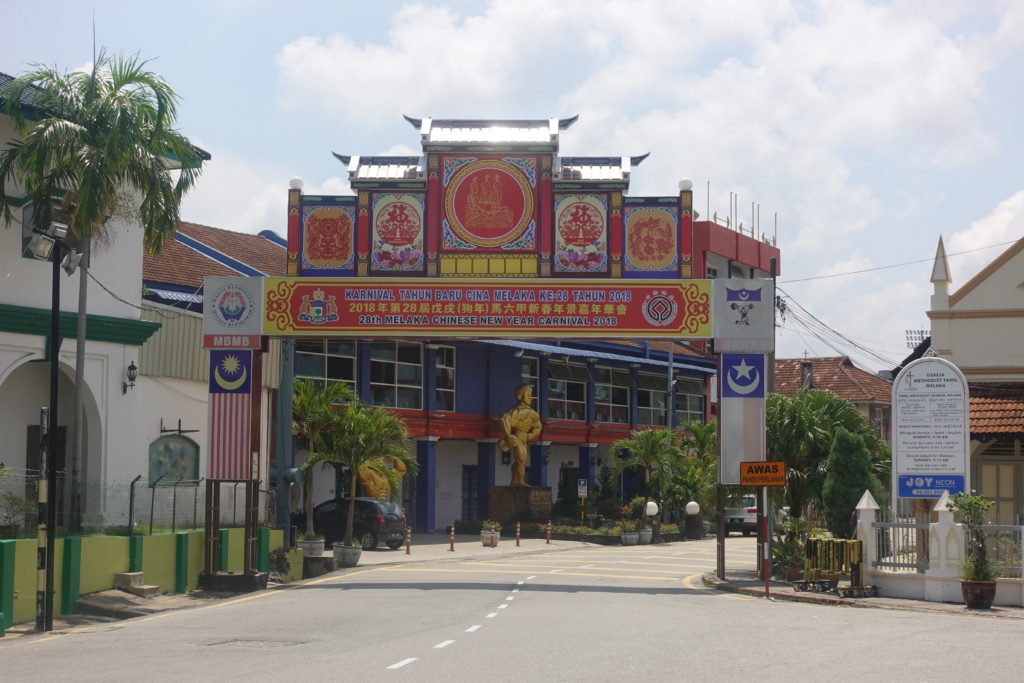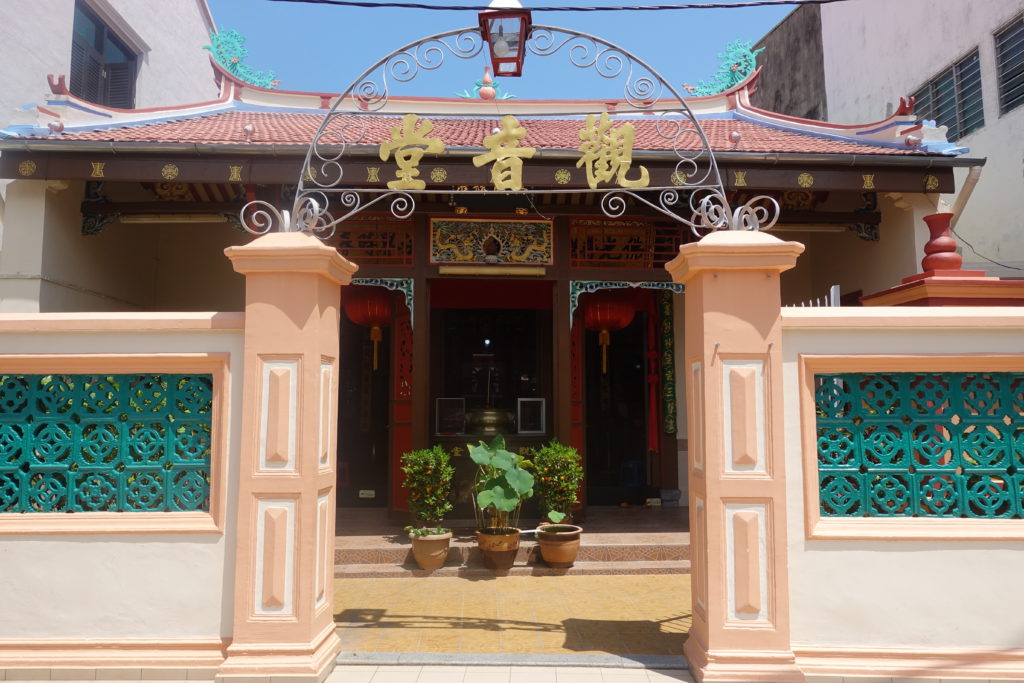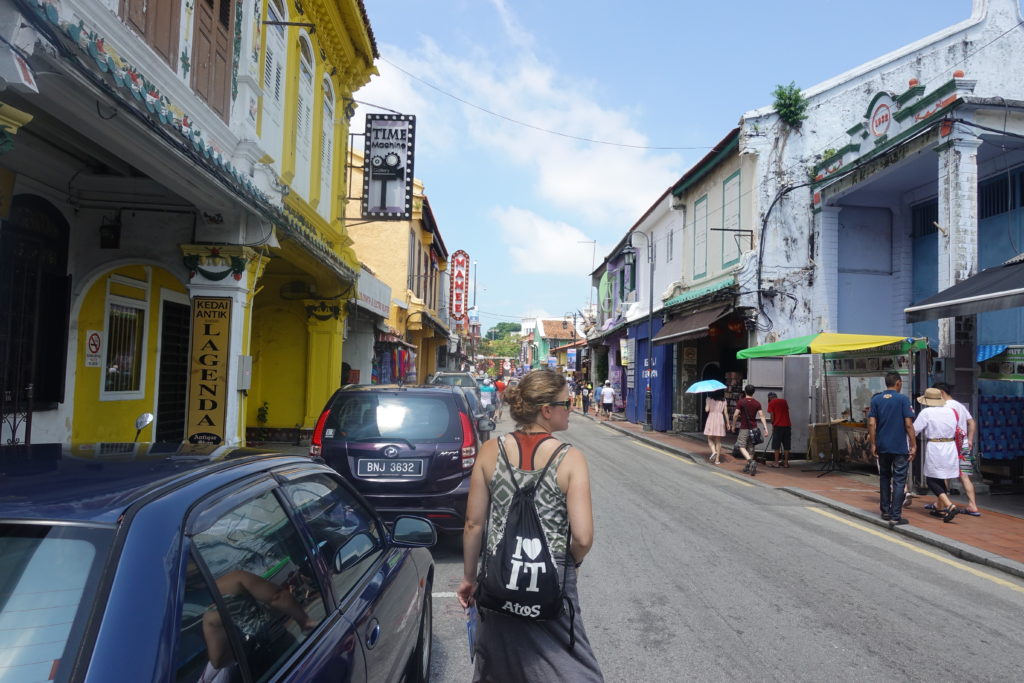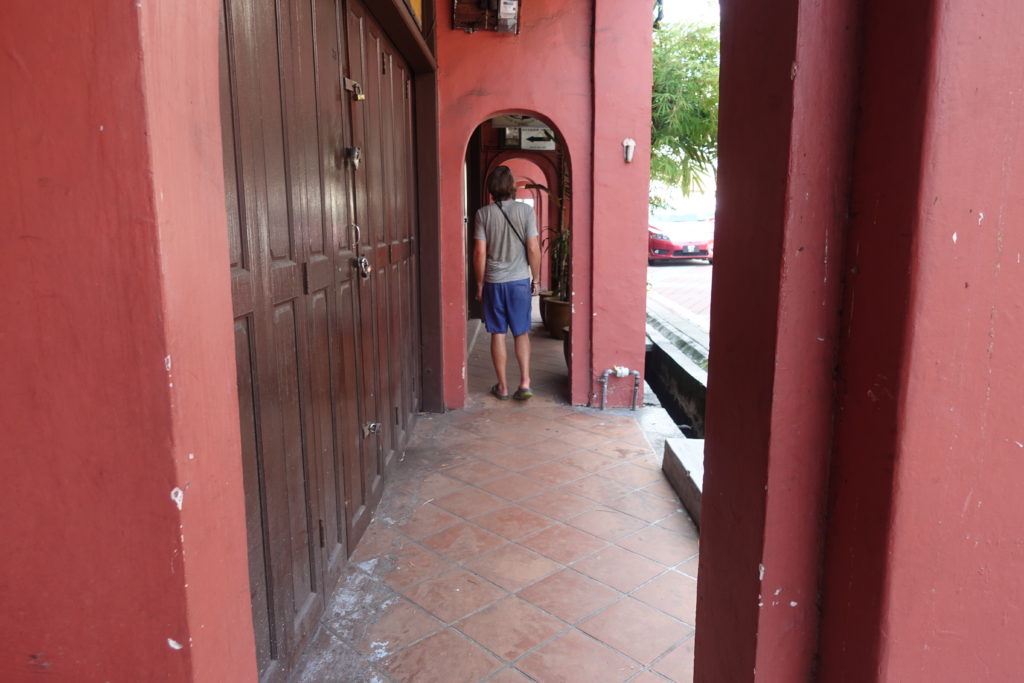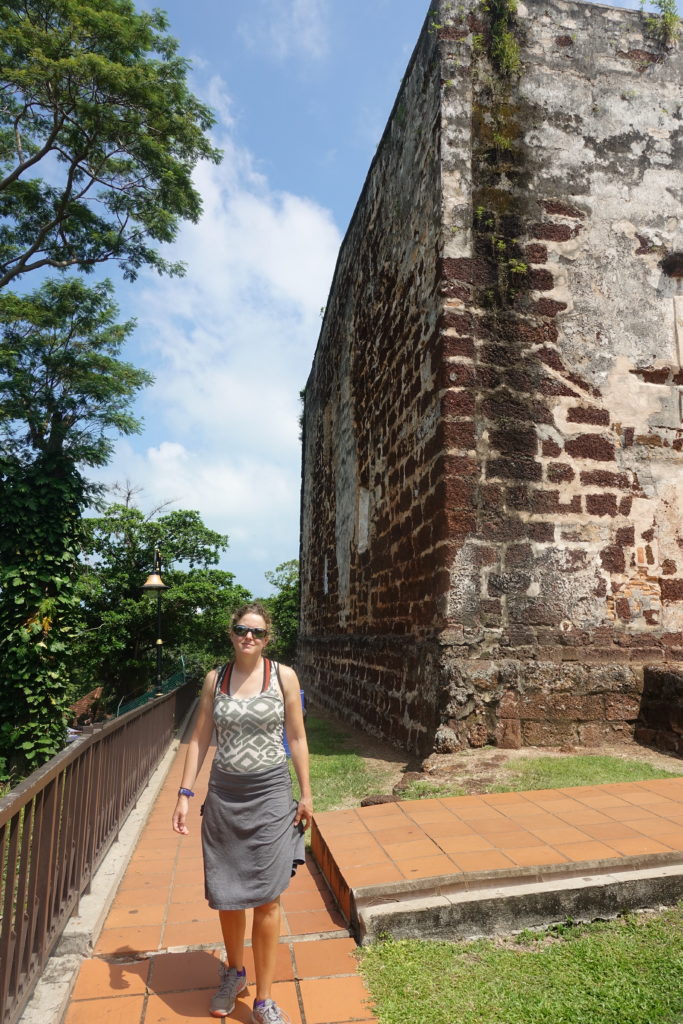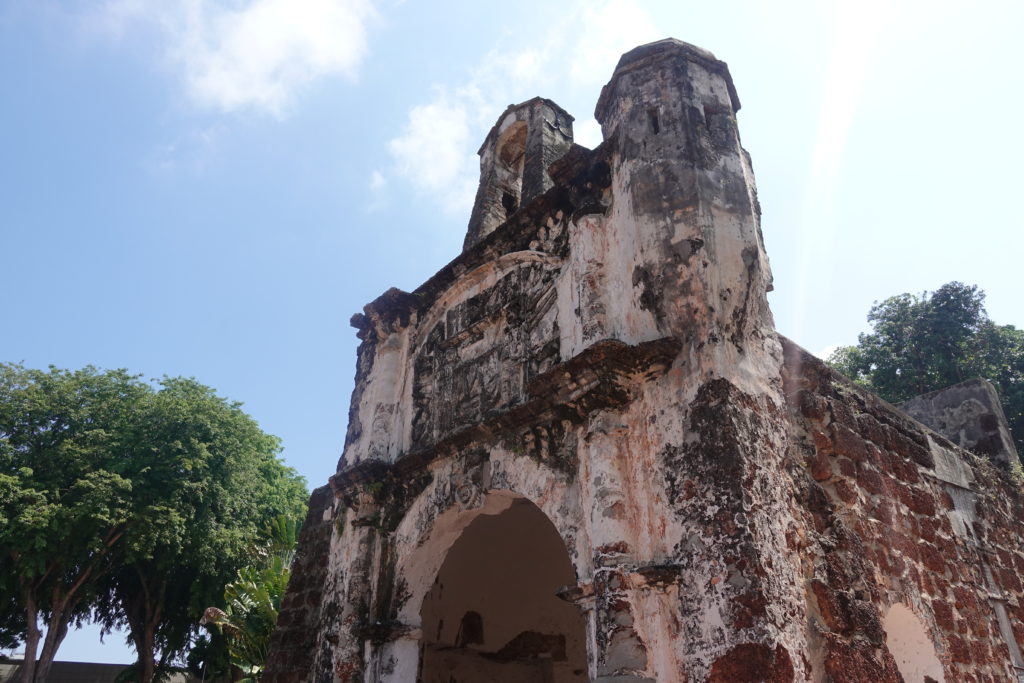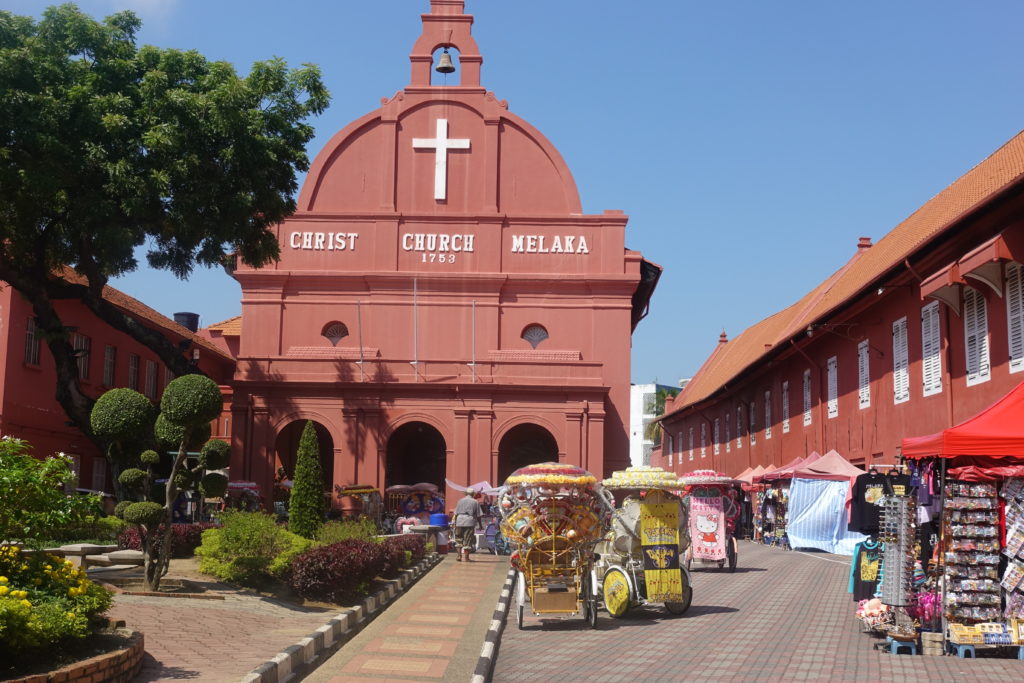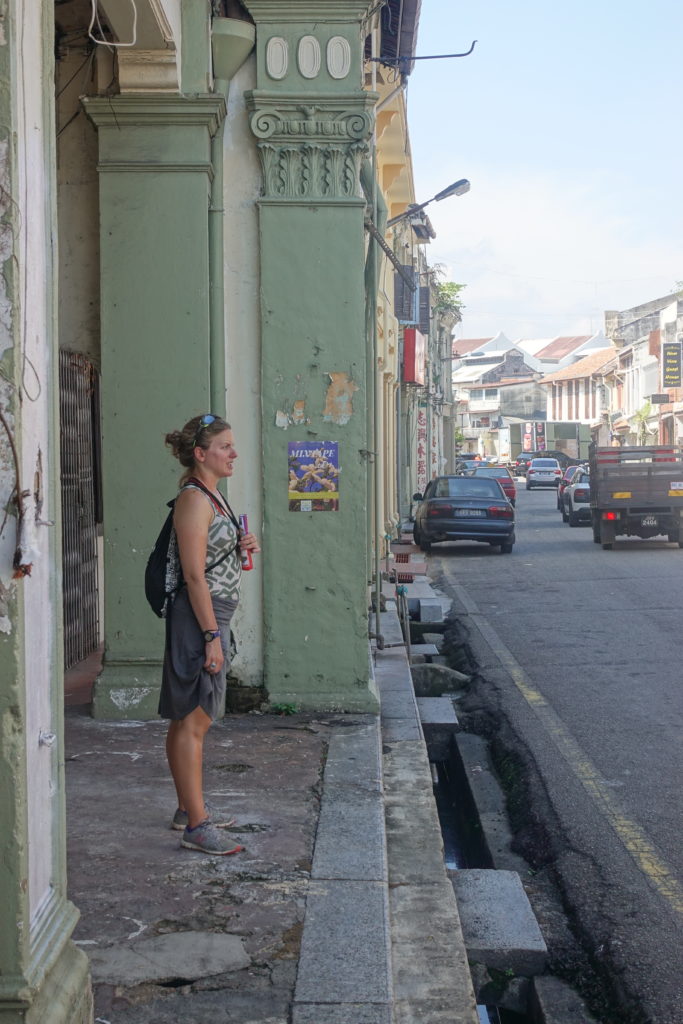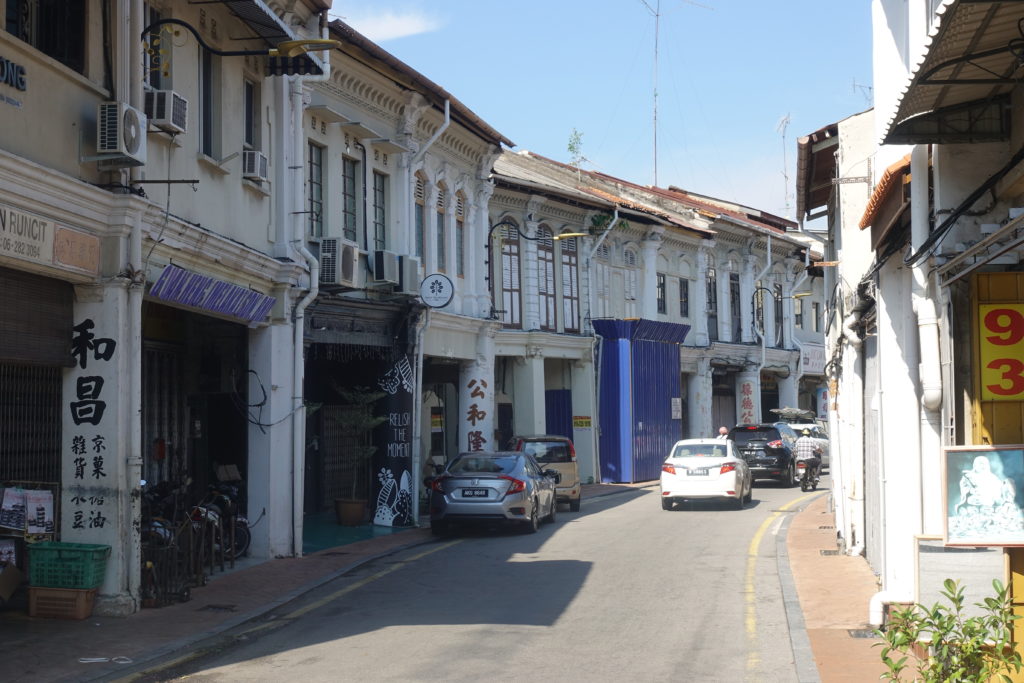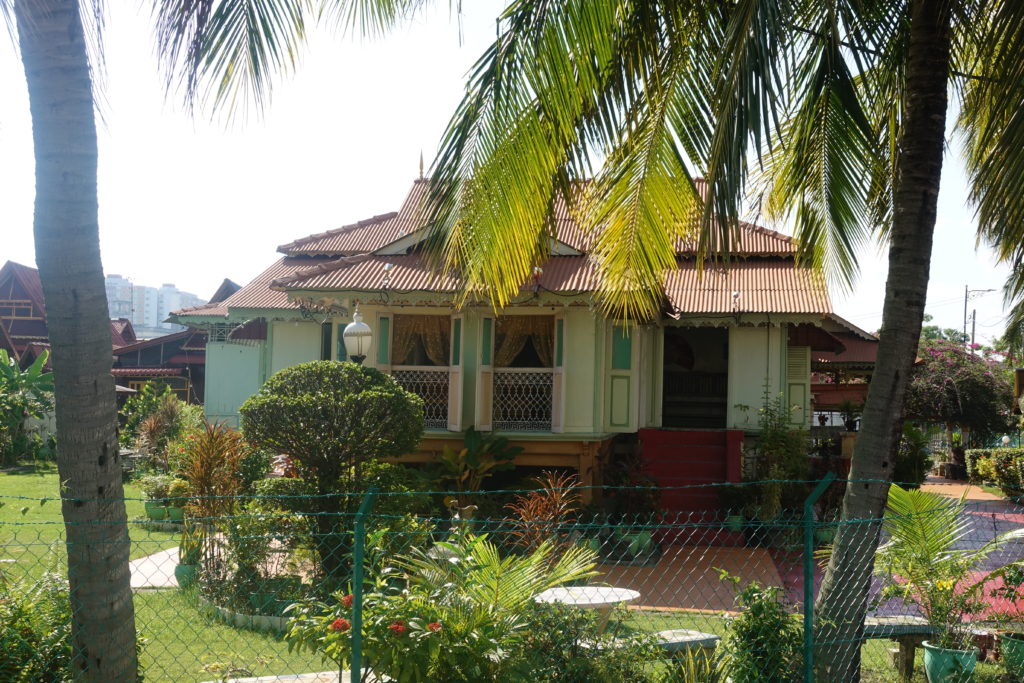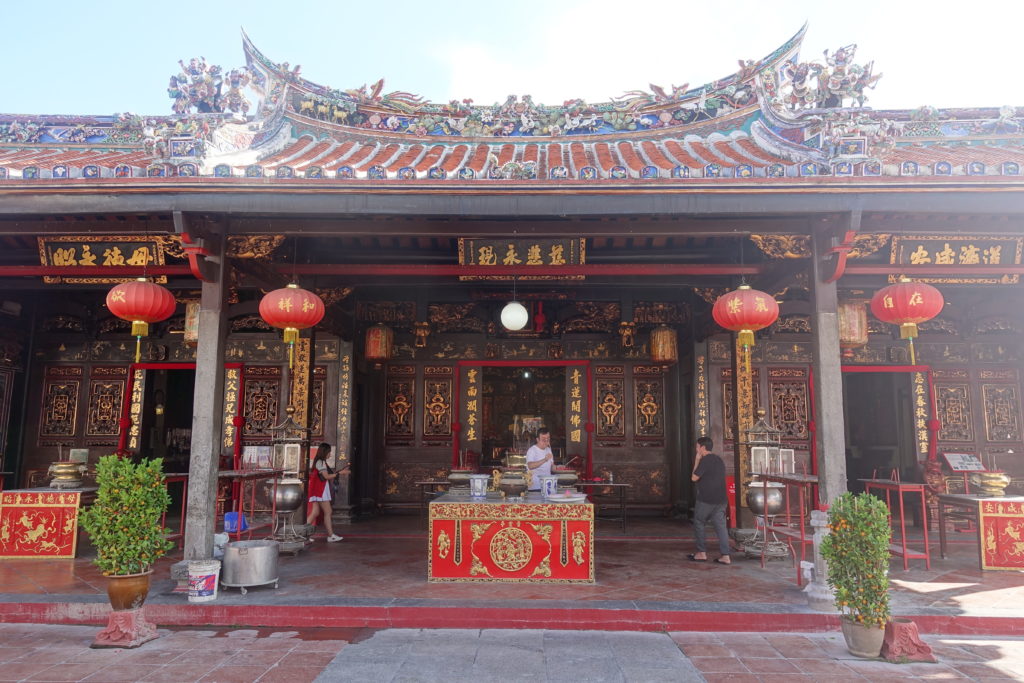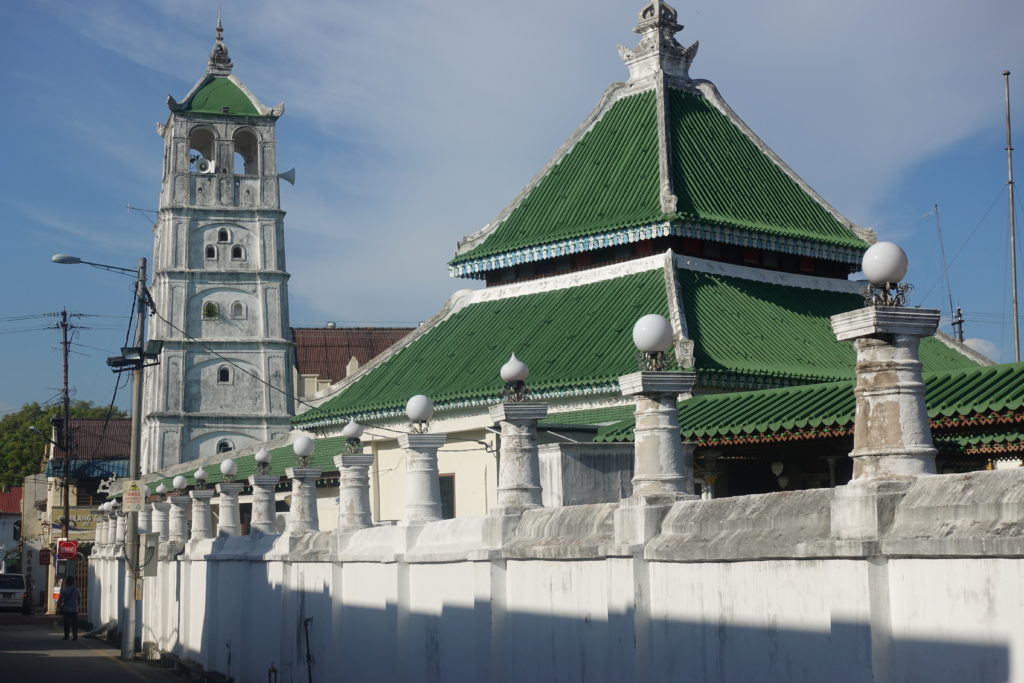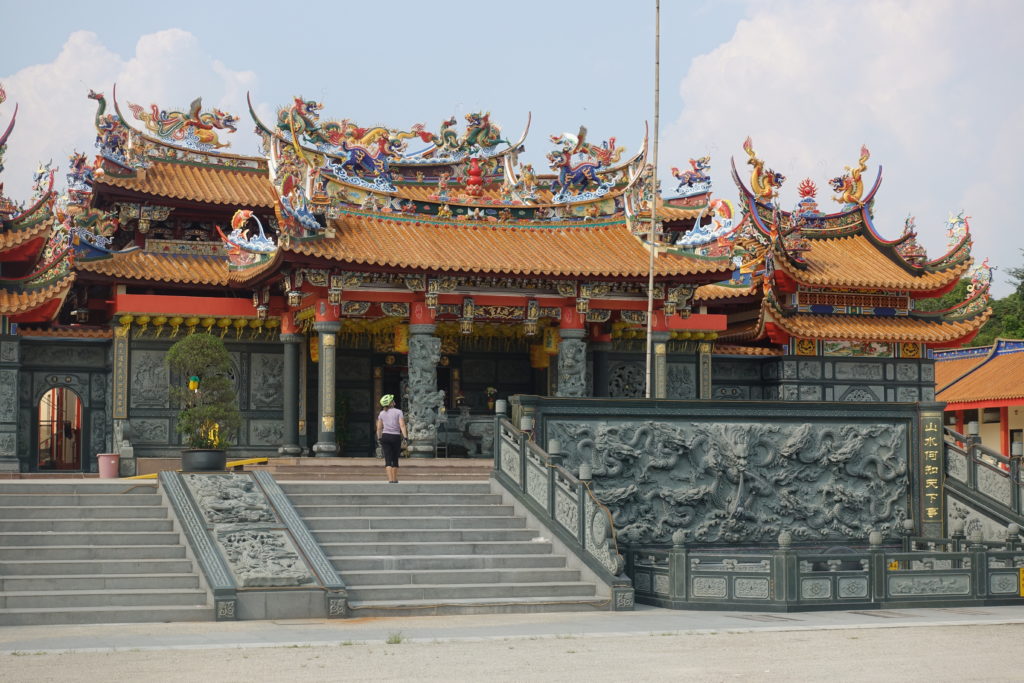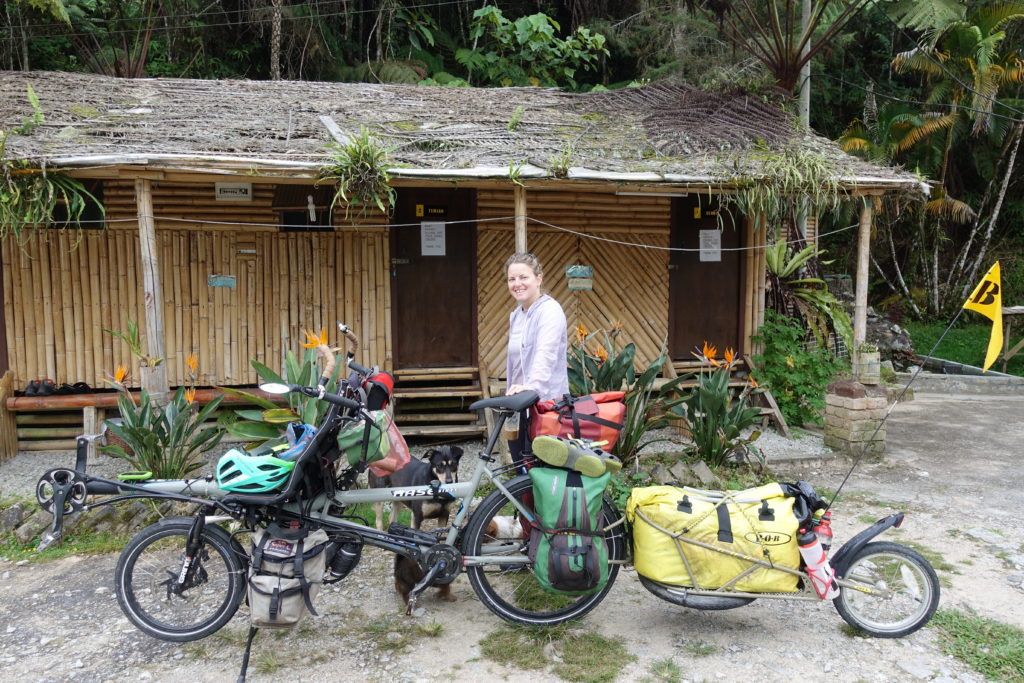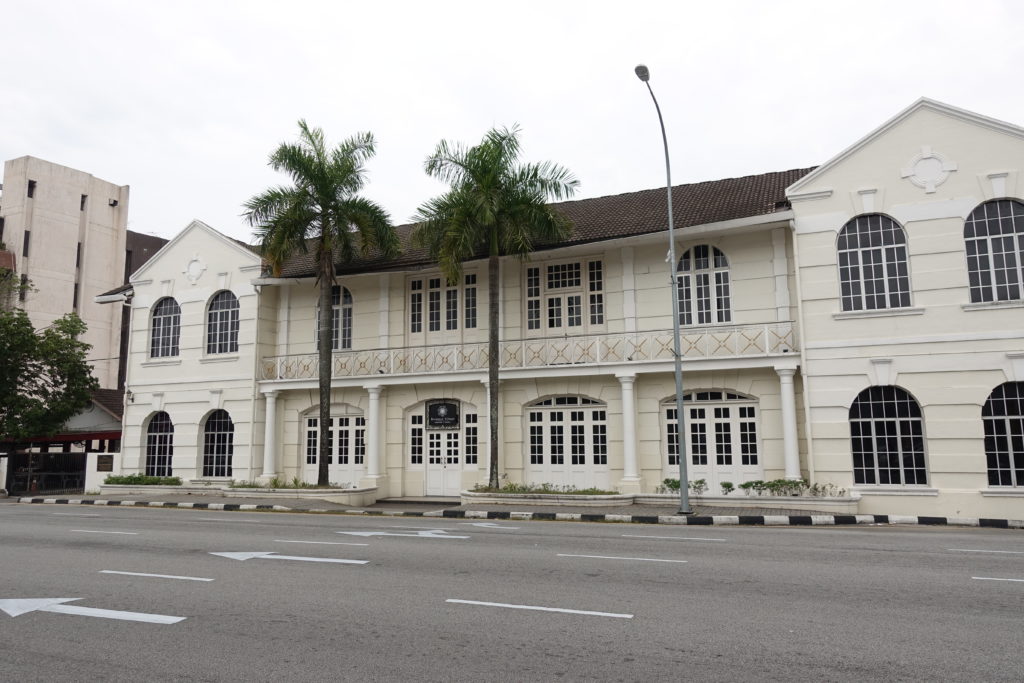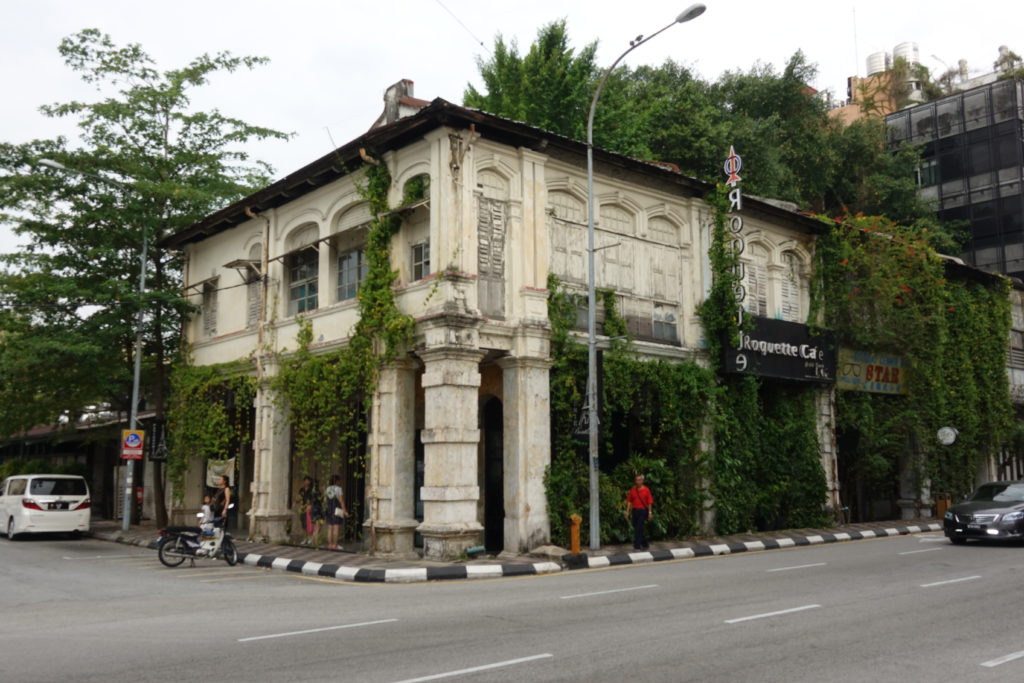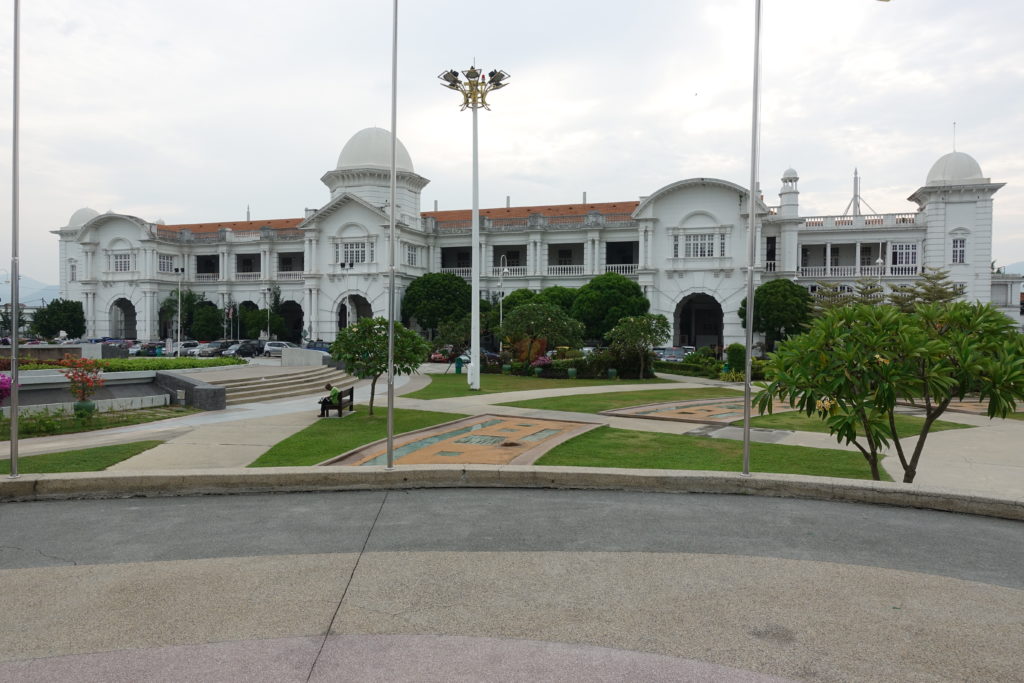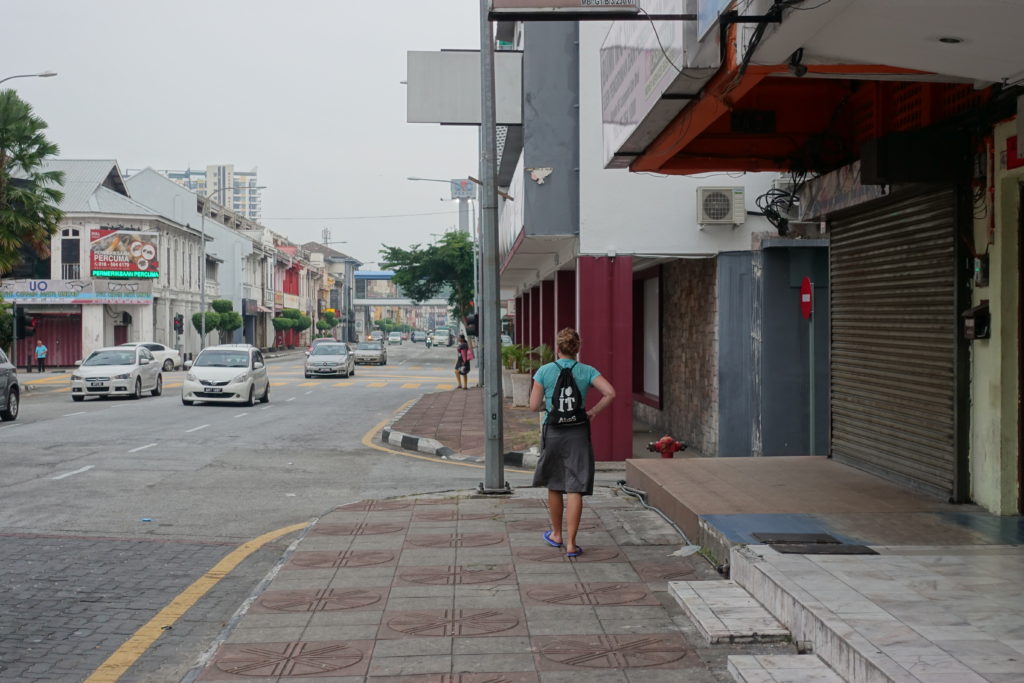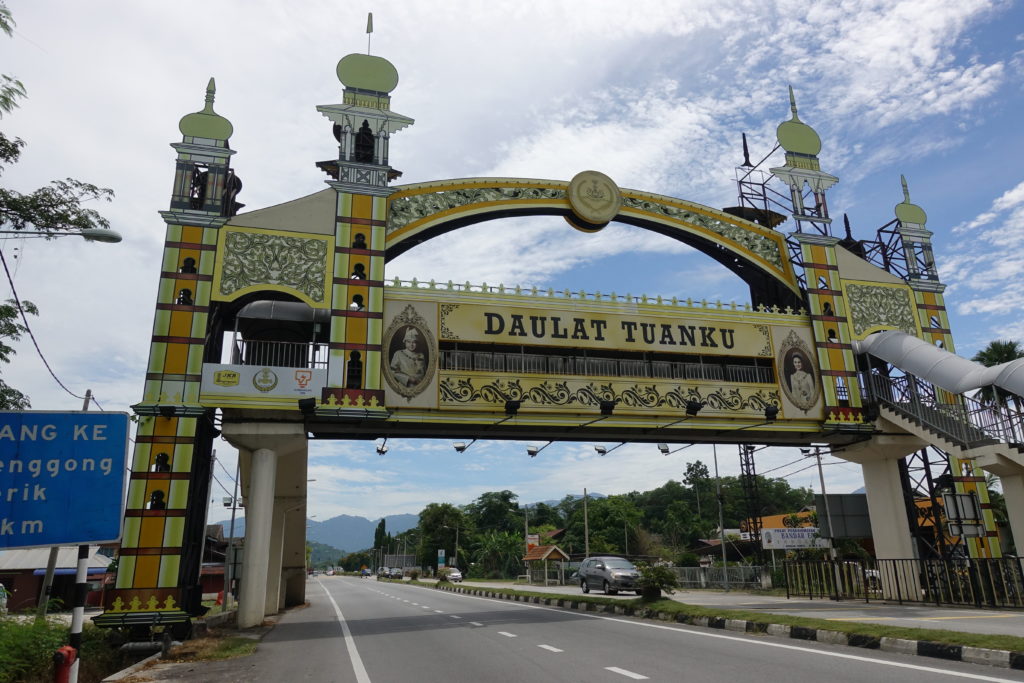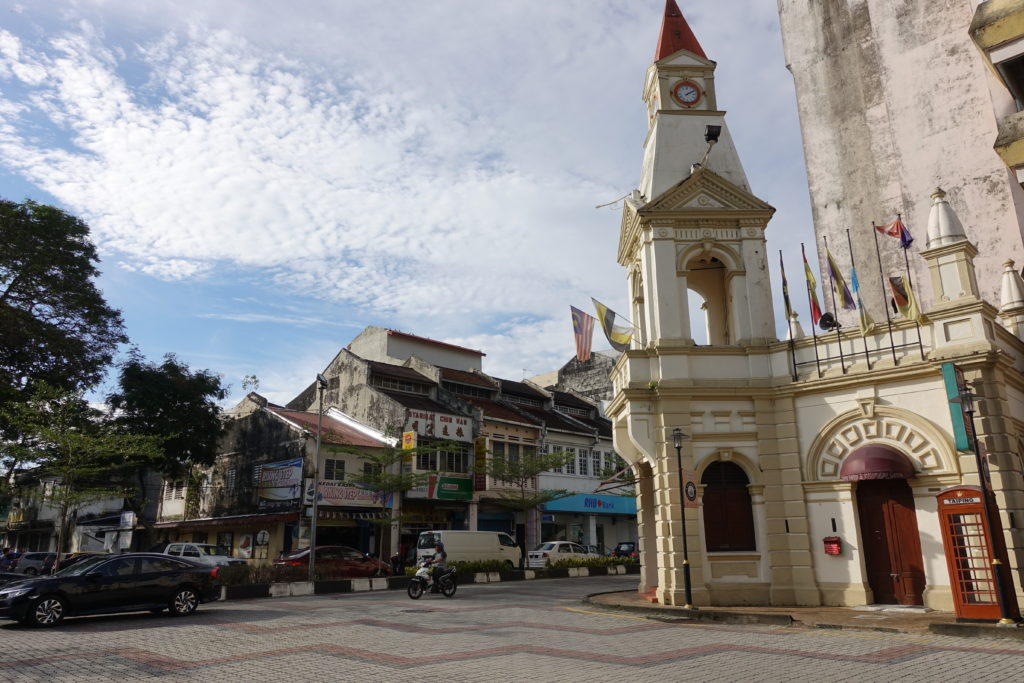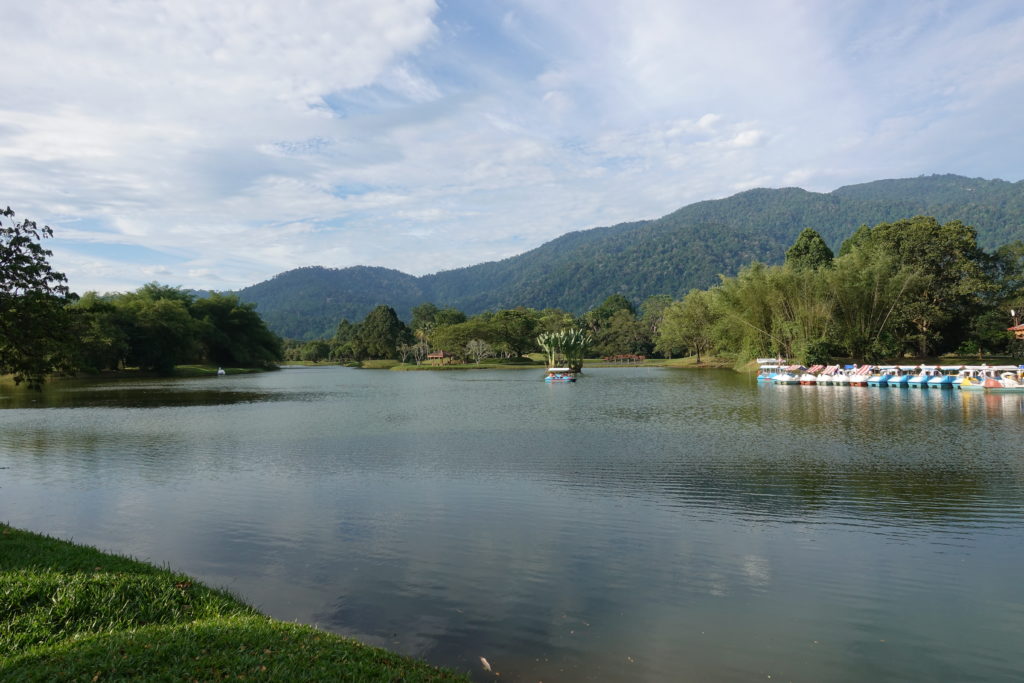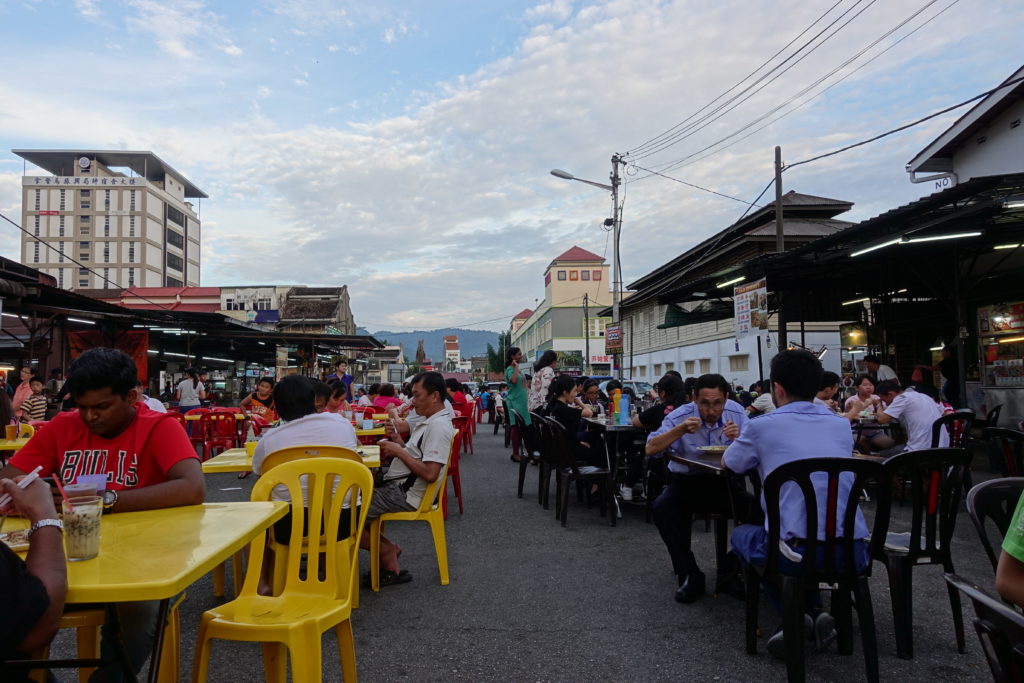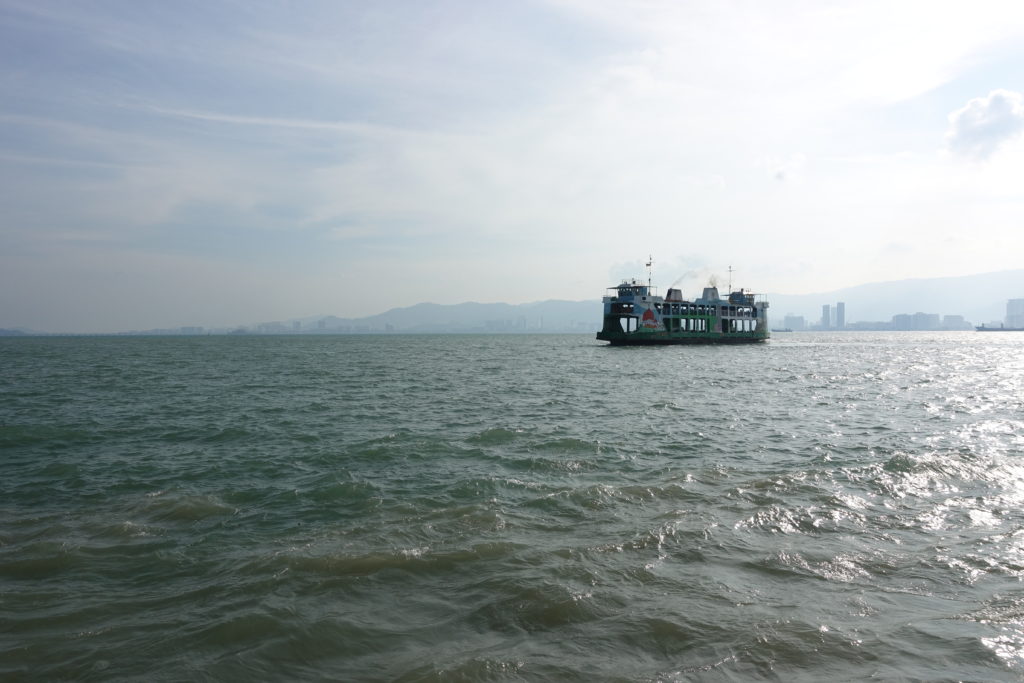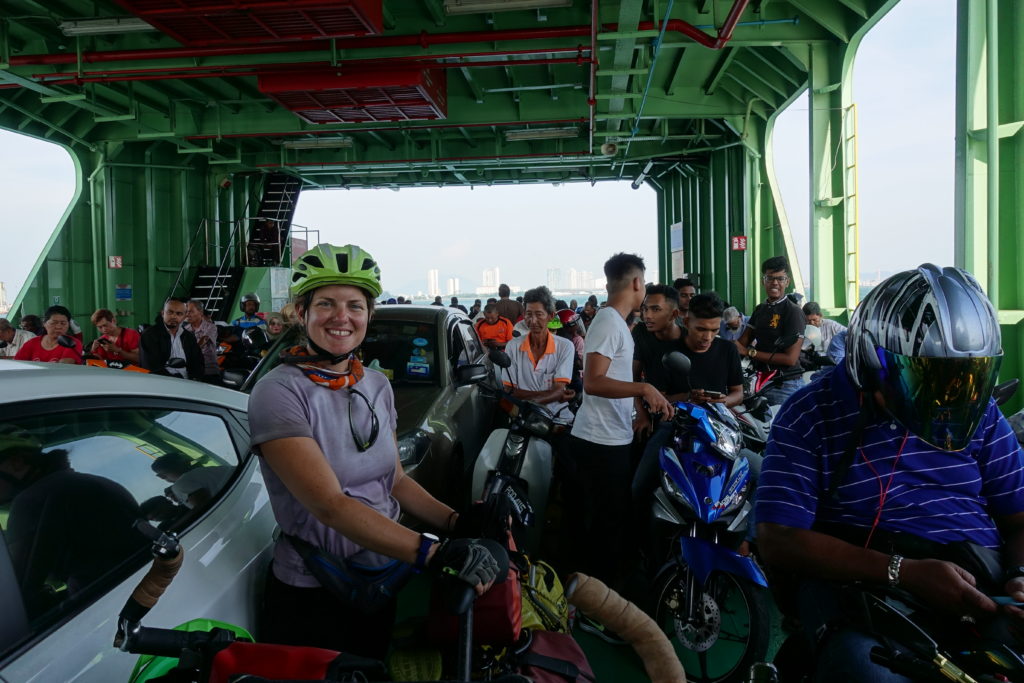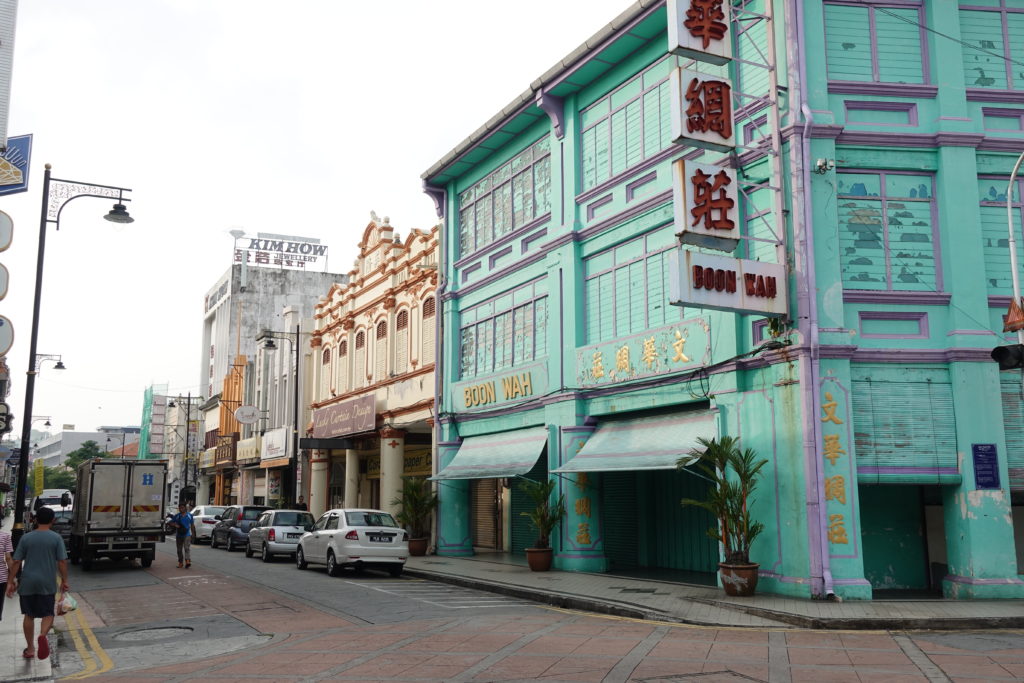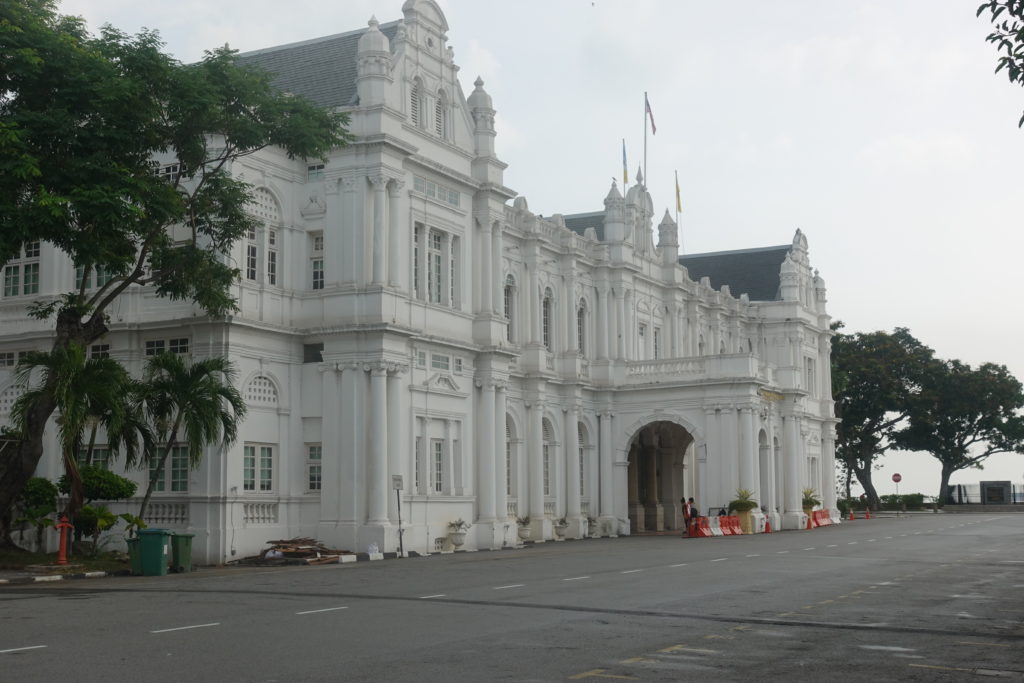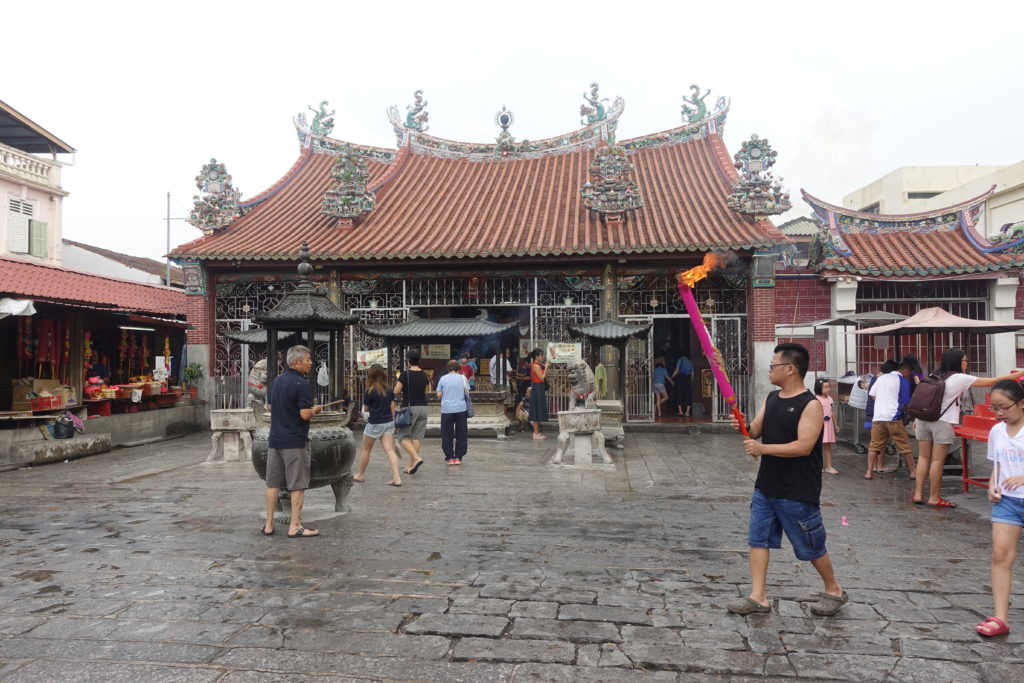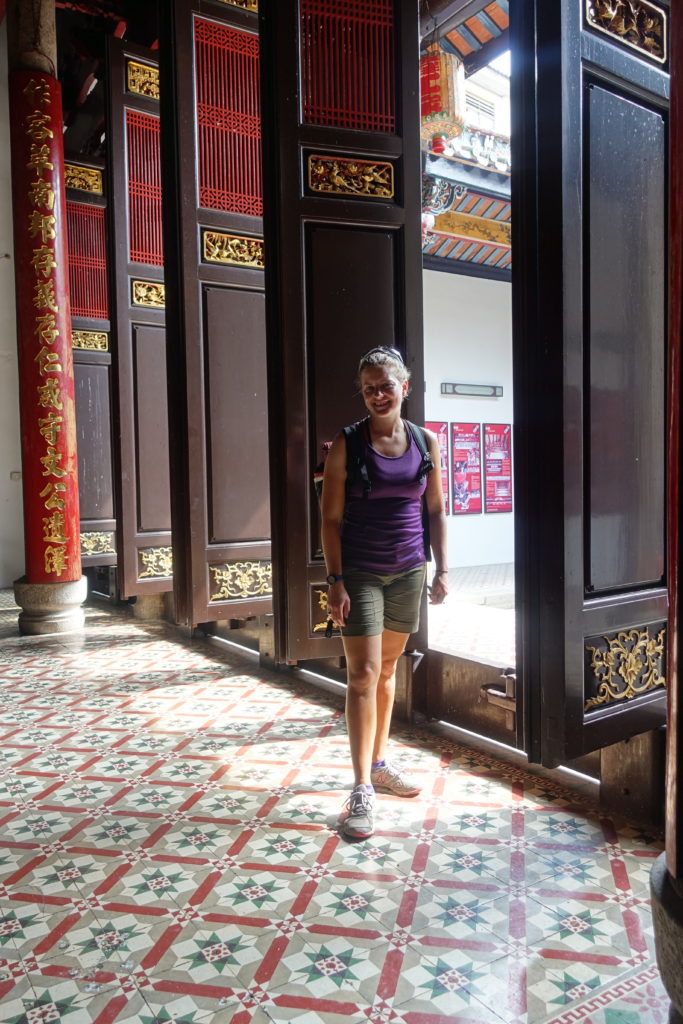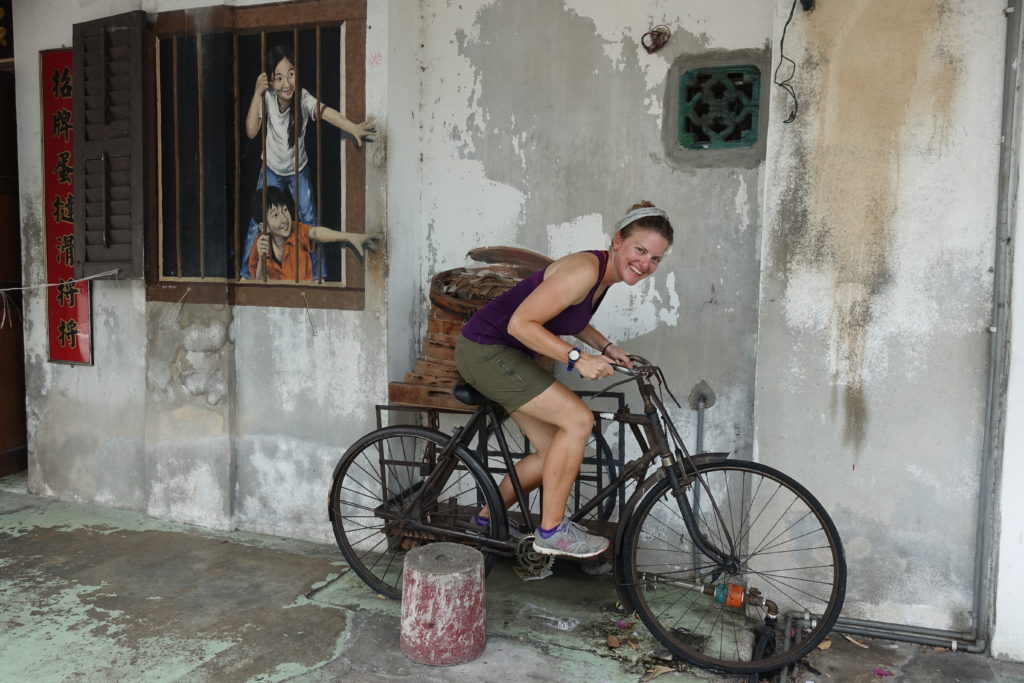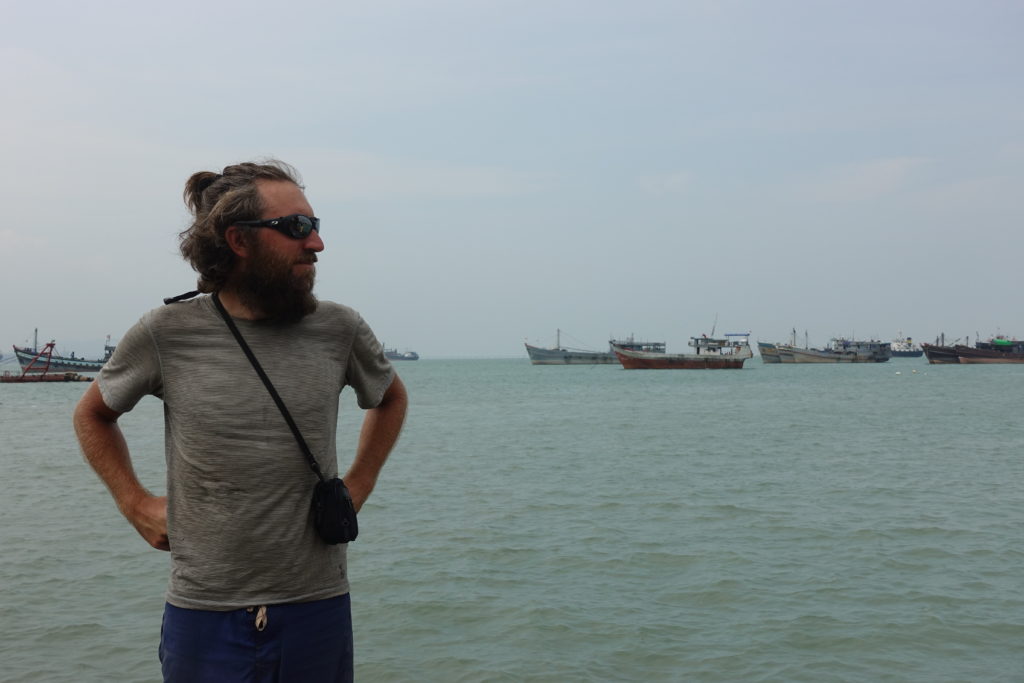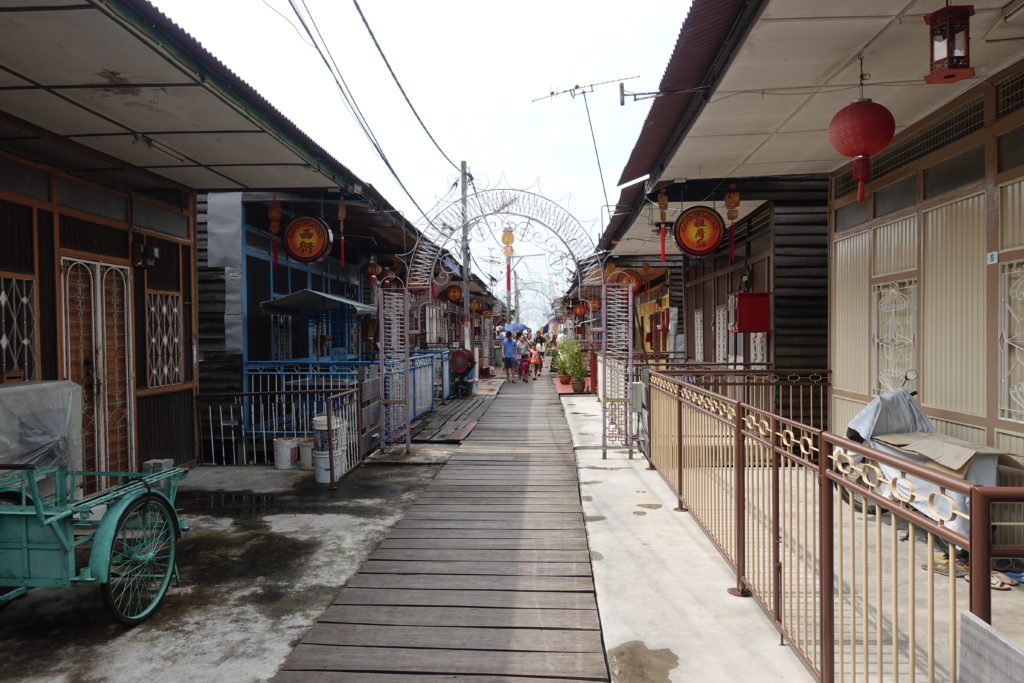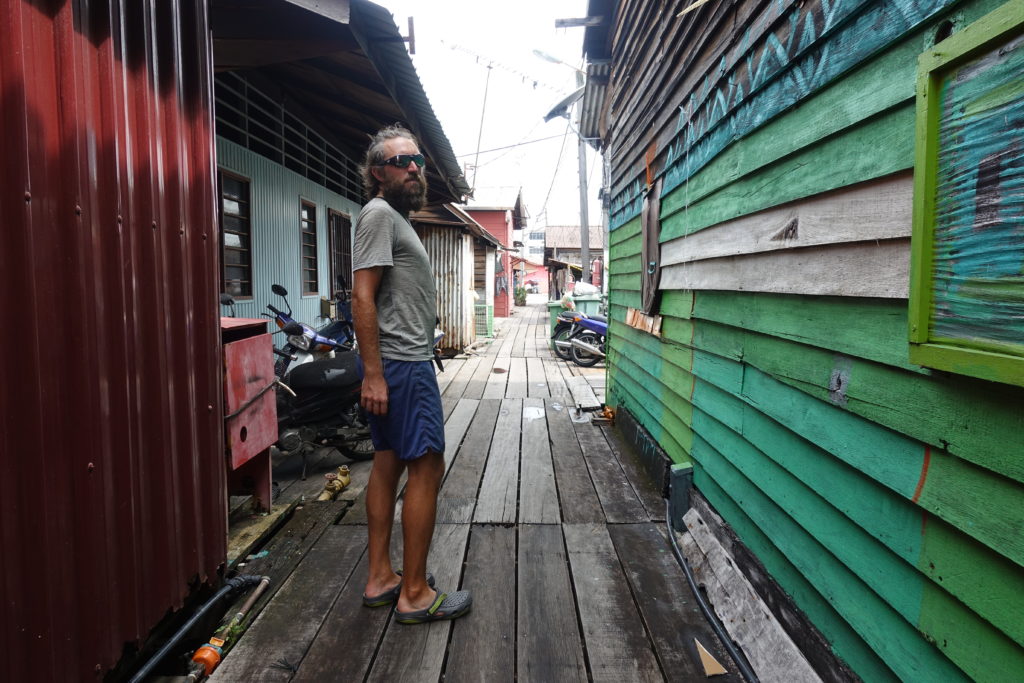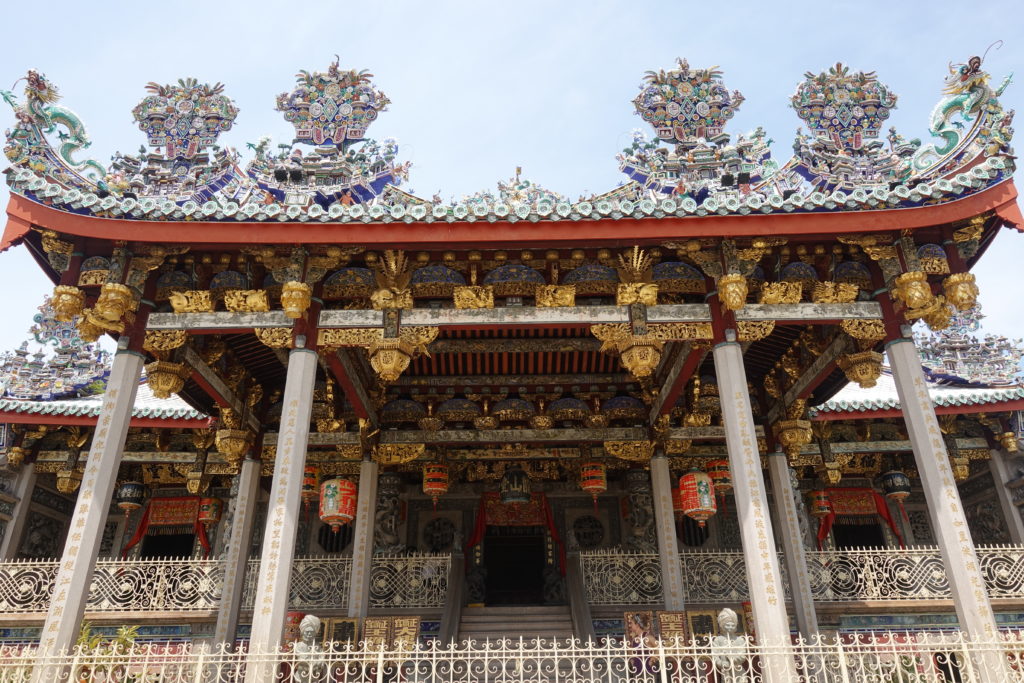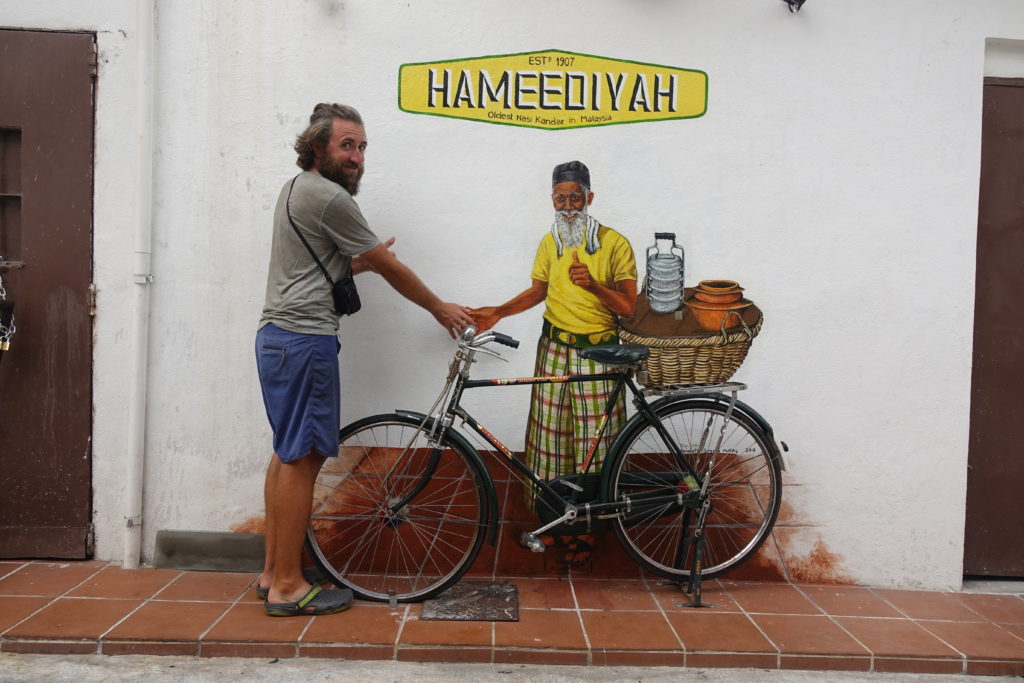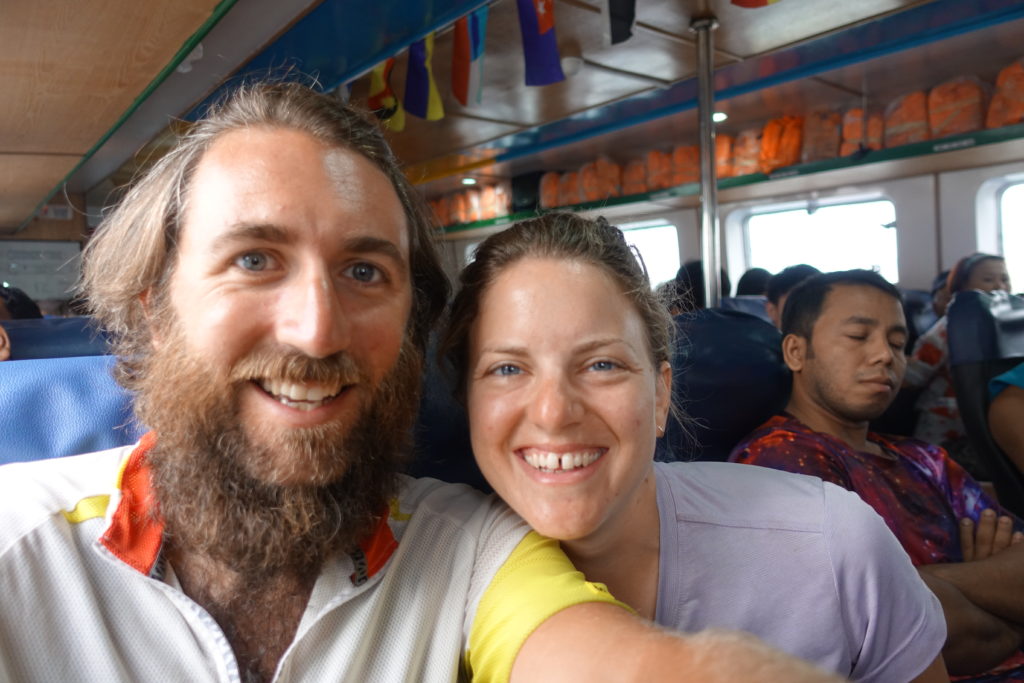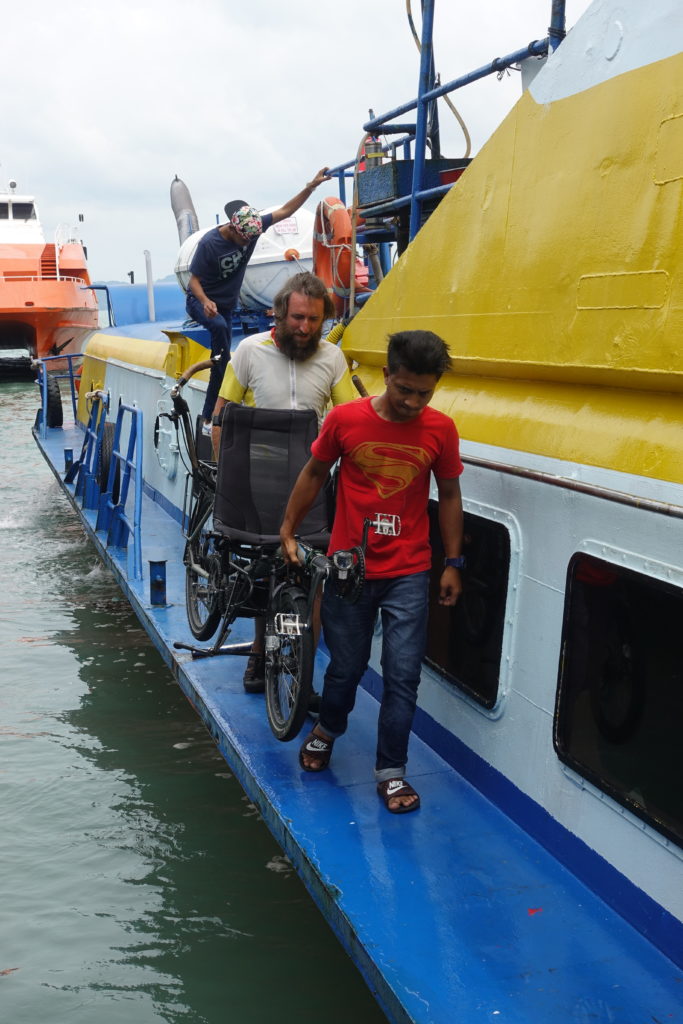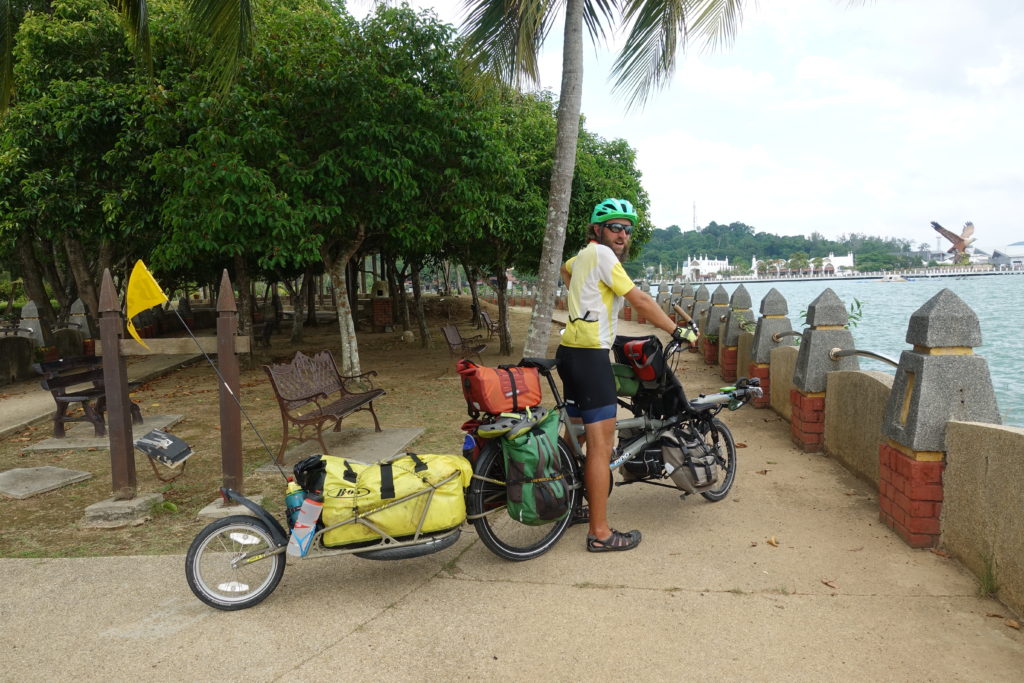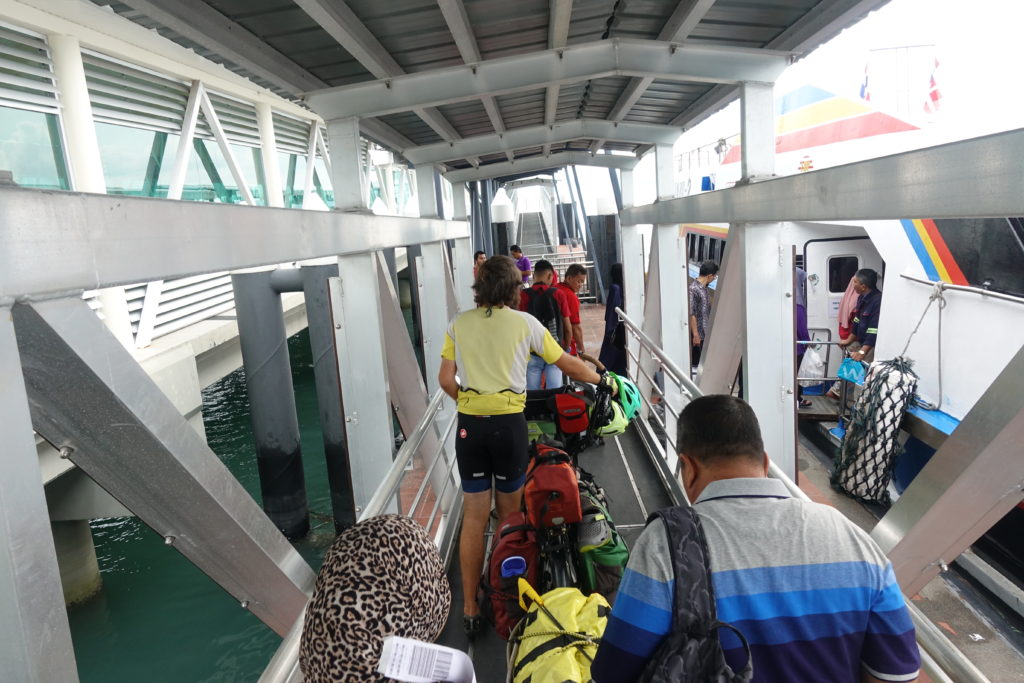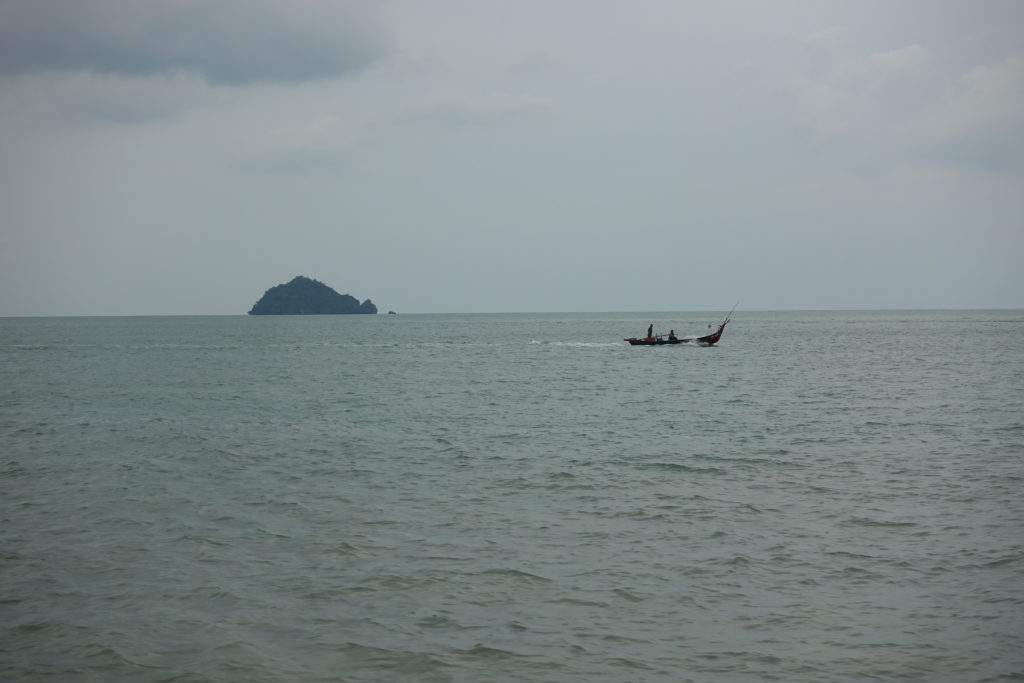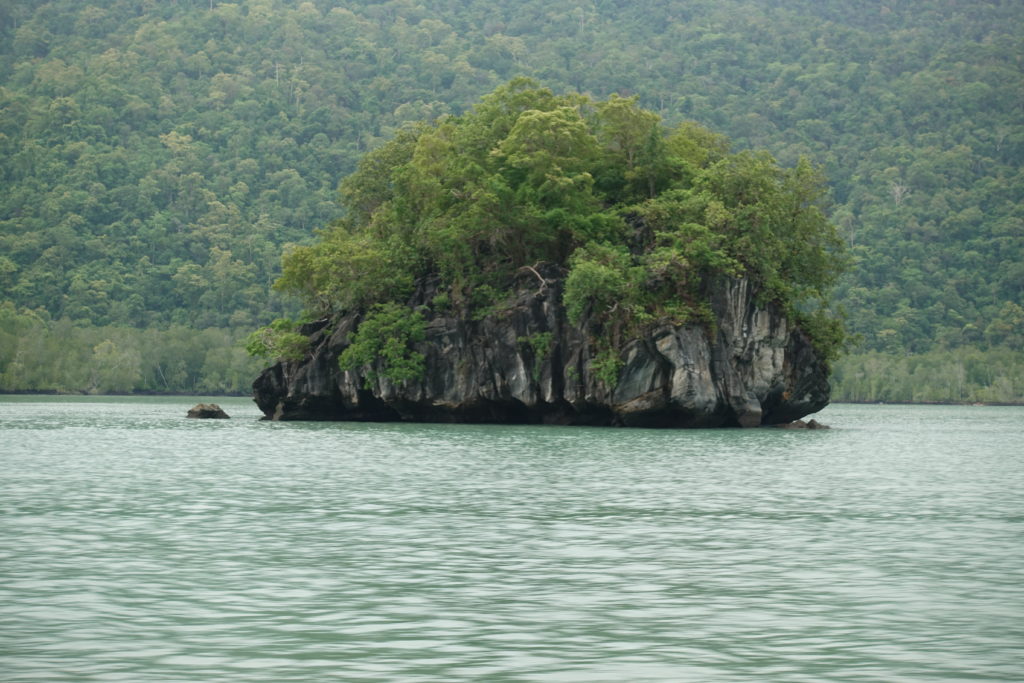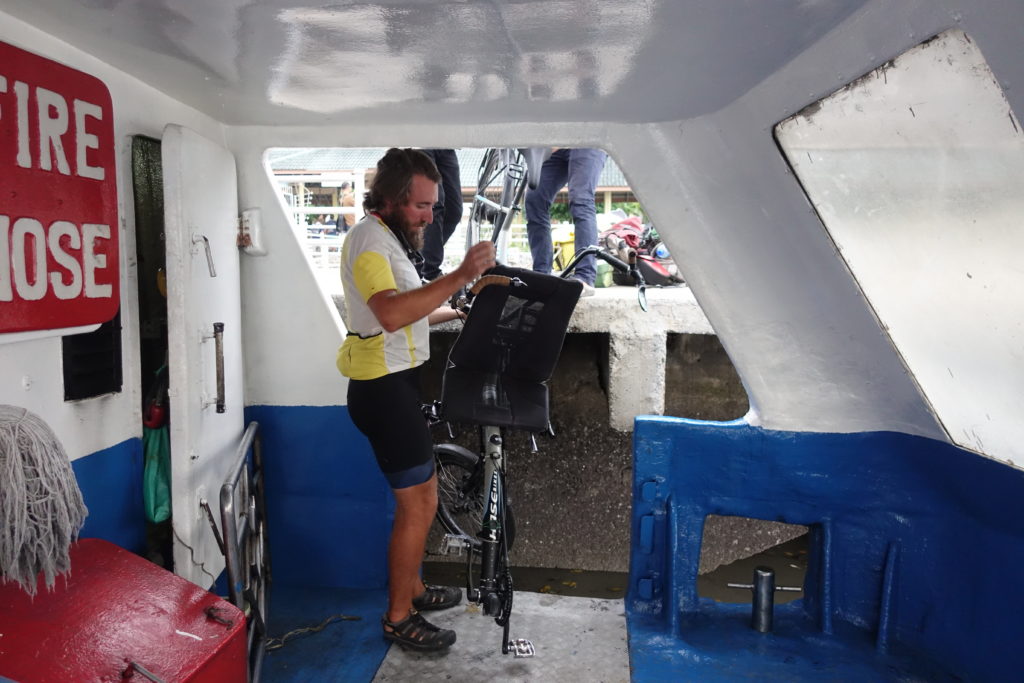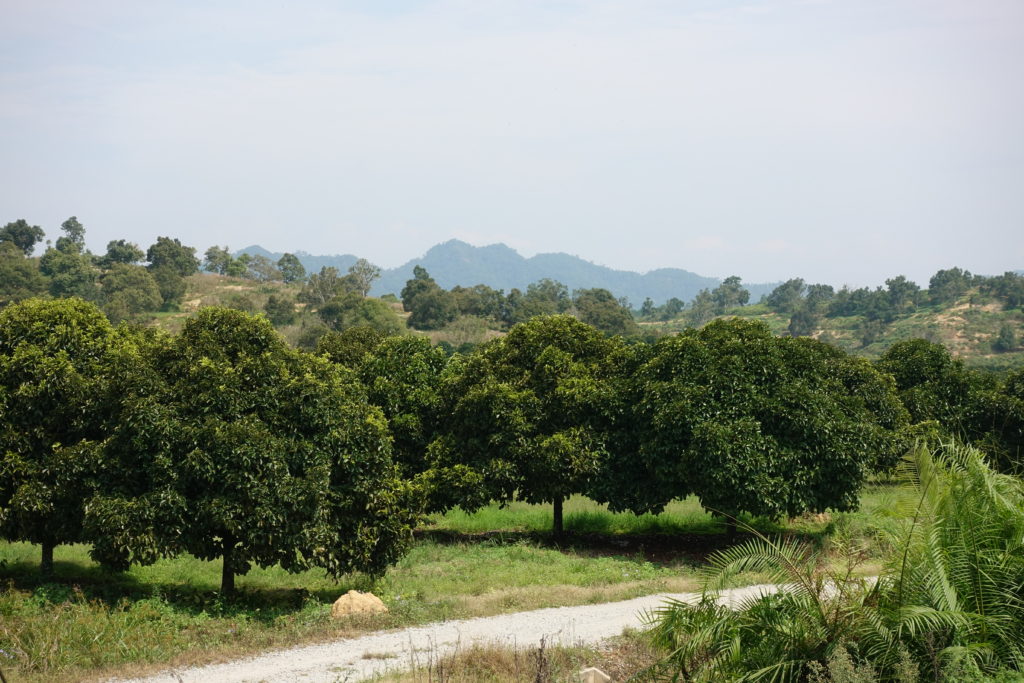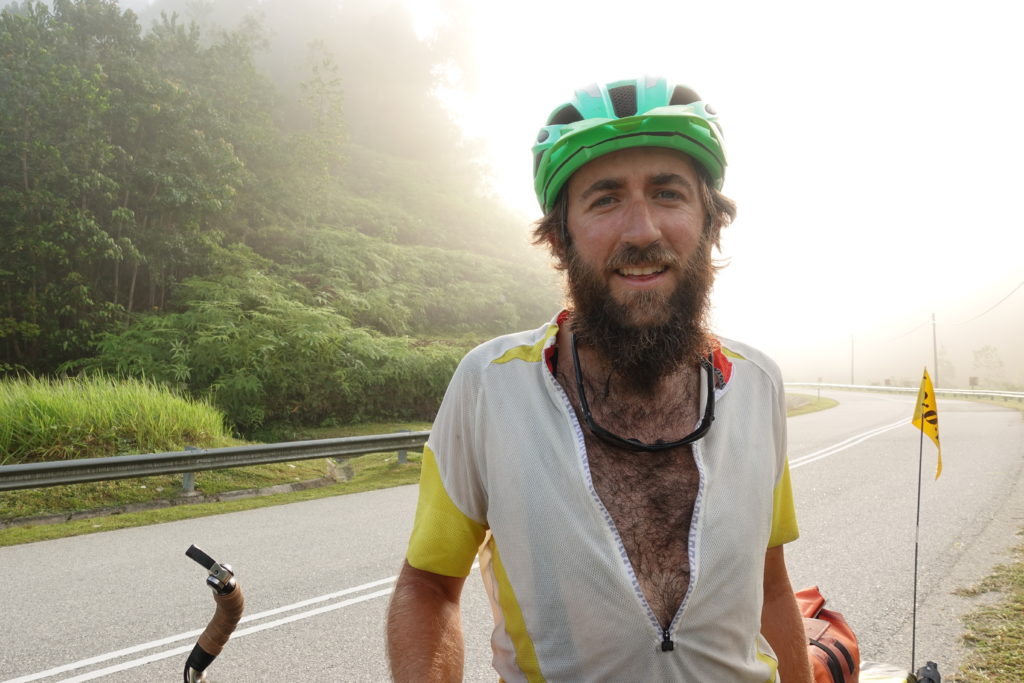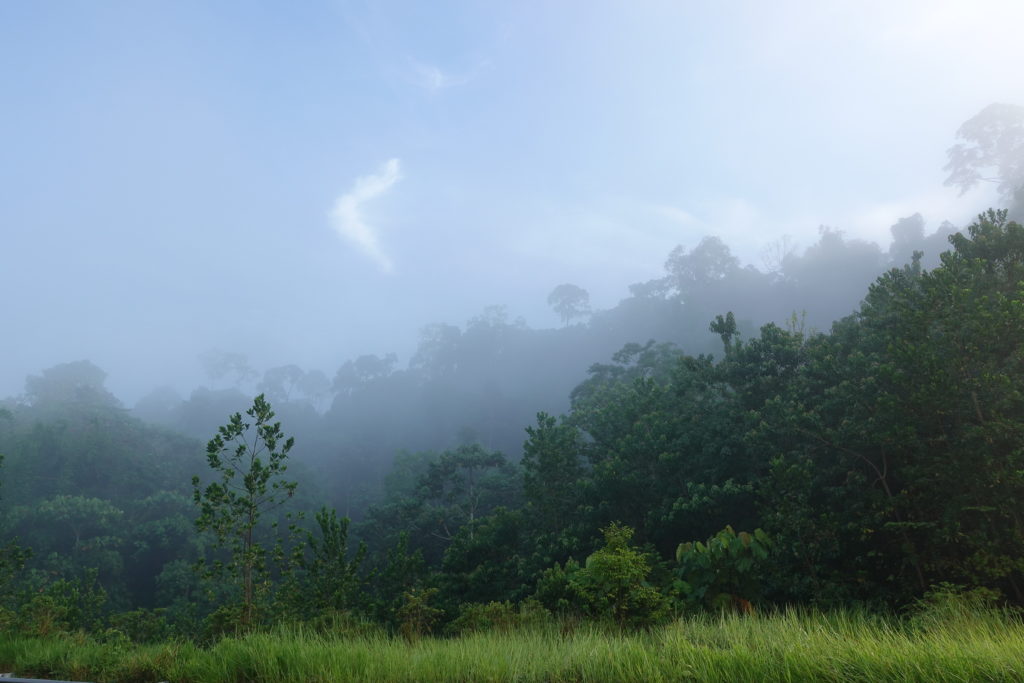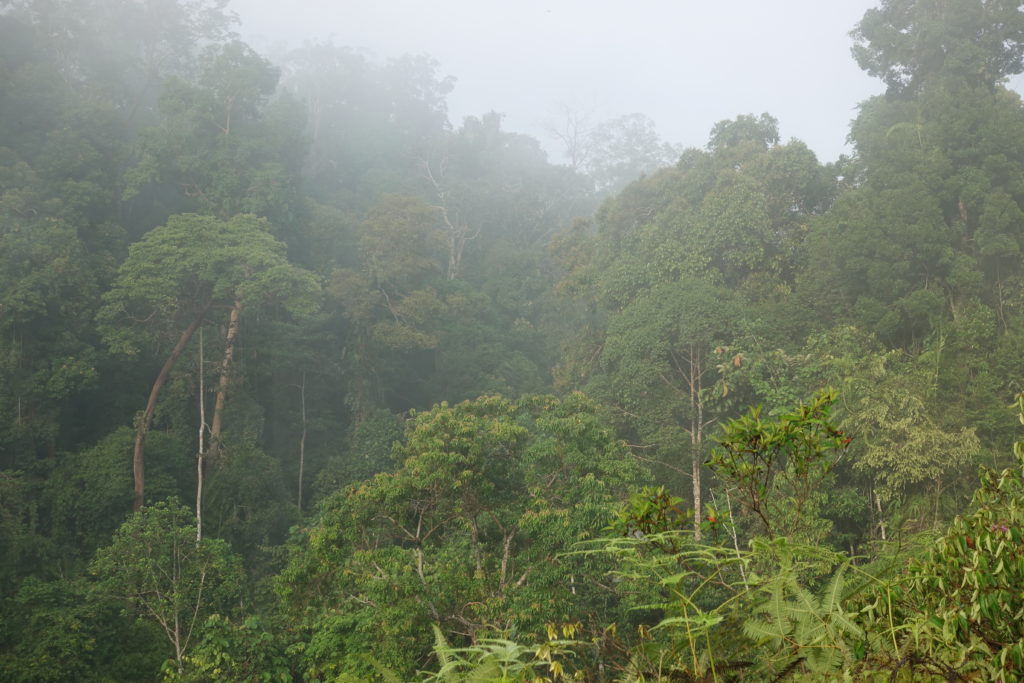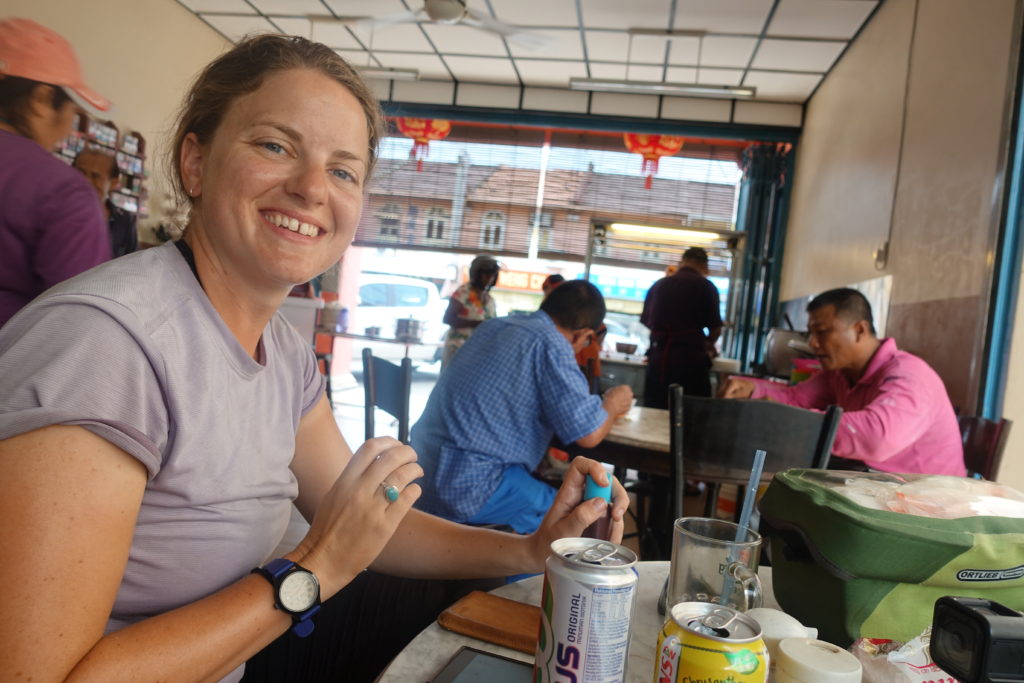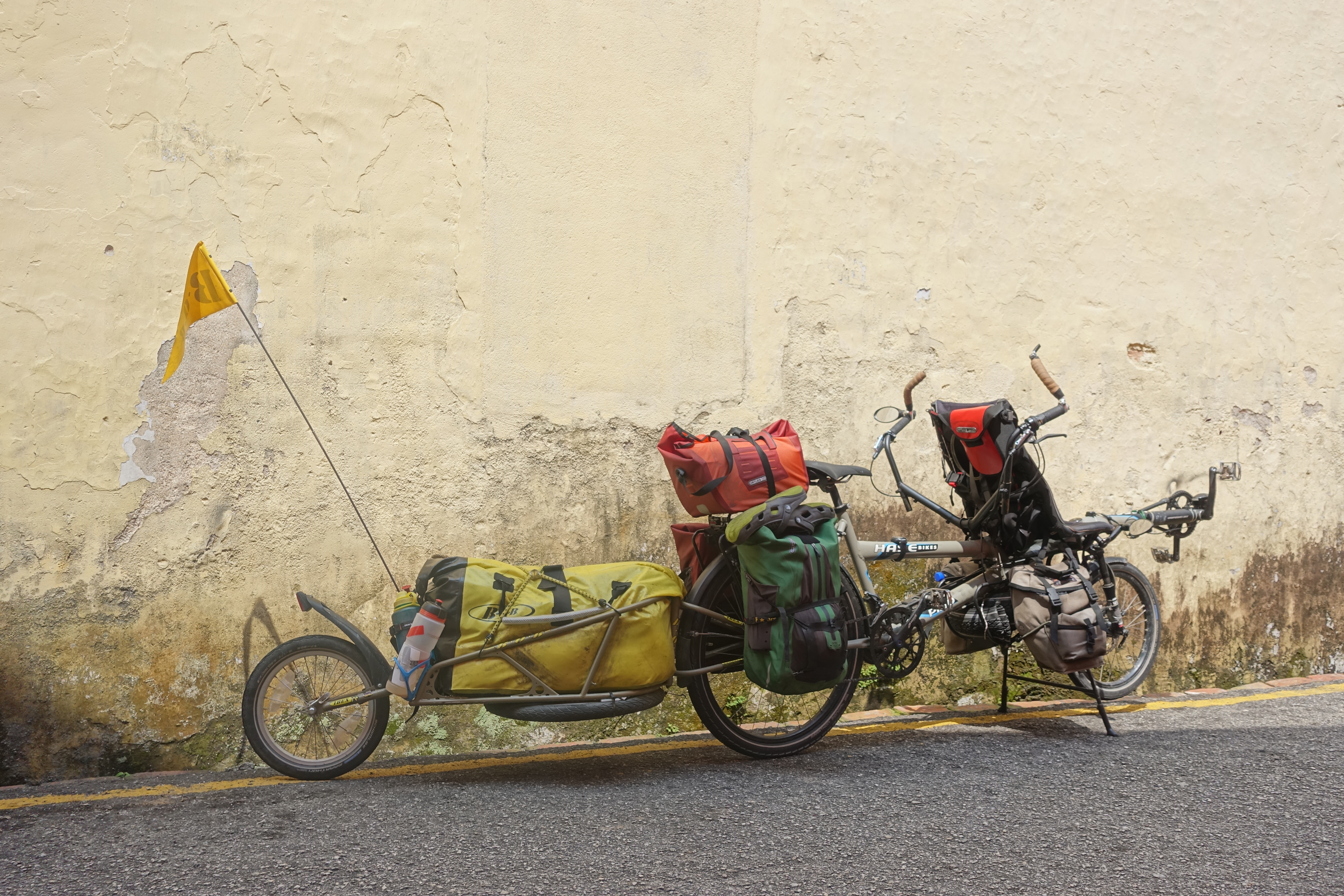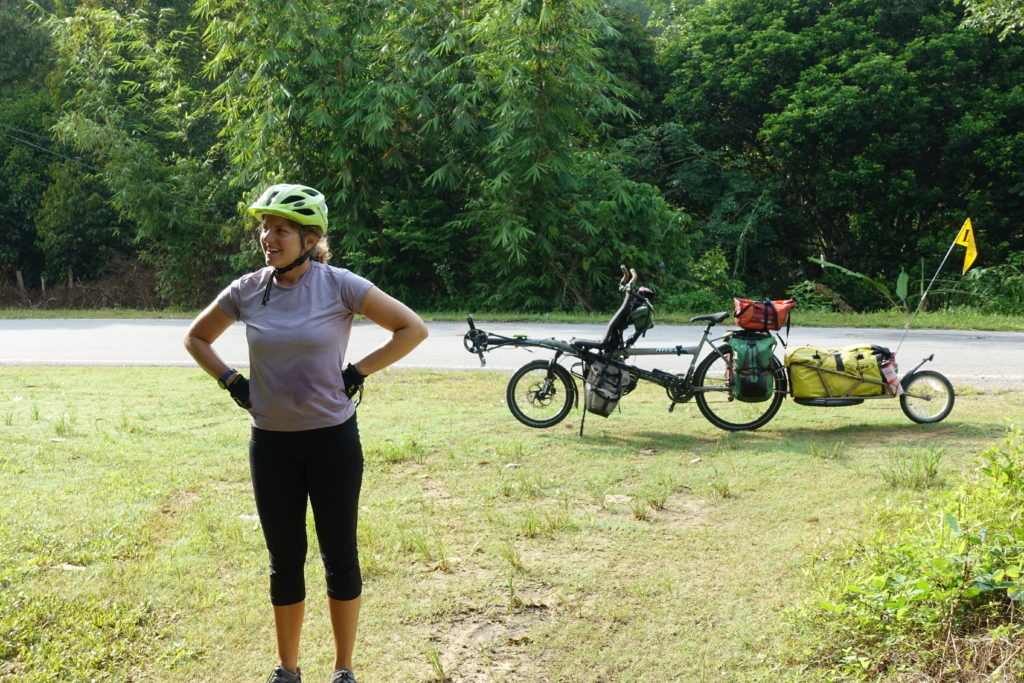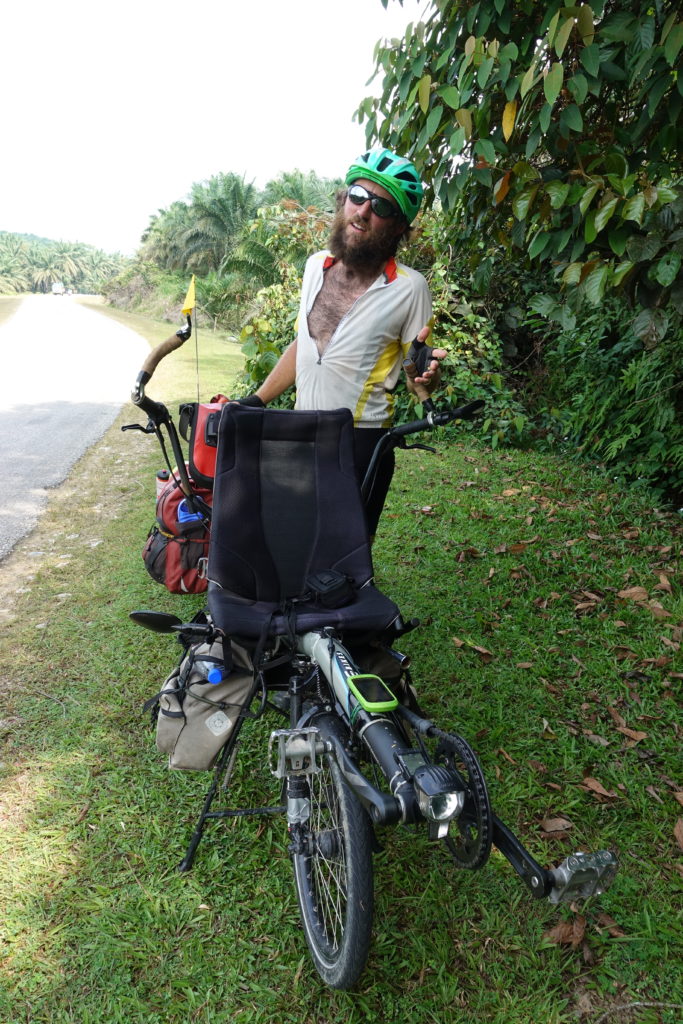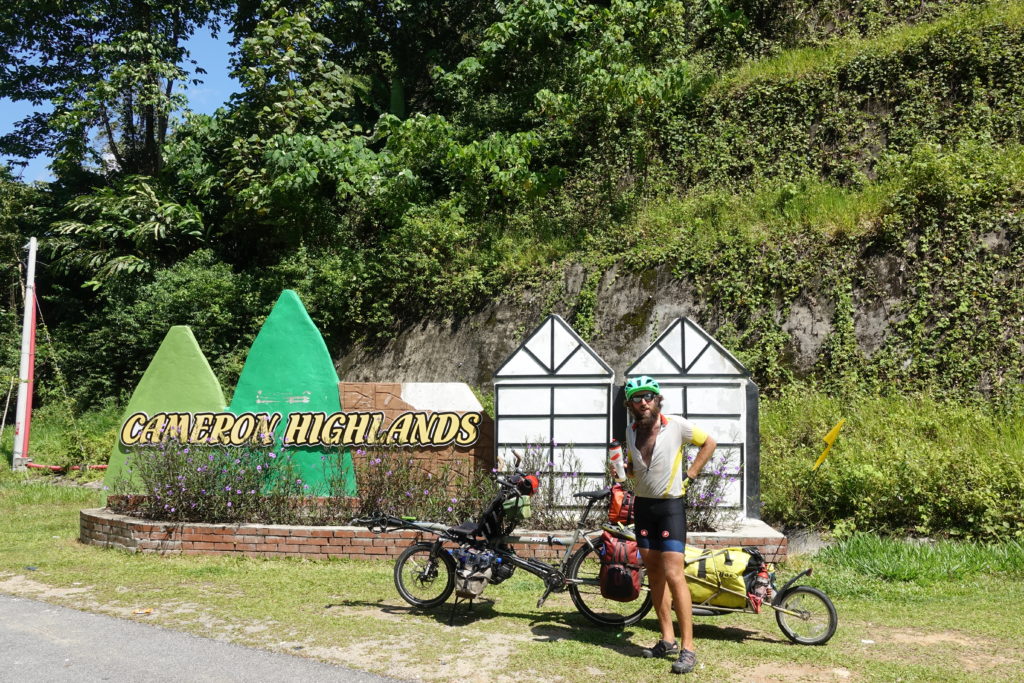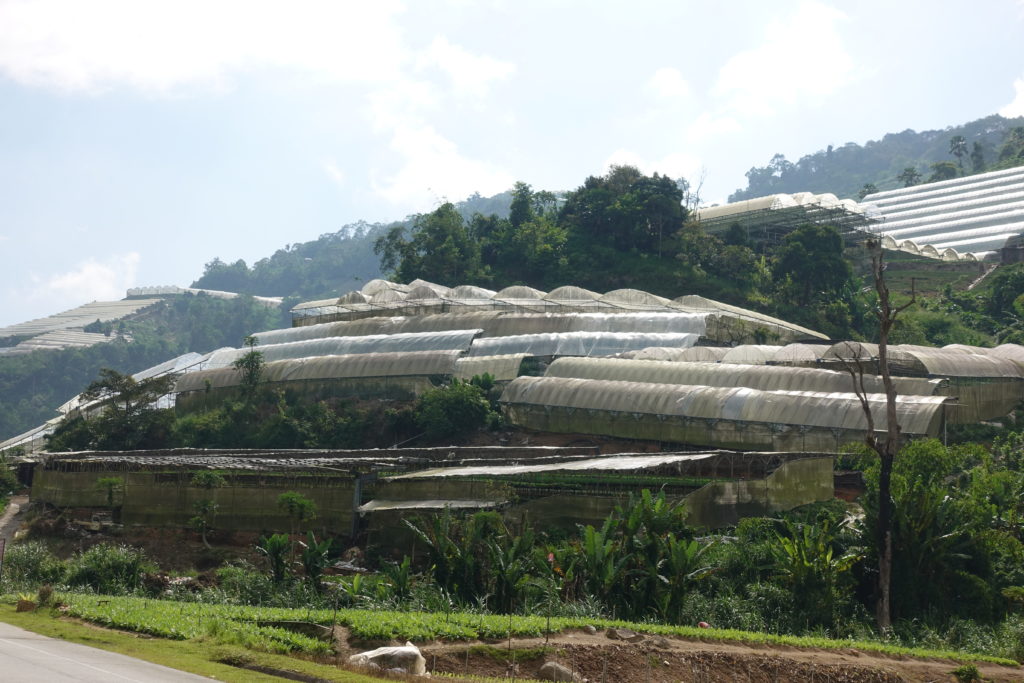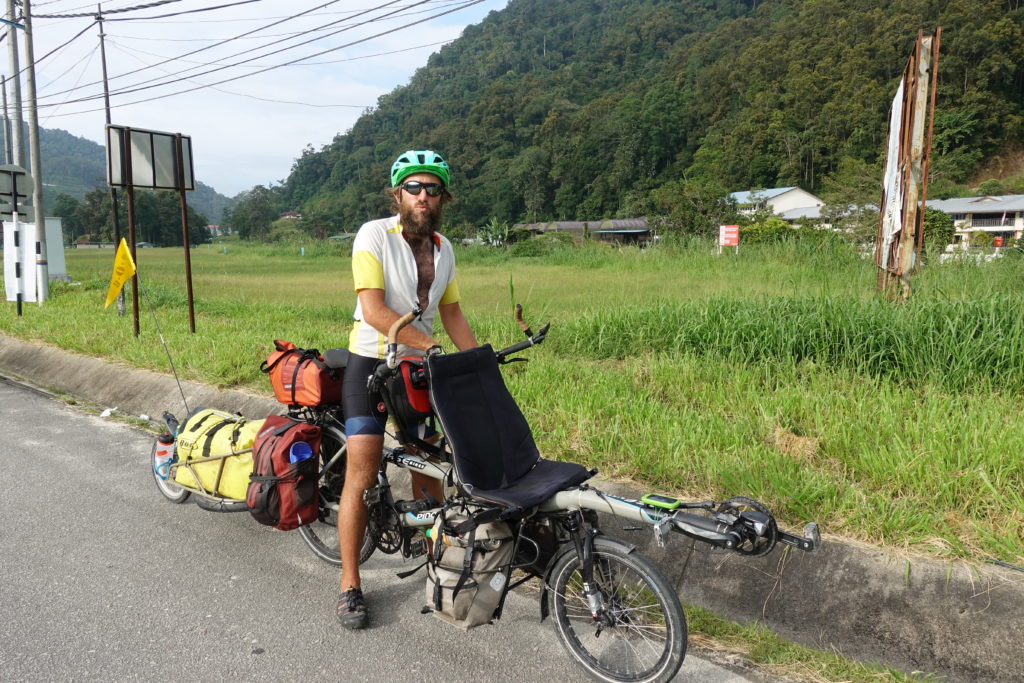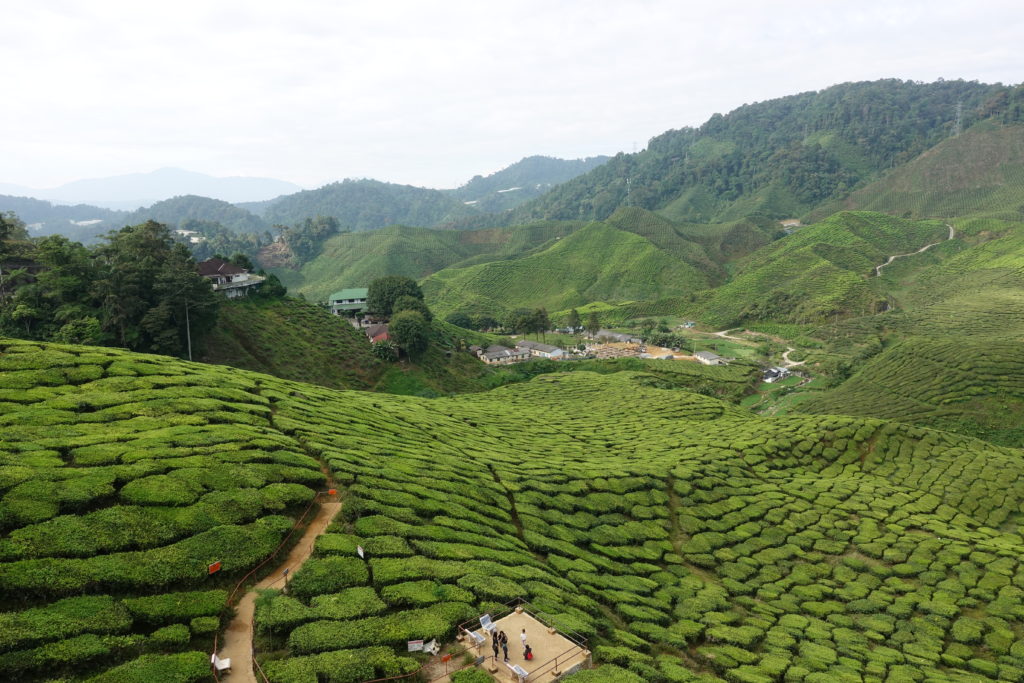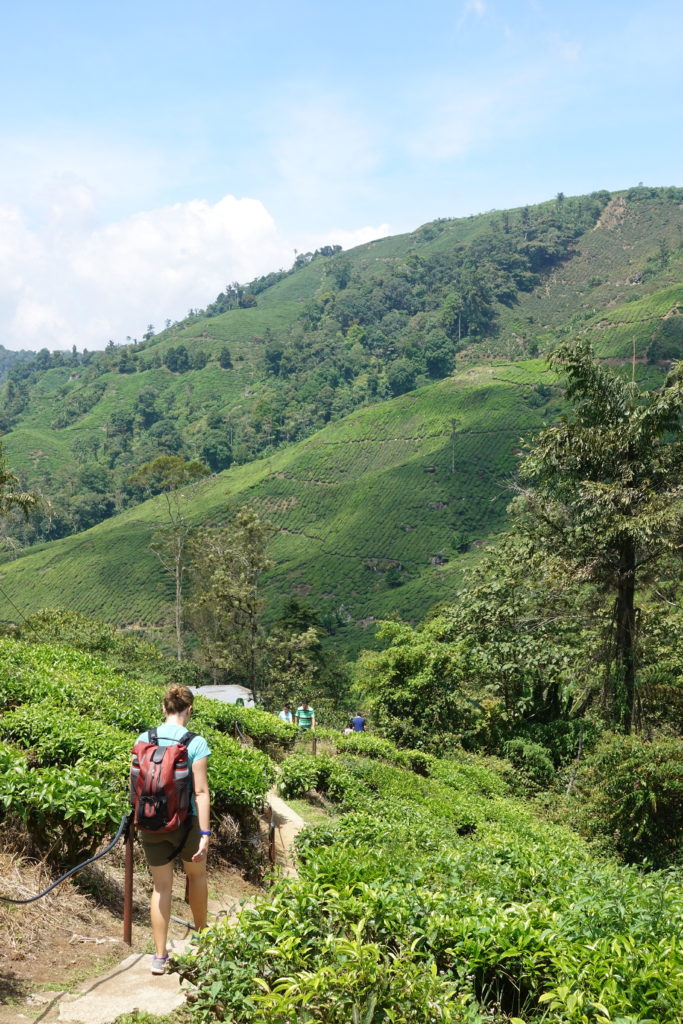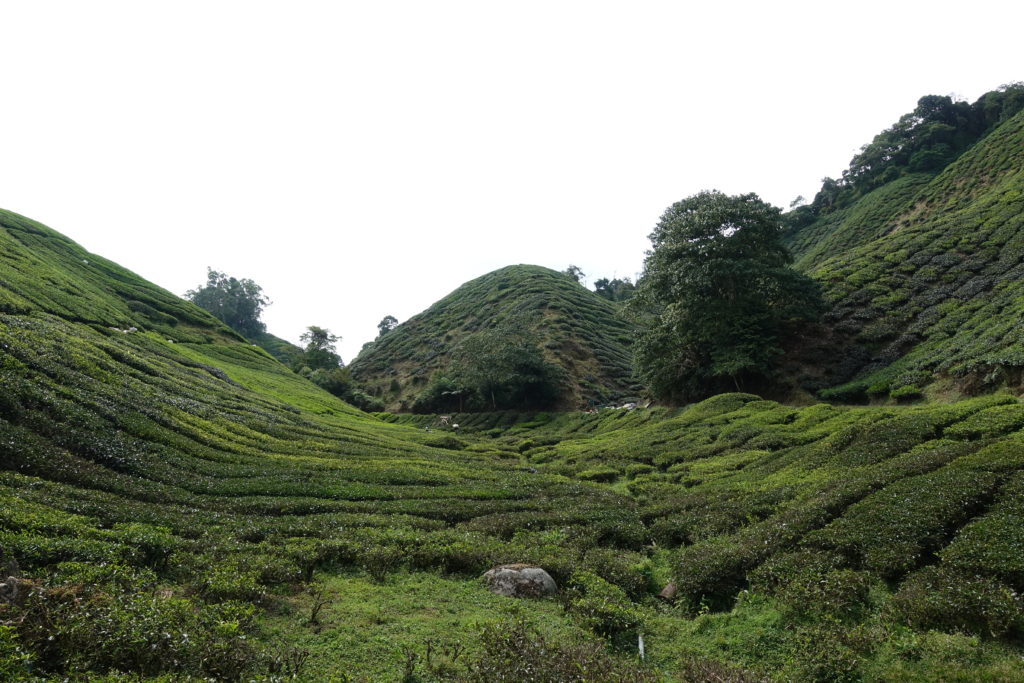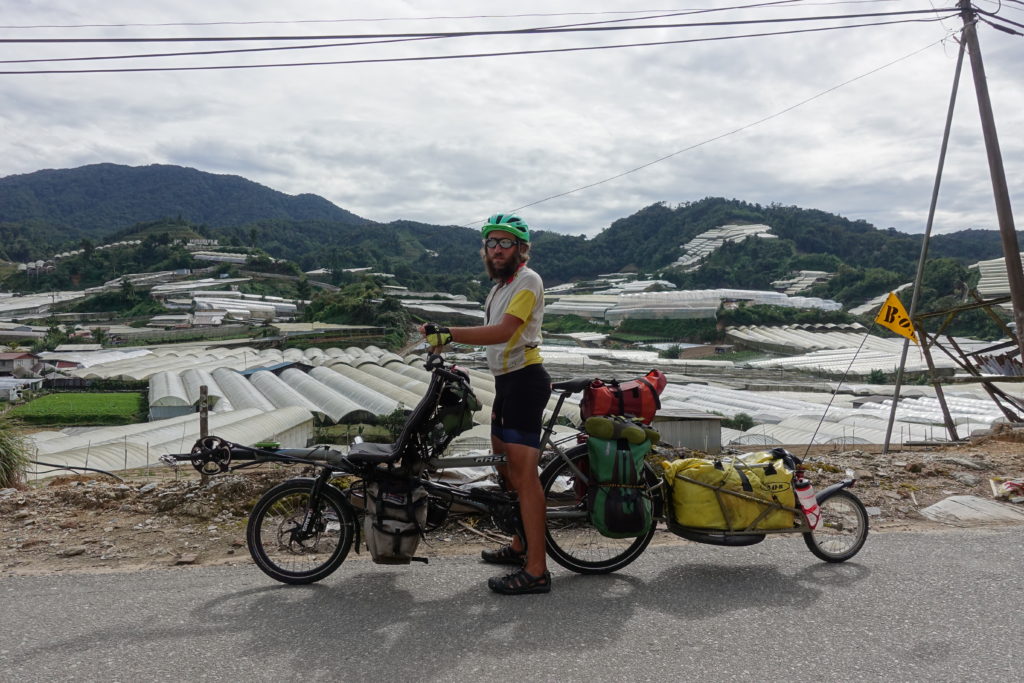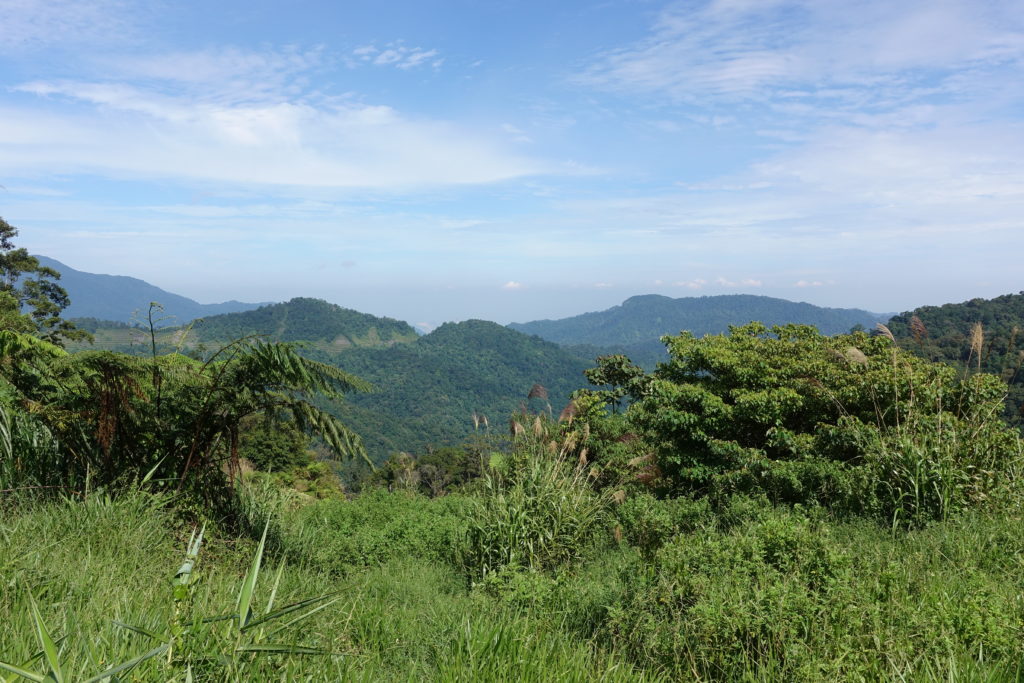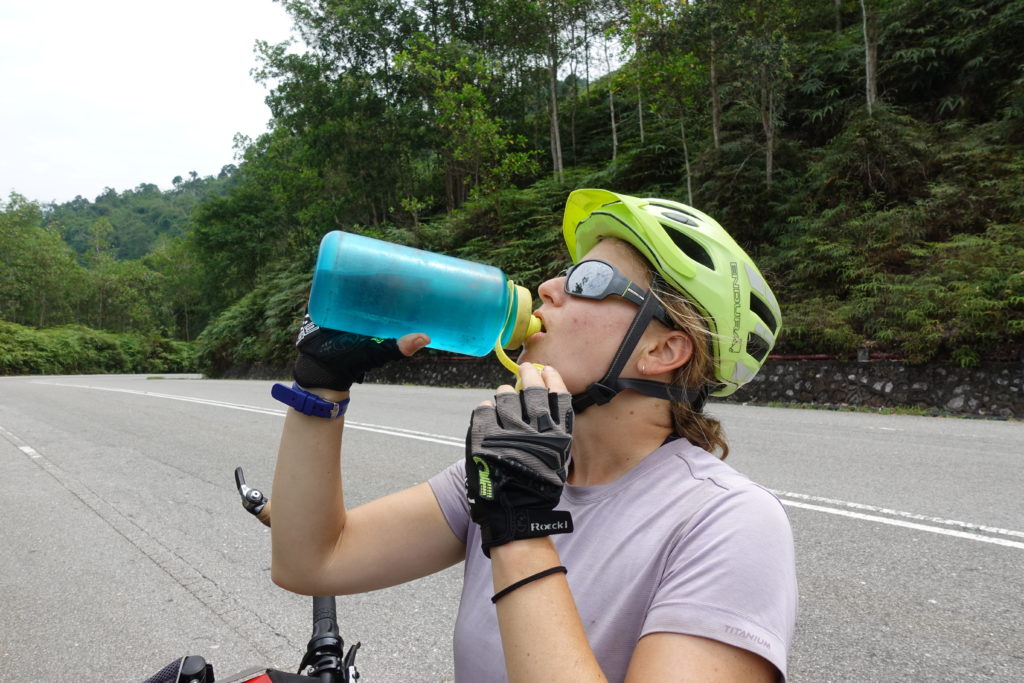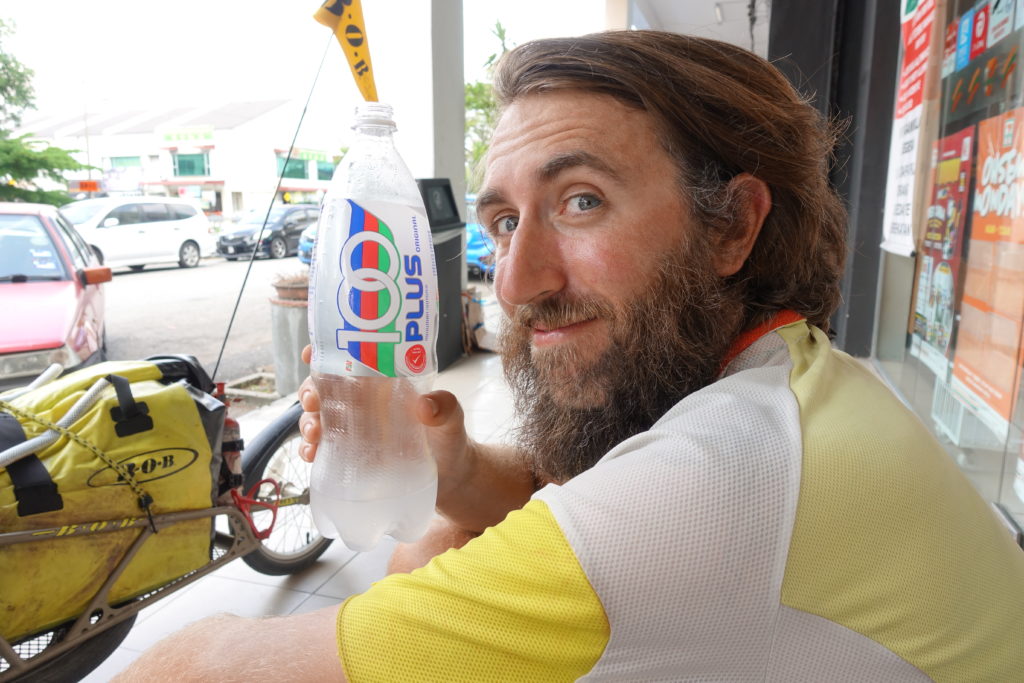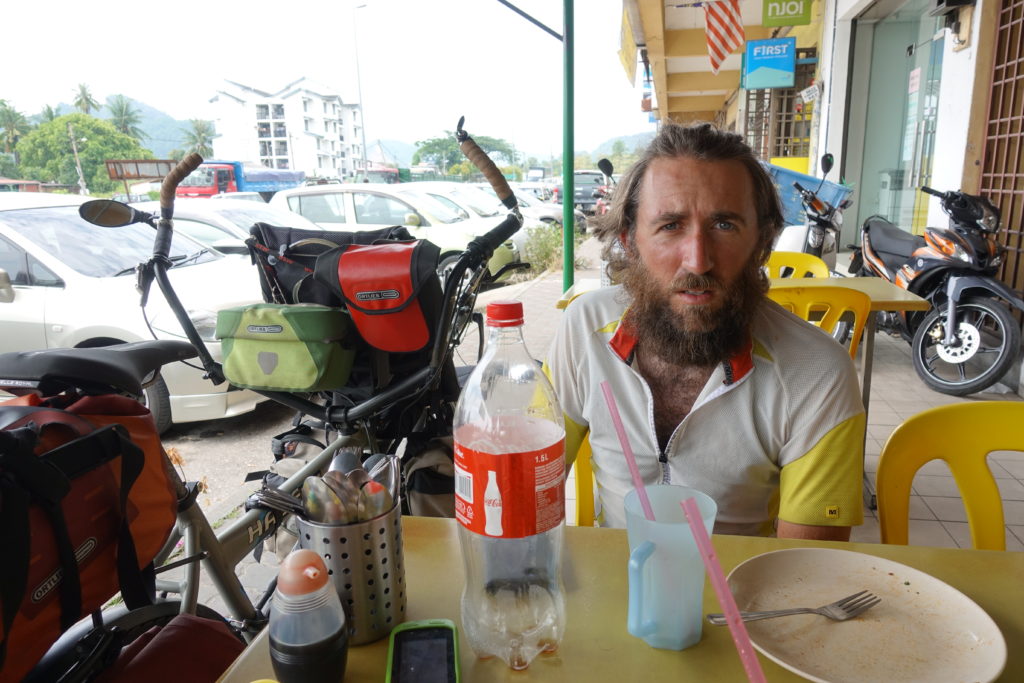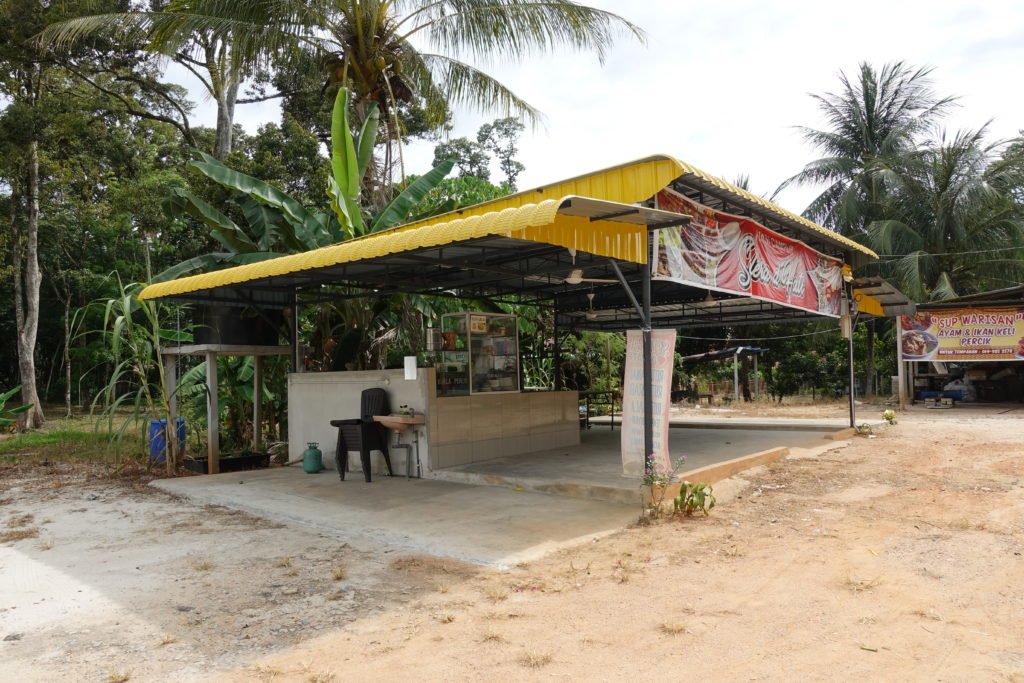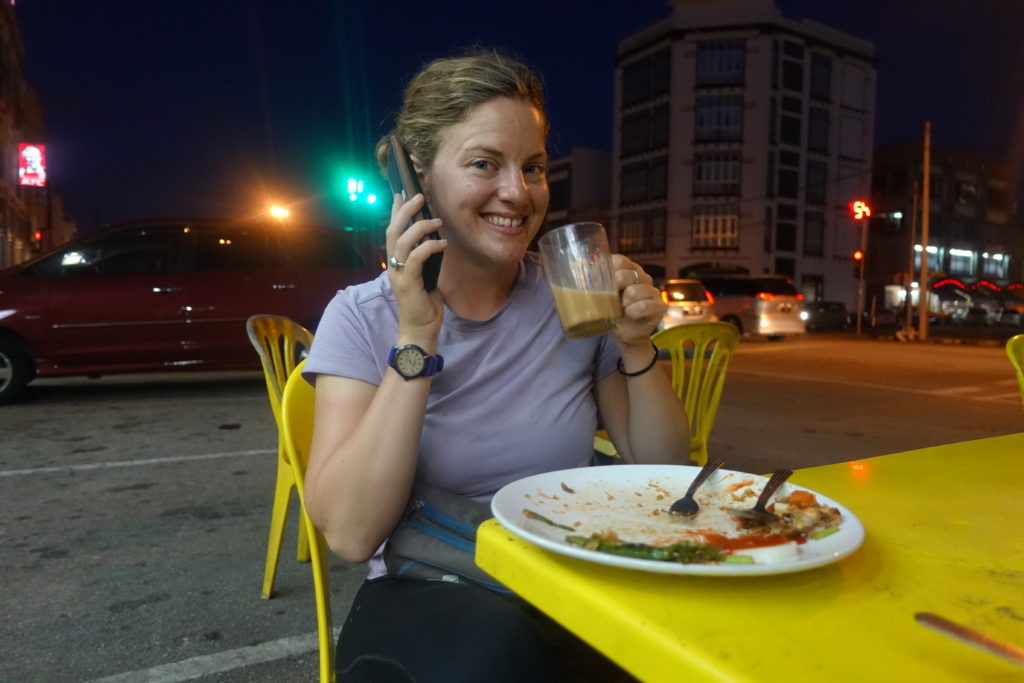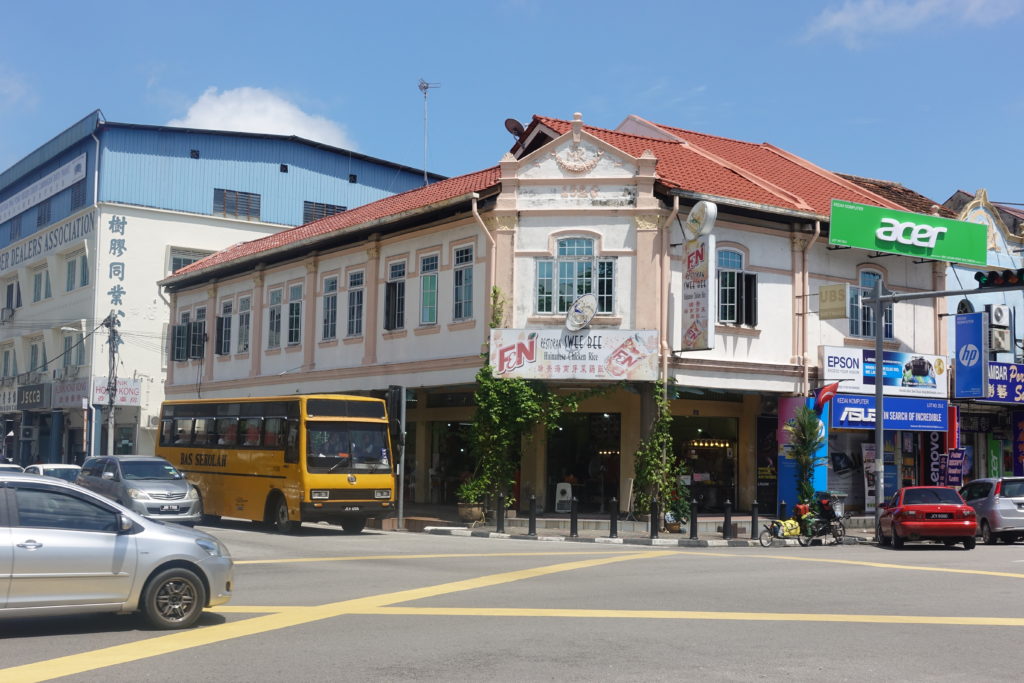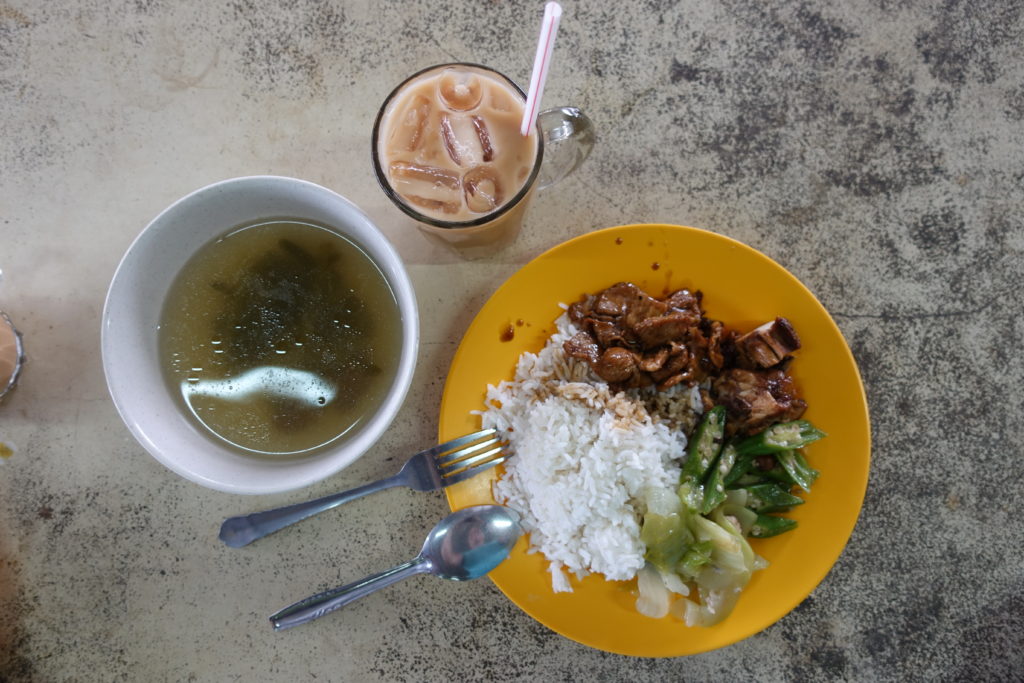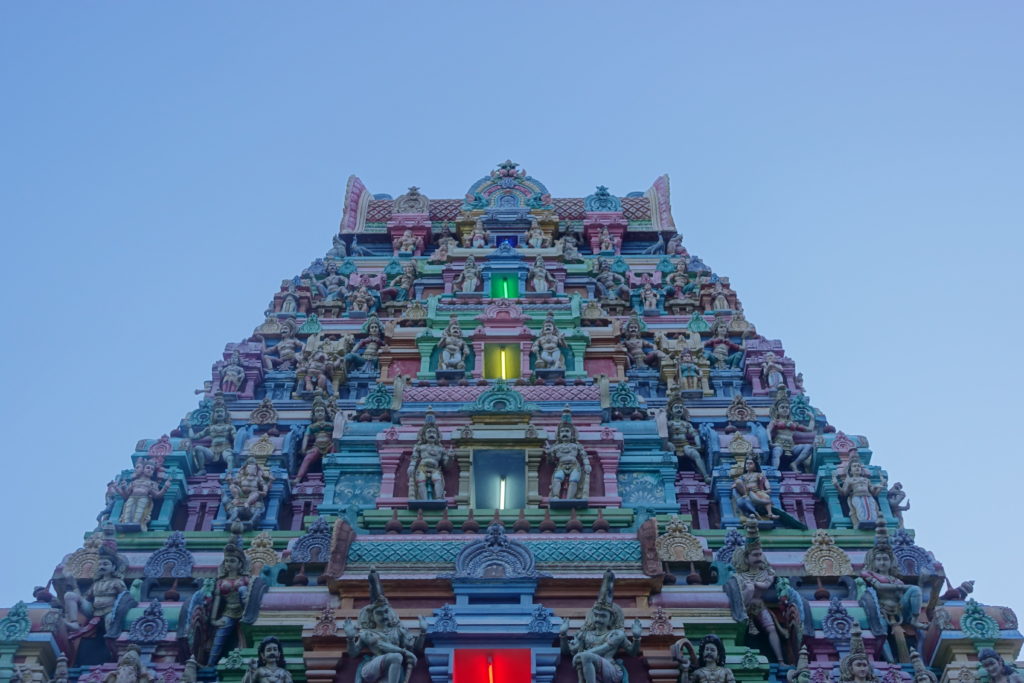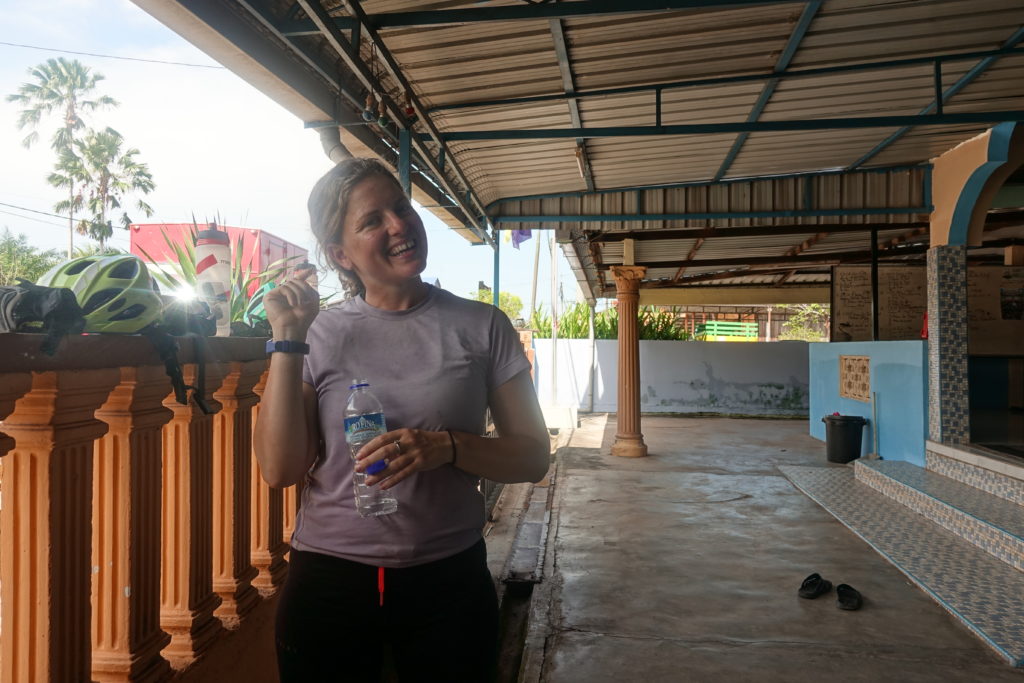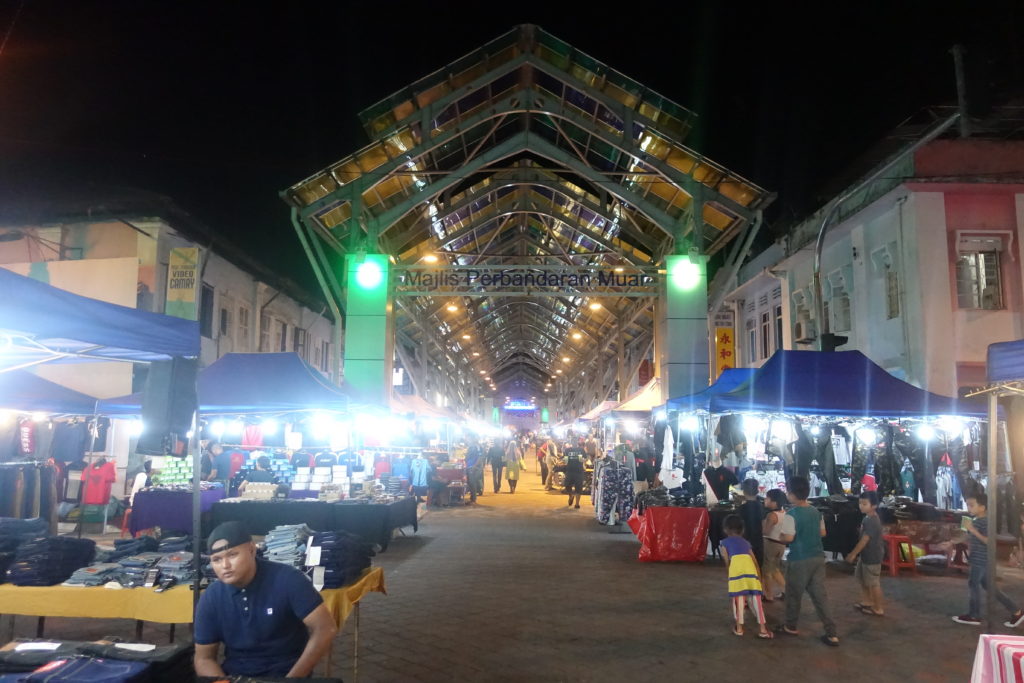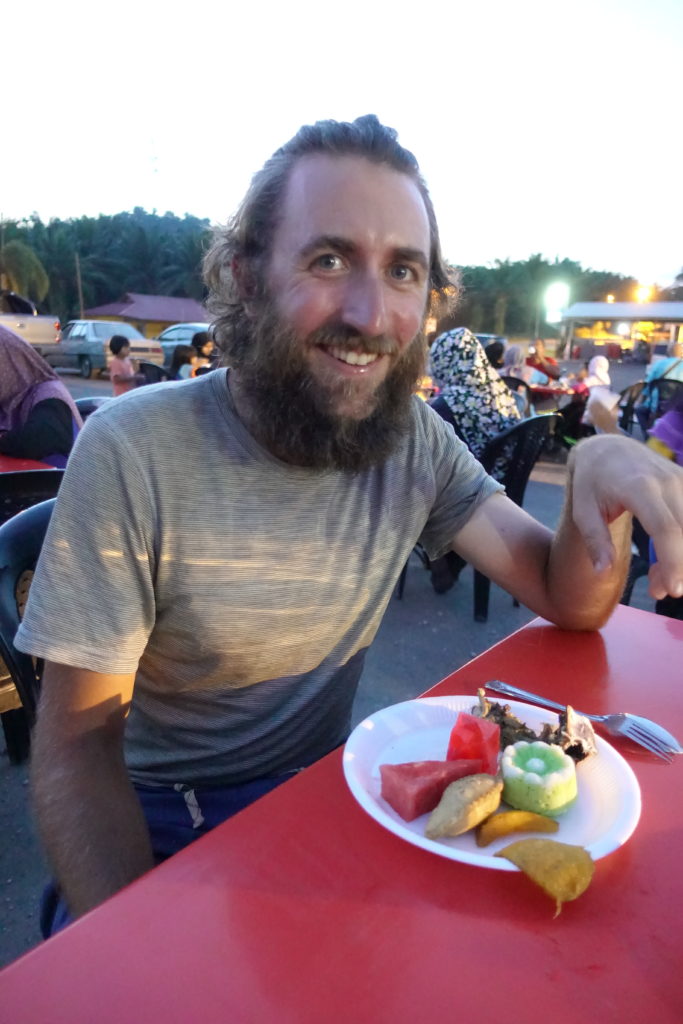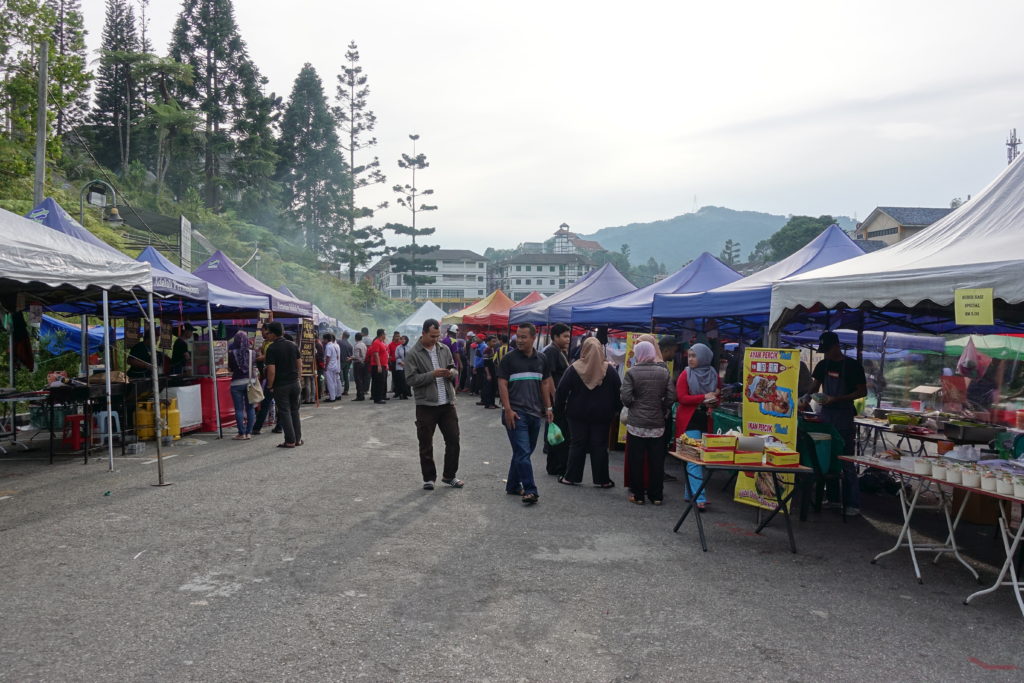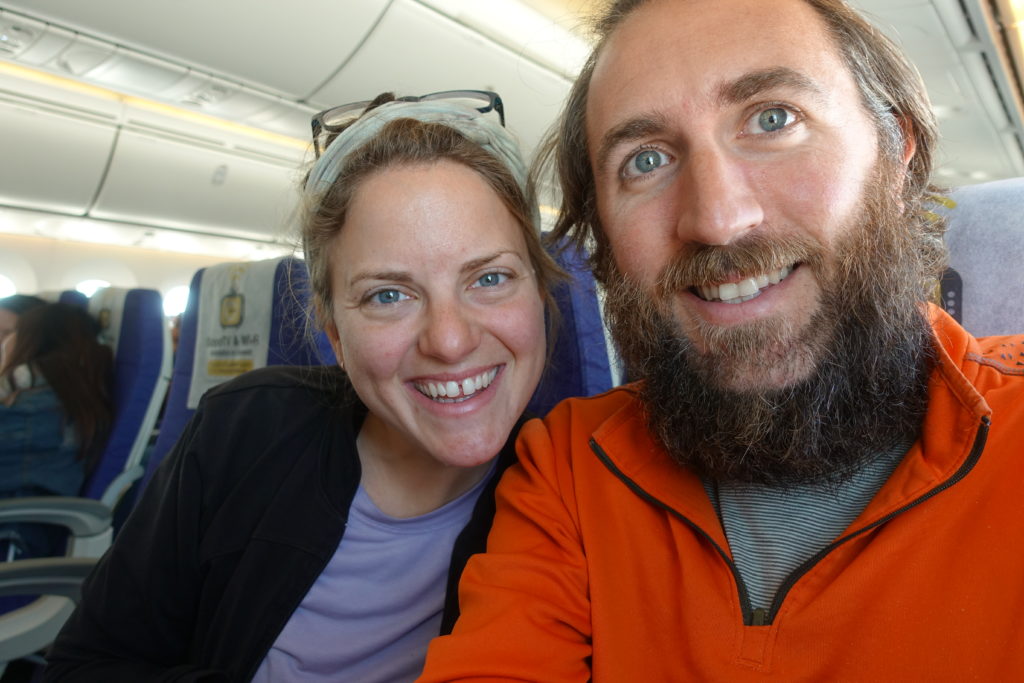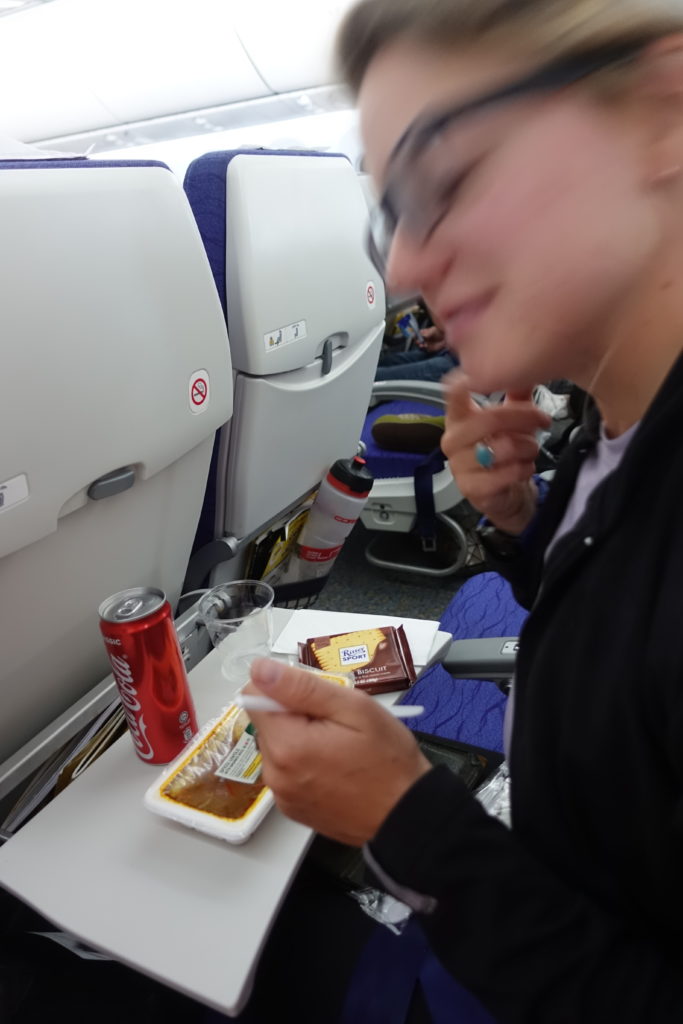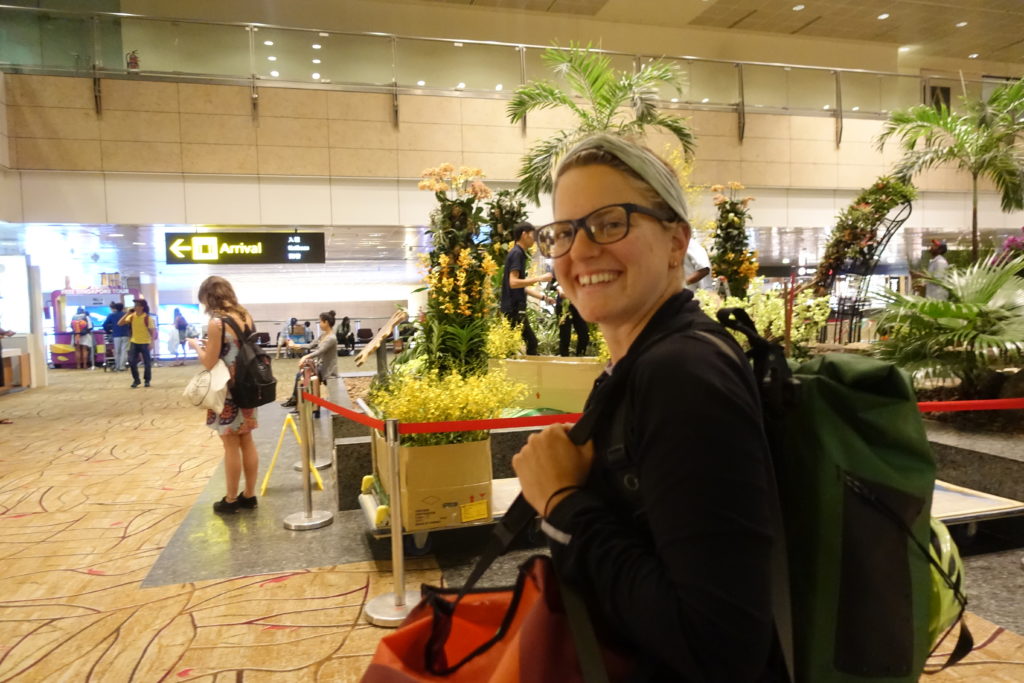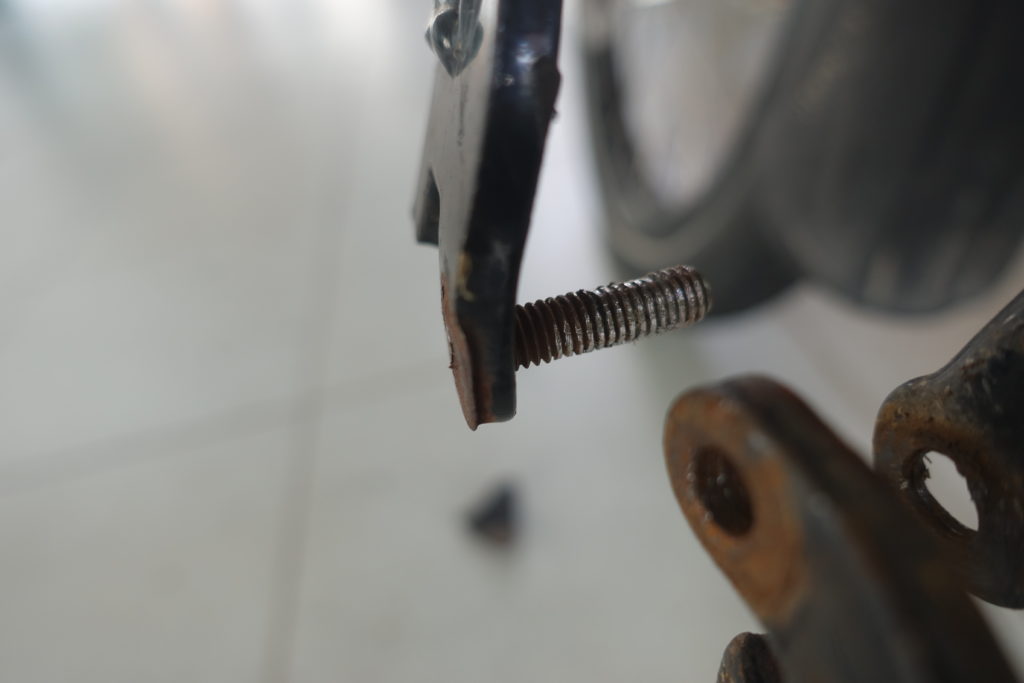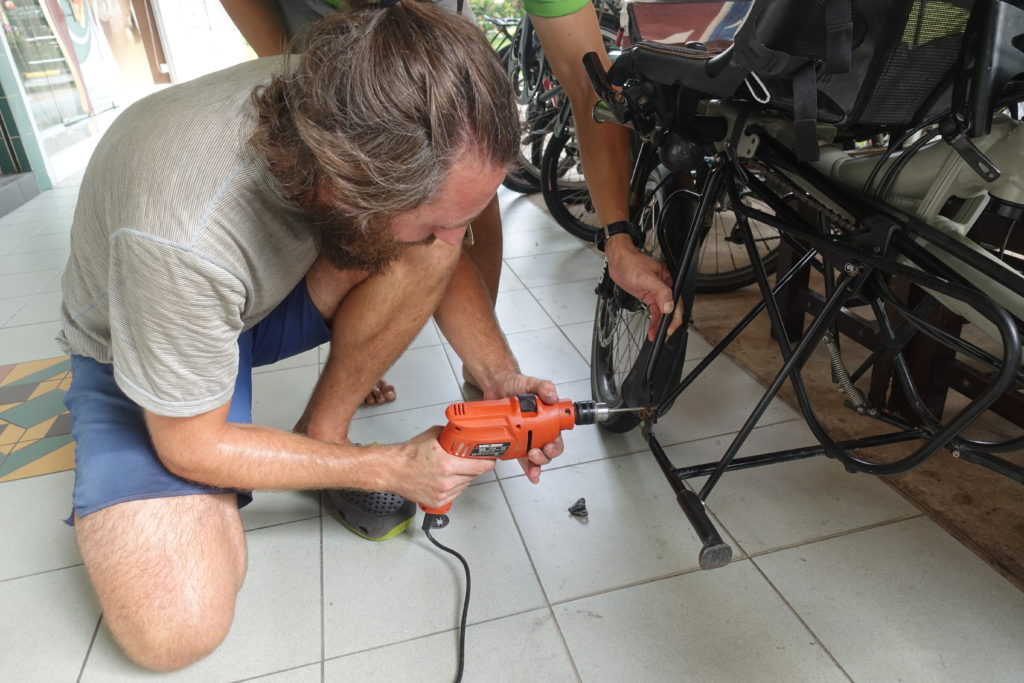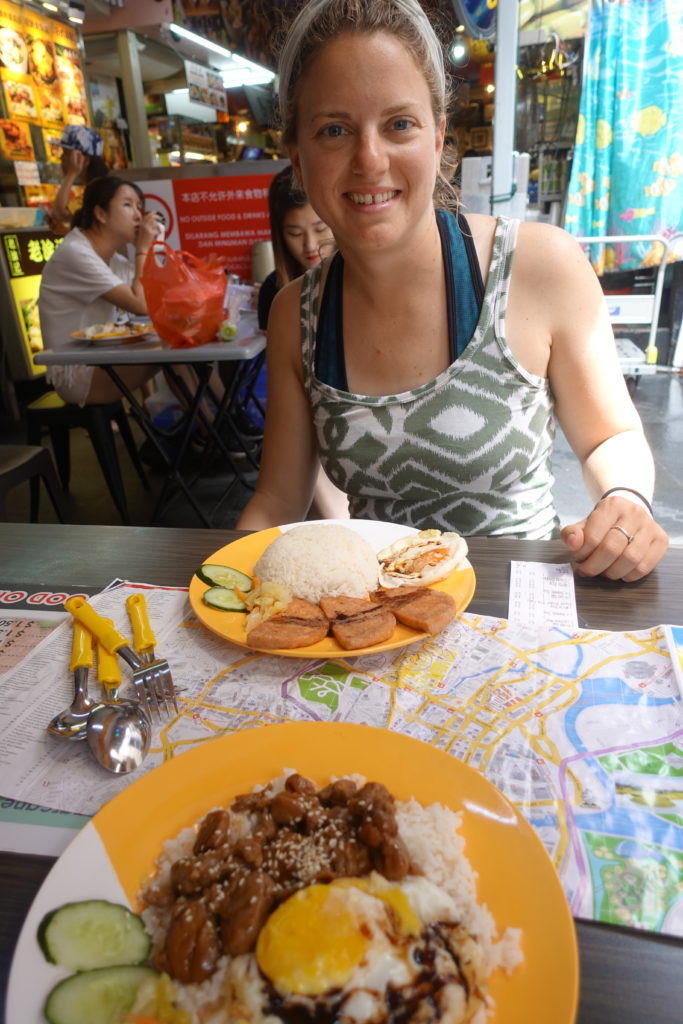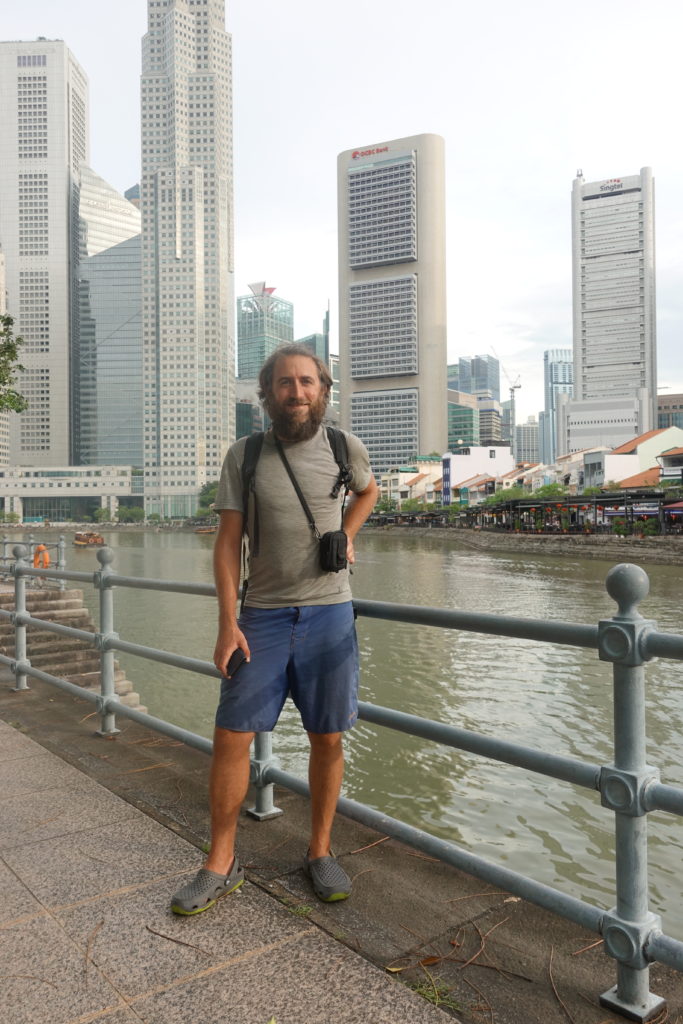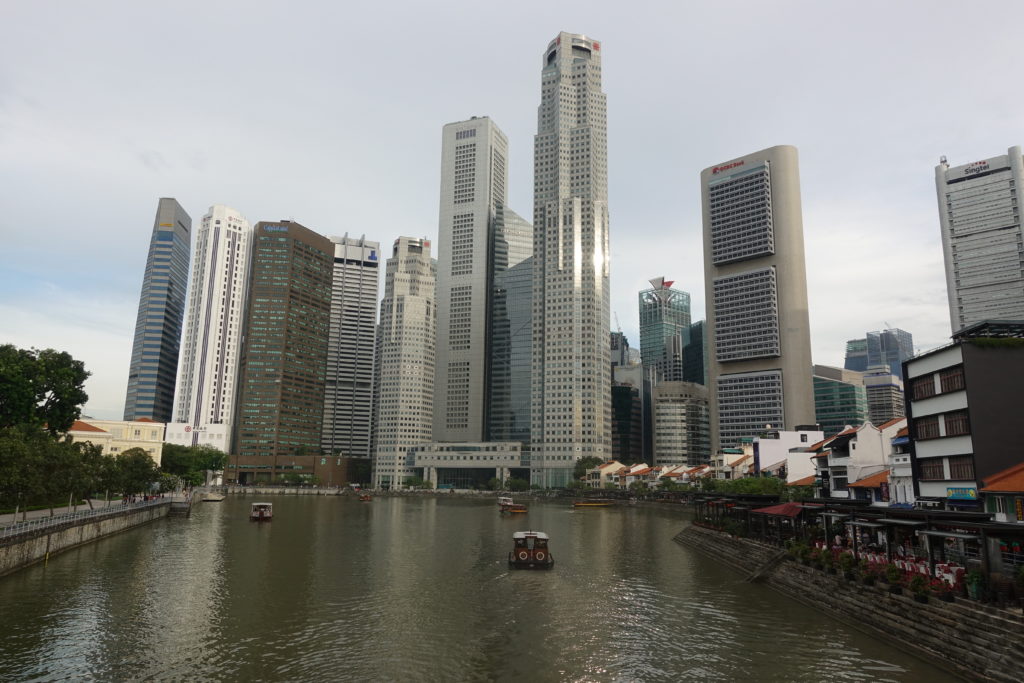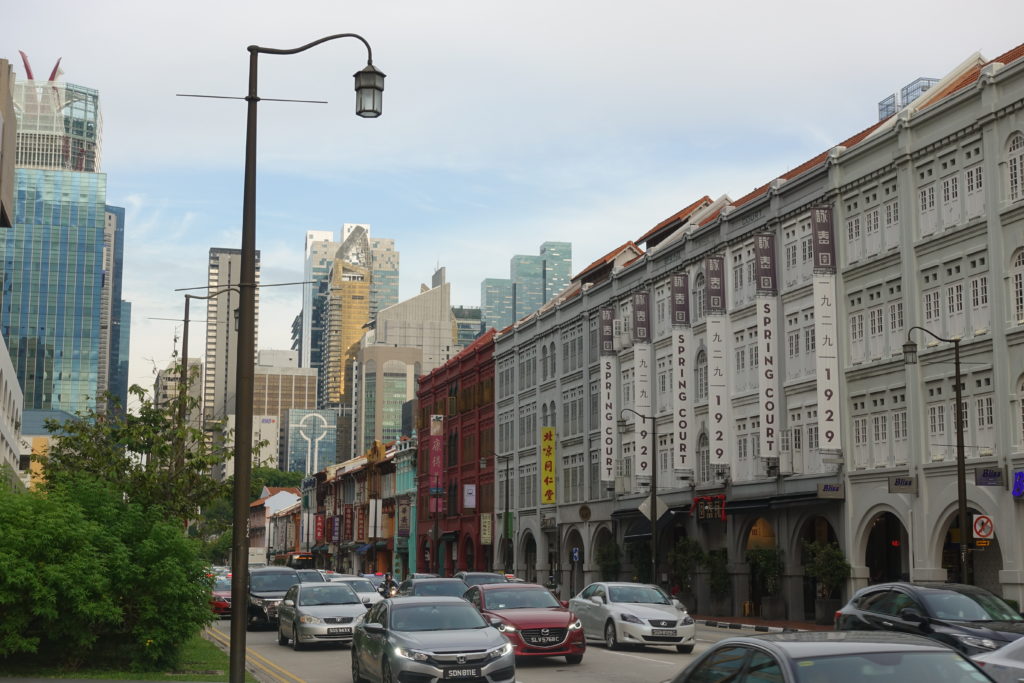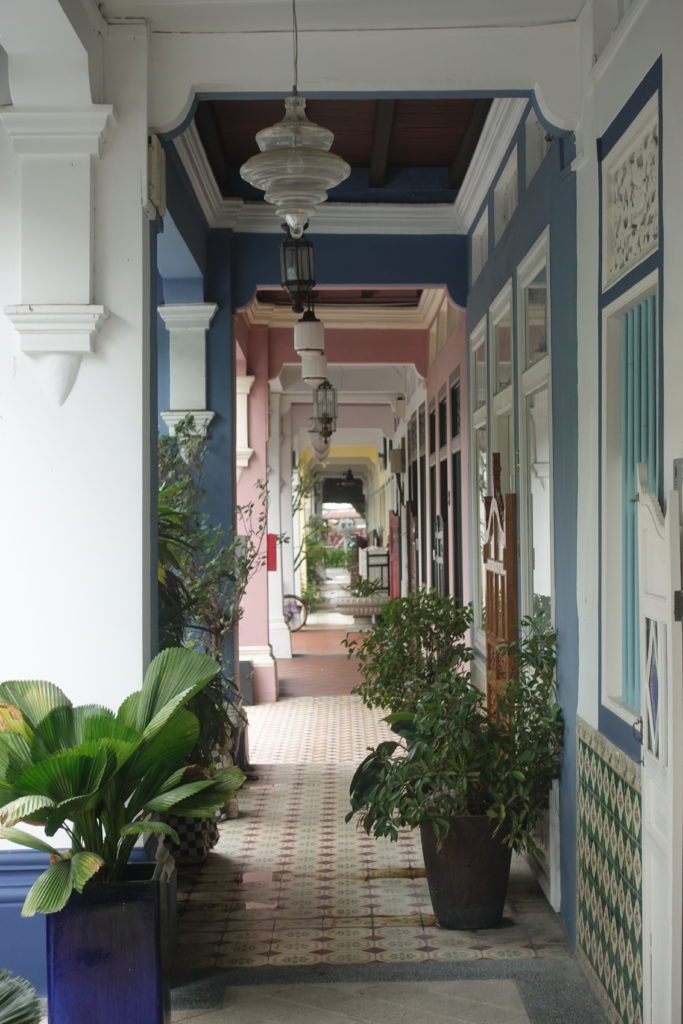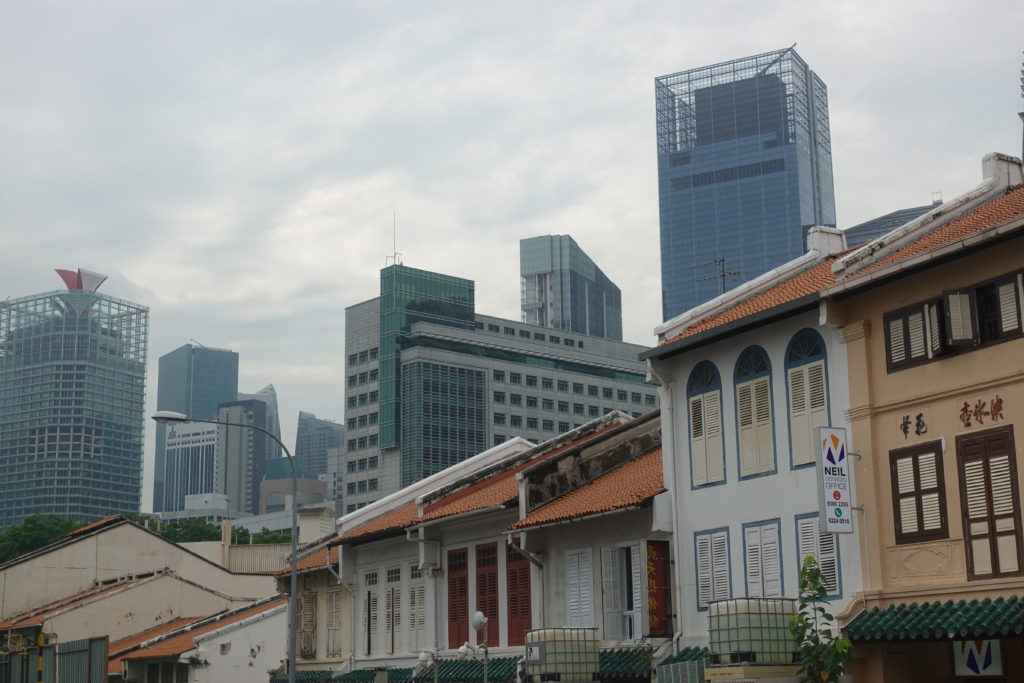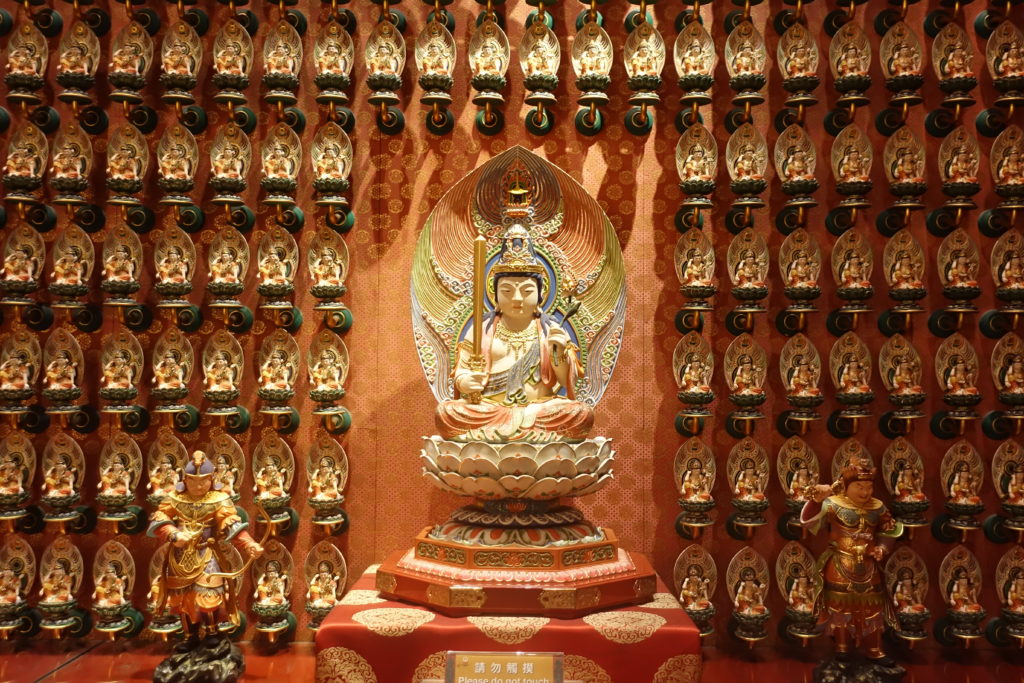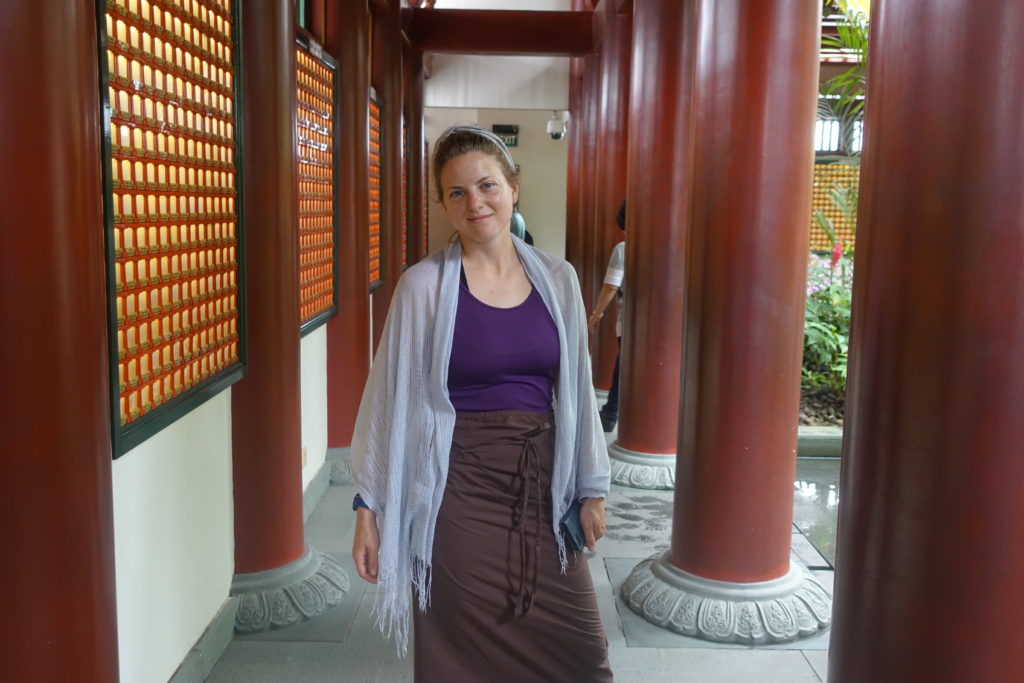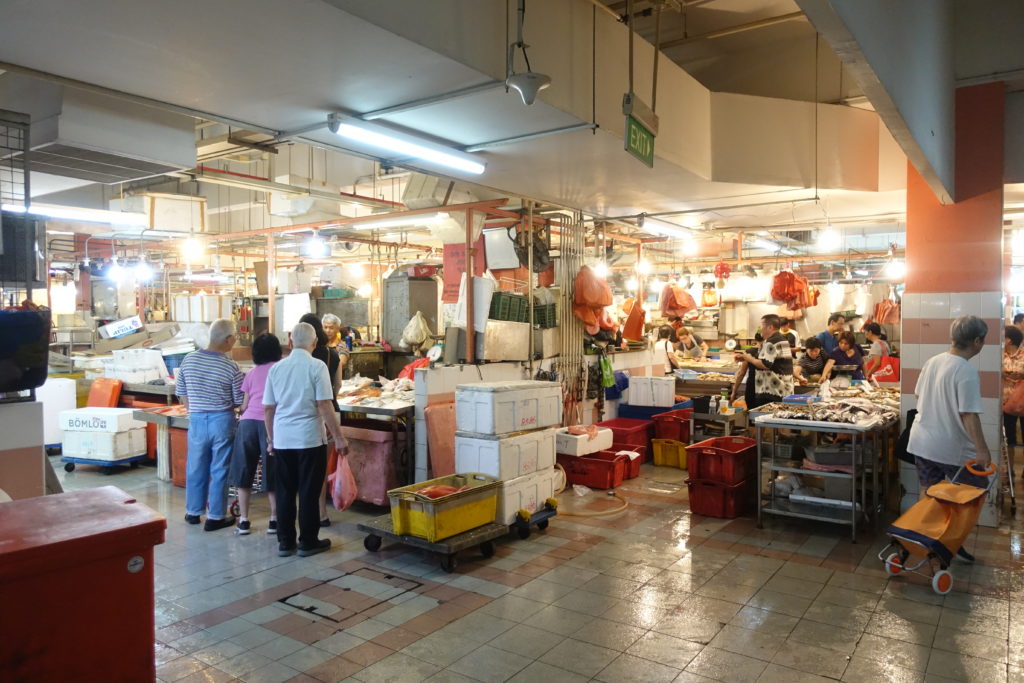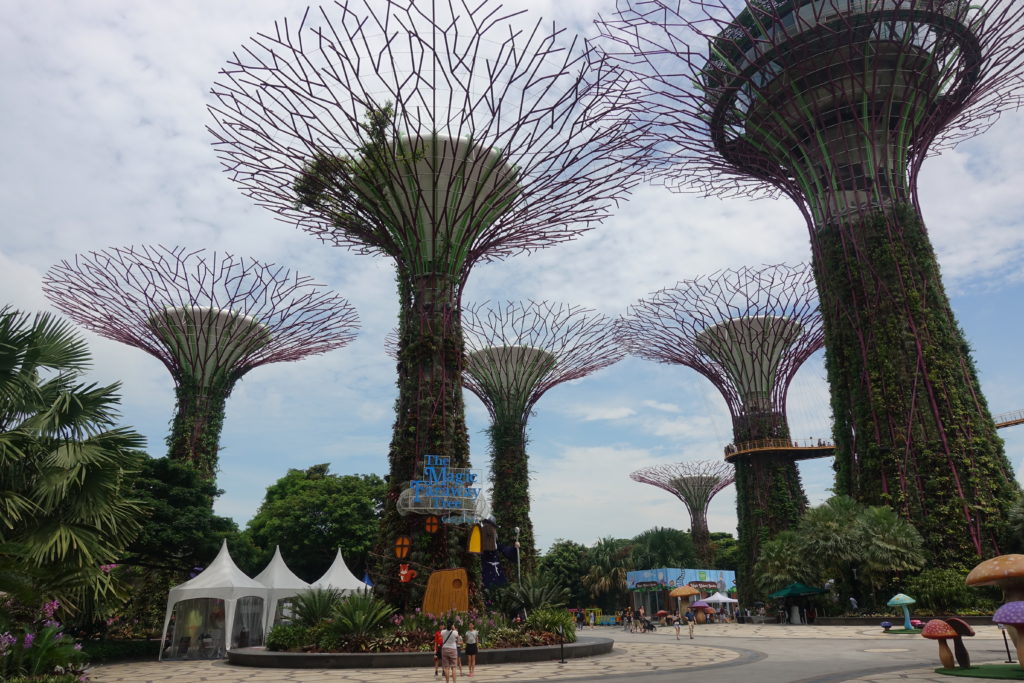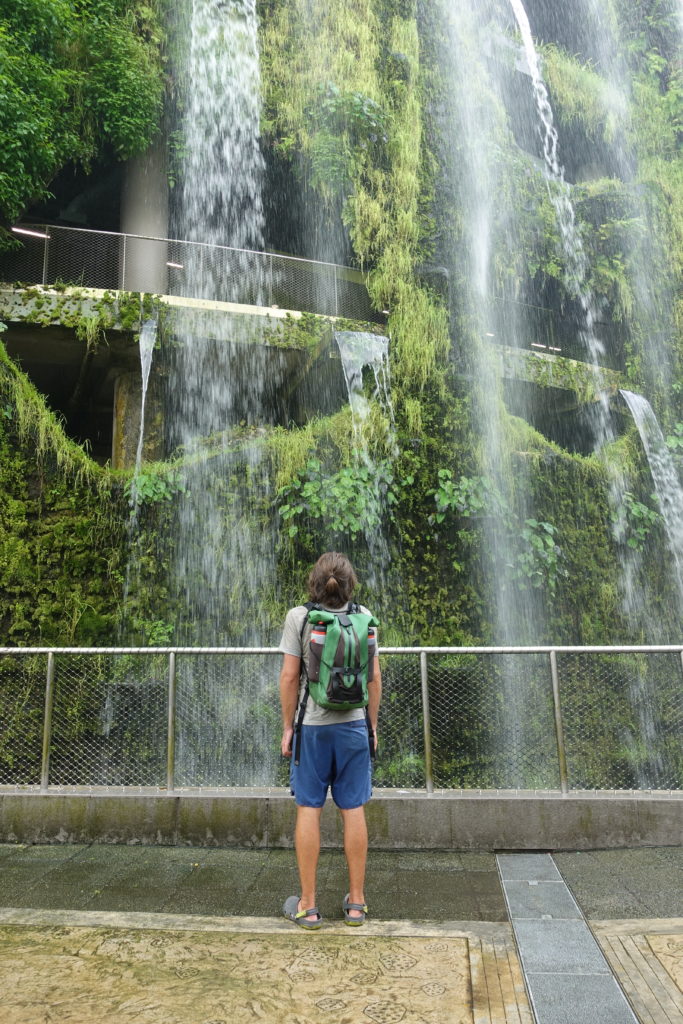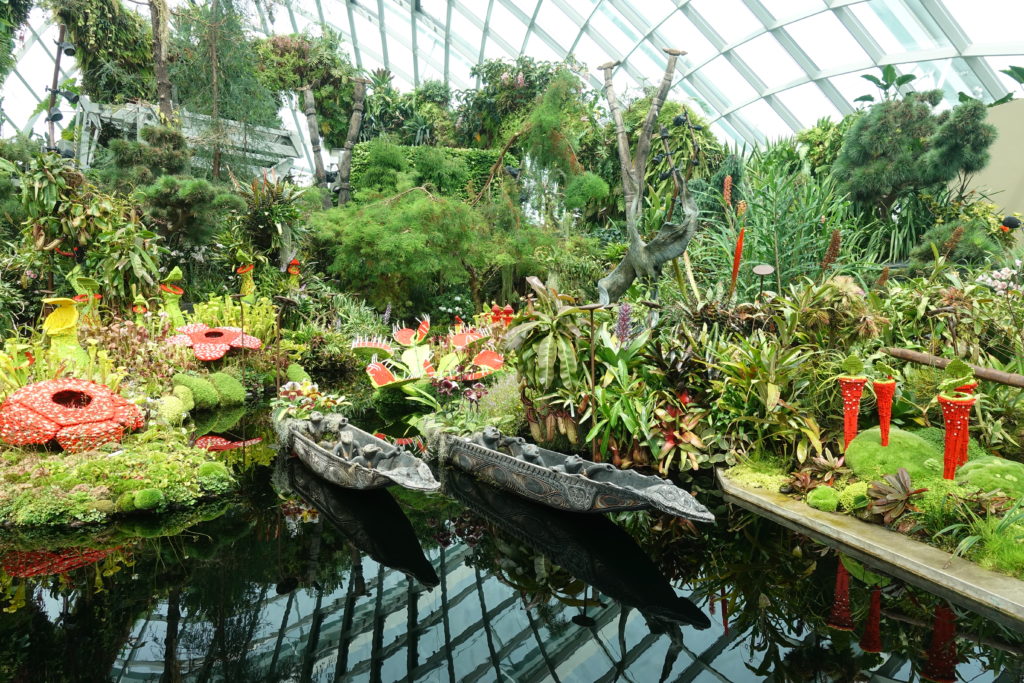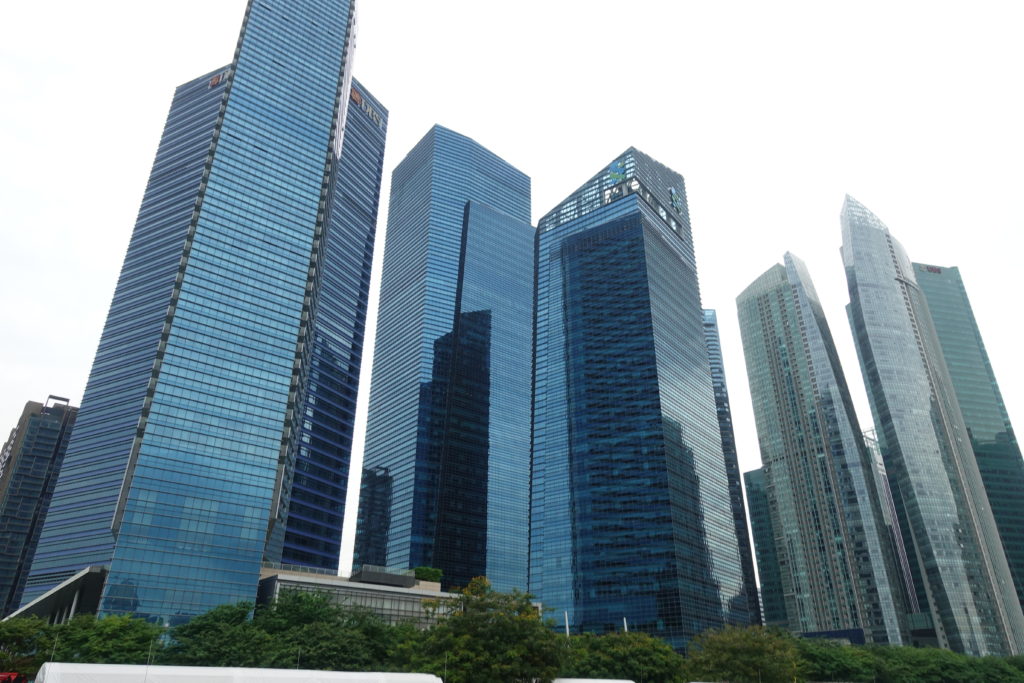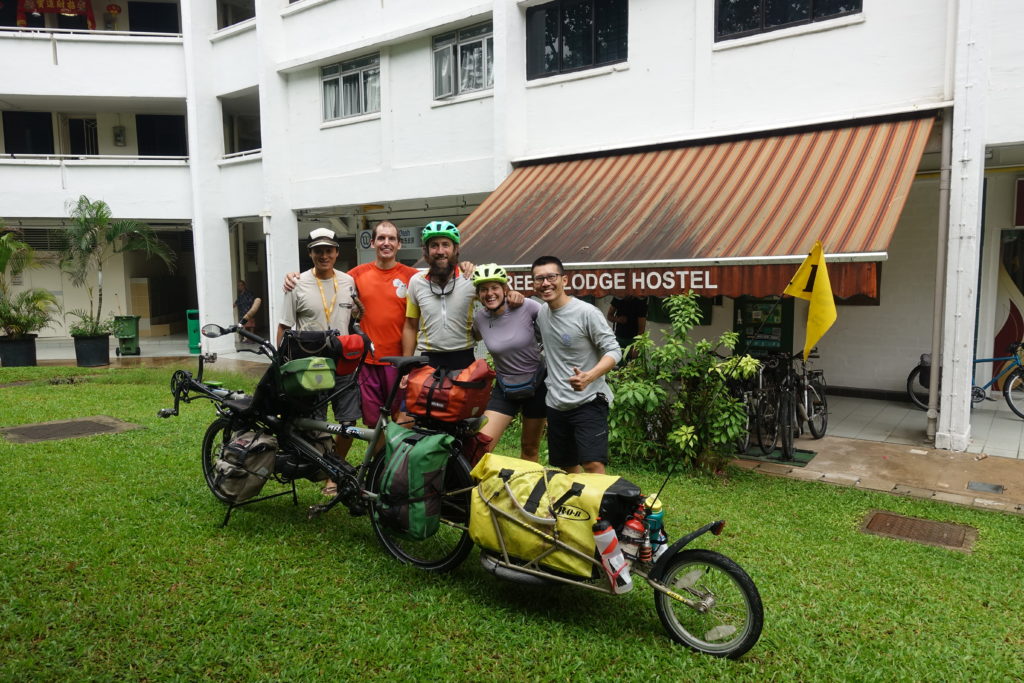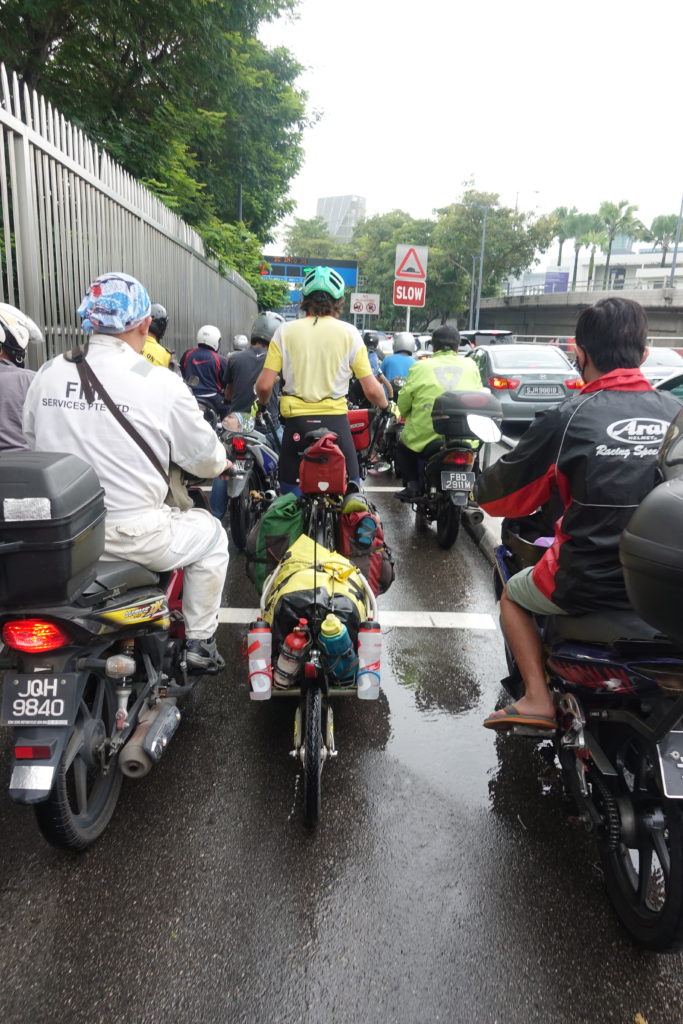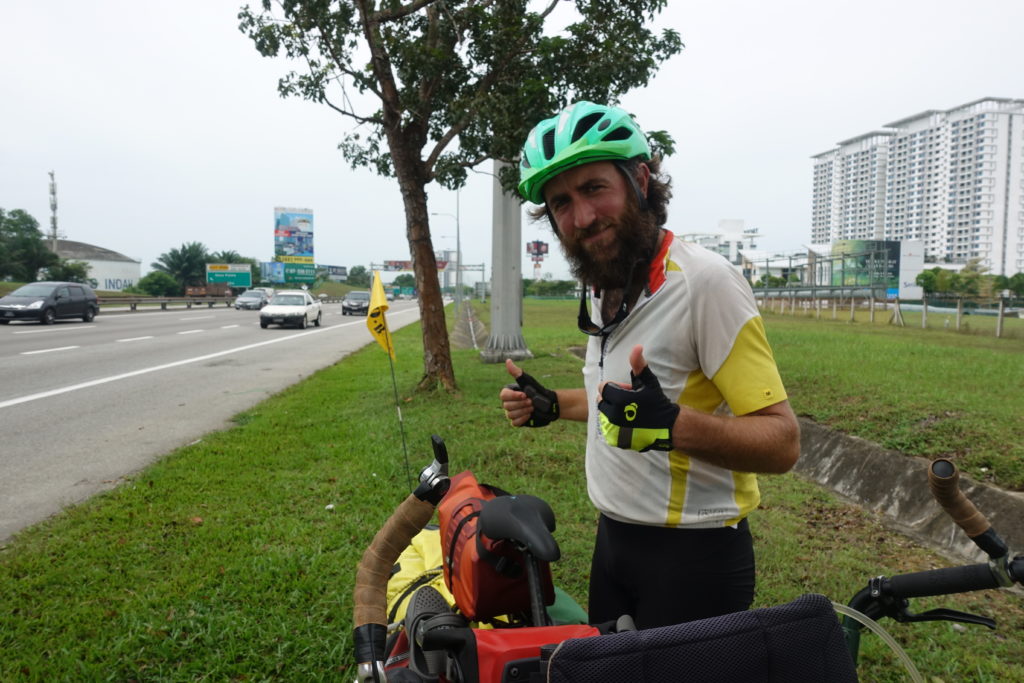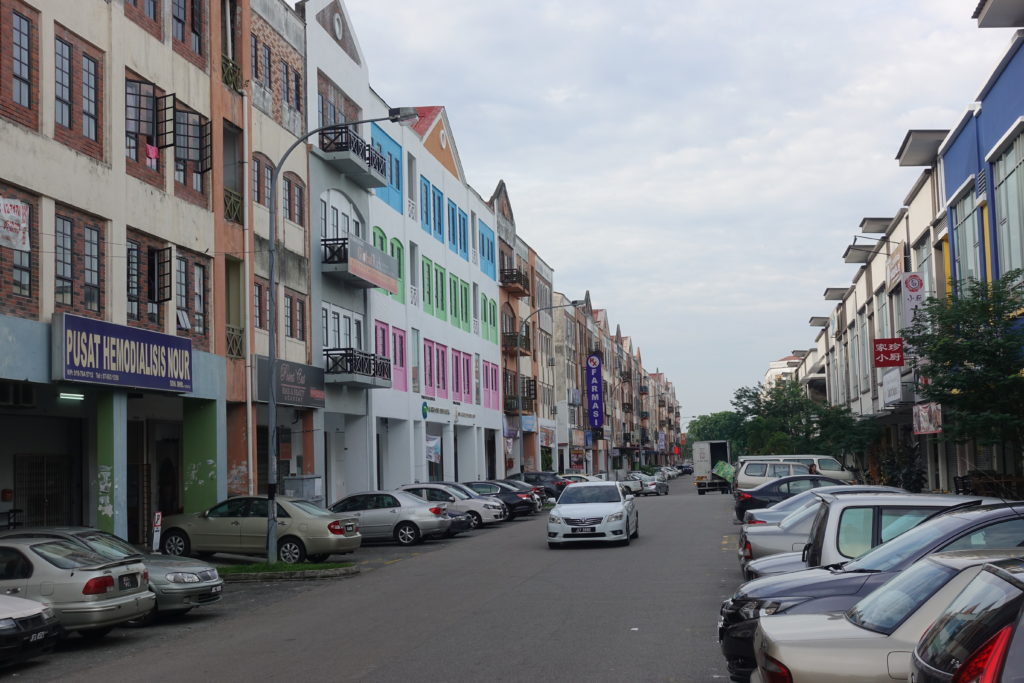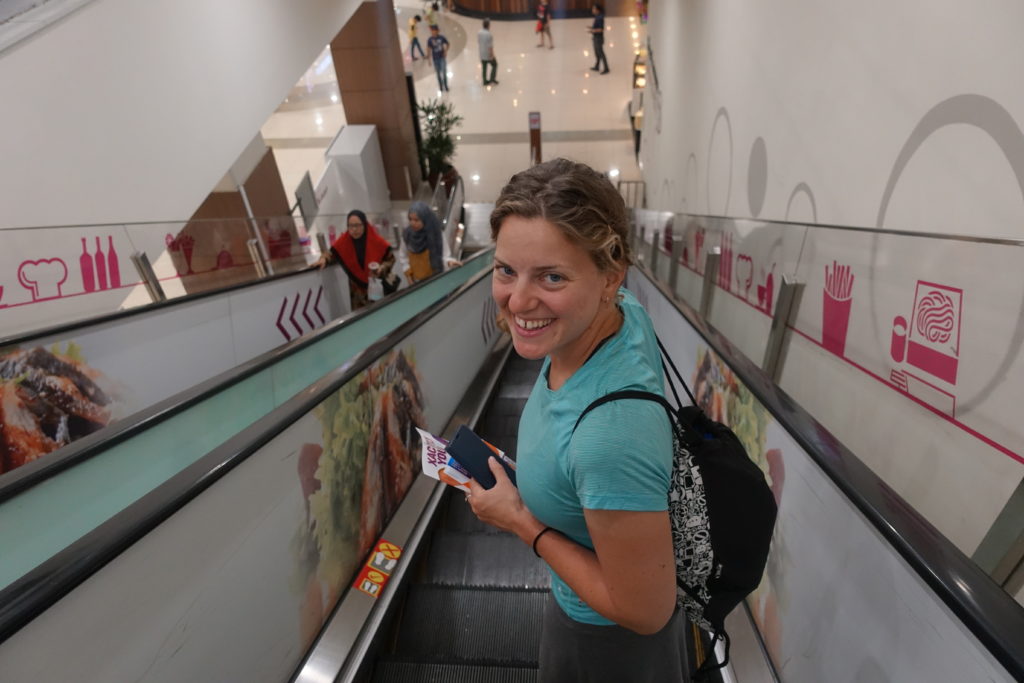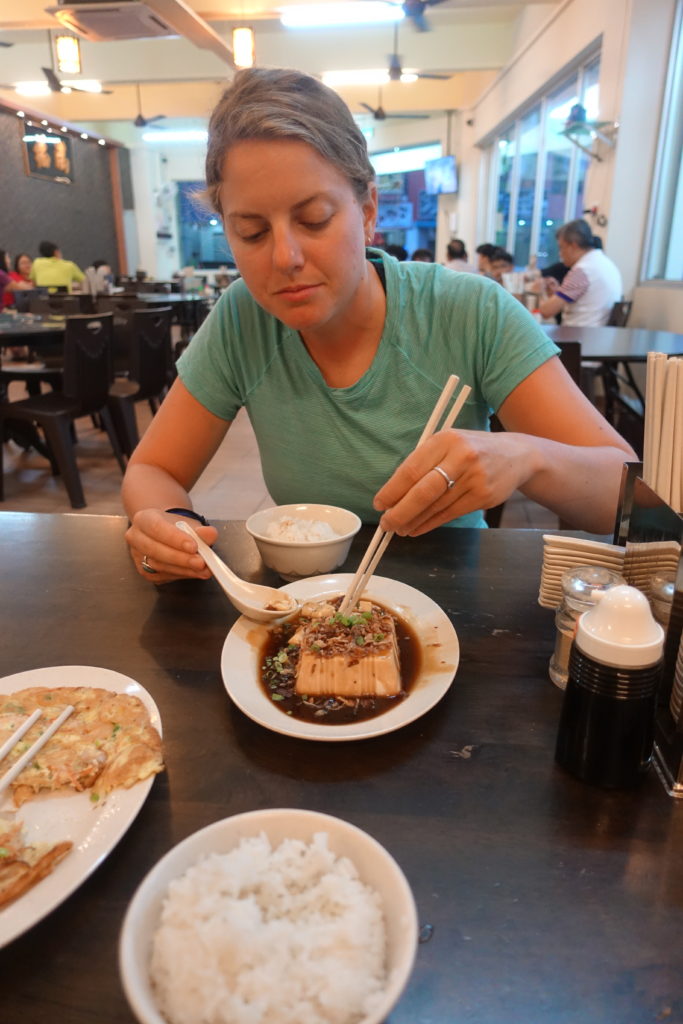Now to get back to the last update about Malaysia… in addition to Ramadan and the heat, we also want to showcase some of the things we saw in the country. In the two weeks that we were there, we visited two UNESCO world heritage cities: Melaka and George Town. Melaka is an old trading city in Malaysia and has been influenced by hundreds of years of foreign colonization (Portuguese, Dutch, and English) and different cultures coming through its ports. As Cédric and I spent an afternoon wandering the city, we saw the red Dutch Stadthuys, A Famosa – the ruins of a Portuguese fort, the Chinese district, and the traditional houses of Kampung Morten. It seems that every time we turned a corner, there was a new district of Melaka to discover. The entire old city is a mixture of centuries and culture, with some improbable combinations of centuries old Portuguese houses between Malay and British architecture with a Chinese Pagoda in front and a mosque behind. Although we were surprised to see a lot of tourists on the main intersection (we rarely saw any tourists on the back roads of Malaysia), it is easy to walk a bit and enjoy getting lost in smaller streets.
Between Melaka and the Cameron Highlands, we rode through the cities/towns of Kuala Pilah, Manchis, Bentong, and Sungai Koyan. Although these areas weren’t on the tourist trail and didn’t have a deep history like Melaka, we still visited their downtown areas and various houses of worship. We chose that road “inland” to avoid going through Kuala Lumpur, a huge city that seems to have for point of interest only its two Petronas skyscrapers… Going inland brought us into hillier sceneries, a more chilled atmosphere, less traffic, and endless palm tree plantations!
We stayed three days and two nights across the Cameron highlands, after a never-ending sun-burning ascent, some enjoyable time in cooler climate at altitude over 1000m, and an awesome smooth descent (large curves, constant gentle downhill percentage, large clean shoulder, 50km continuously going down: we managed to break our average hourly speed by even doing picture breaks!). Check our previous post about the Malaysian climate in June (the “dry monsoon”).
After leaving the Cameron Highlands, we cycled through Ipoh and Taiping- both larger cities with a more historical background. Although Ipoh was only named a city in 1988, it is home to large municipal buildings built by the English in the early 20th century. Cédric and I spent our evening roaming around this area and the areas with more modern buildings and trying durian (the fruit that smells bad) ice cream – once we got over the initial spoonful where all of its odor hits you like a garbage truck, it was pretty alright.
In Taiping, Cédric and I utilized the remaining daylight hours to walk around the city’s Lake Gardens, which previously served as a tin mining site before it was transformed into a lake with paths, pagodas, and rental swan paddle boats. The downtown area of Taiping also had many old shophouses in various states of color and preservation, and a great thing is that they close many roads of the city center in the evening to install large street food courts – and no cars also means a quieter, more enjoyable atmosphere.
The last city we visited in Malaysia was George Town. Although Cédric and I could have continued cycling up the west coast towards Thailand, we decided that we had enough of the busy traffic, and on that stretch of coast the important number of trucks going north towards the main border with Thailand (and after to the rest of Asia).
Instead, we would take a series of ferries from Butterworth to George Town, George Town to Langkawi, and Langkawi to Satun. In George Town, we took a full day off from cycling to explore the city. Our day began wandering through the Chinese and Indian neighborhoods in the core of the city, followed by the ‘Clan Jetties,’ where shops and wooden houses extended far past the water’s edge. We rounded out our day by visiting the elaborate Chinese temple and museum in Boon San Tong Khoo Kongsi. Melaka and George Town both share a similar history pattern, with various influences from the various main trading partners or colonial powers visible throughout the city. Yet Melaka turned more into a middle size city-museum focusing on tourism, whereas George Town (also called Penang) continued to have an important economic growth and is now the second largest business center of Malaysia with lots of shipping, industries, a major airport, etc. Penang has thus more modern high-rise buildings outside of the historical center.
Our last day in Malaysia was spent traveling from the island of Penang to the island of Langkawi, and then to Thailand’s mainland. The bike had an interesting trip on both ferries, as it was hoisted and dangled over water between the boat and the dock. Luckily for us, the bike, and all our gear made it safely to Satun’s port (partially because Cedric spent the ride on the back of the boat behind the engines trying to hold everything together in the swells).
Taking the ferry to go from Malaysia to Thailand may sound like a weird decision as both countries share a long border without particular geographical features (ie. mountain range or large river), but it was definitely a good decision to avoid exhaust fumes… and notoriously corrupt Thai custom officers apparently inventing all sorts of specific visas and entry constraints. When you get out of a ferry already a few kilometers into the country it is a bit more difficult to send you back on the other side of the fence if you don’t give the extra banknotes.
Our first welcome in Thailand was taking multiple selfies with onlookers, including the custom officers and ferry crew, as we waited in line to go through customs.
]]>After our first two mornings of starting in blazing heat at 9am (and meeting a fellow cyclist who had already covered 30km by 8am while we were ordering breakfast), we decided that we’d try move our morning ritual up by an hour. Early mornings now meant that we got to experience another phenomenon of the heat and humidity: dew in warm weather. With the humidity over 90% in the morning and a bike that was stored in a cool house, we had dew forming on our bike at 26 °C/ 80 °F the moment we stepped outside. It feels like a really weird phenomena to see any metal part of the bike getting covered by a thin film of water… In the more mountainous regions of Malaysia near Bentong and the Cameron Highlands, we could see clouds forming in the forests the moment the sun rose. Large quantities of water are “boiling” in the Indian ocean, and the morning sun creates the first turbulence of those water masses in the air… the contact with the local topography creates some clouds just a few dozens of meters in front of you on the road! This was particularly interesting to watch as we made our way up to the Cameron Highlands one morning – were we watched the fog/clouds appear suddenly.
For dealing with the heat and humidity, Cédric and I made stops for water or iced coffee almost every 10 km – this gave us a break from the sun and a way to cool down. We also prolonged our lunches for up to two hours. Being on the equator, the sun shines right over our heads at noon, i.e. even trees on the side of the road do not make any shade any longer. Taking these longer breaks also allowed us to connect with and talk to the locals since everyone seemed to congregate in the shade of a gas station awning, restaurant, or place of worship. As written in a previous post, cycling during the Ramadan period made us a lot more inclined to take a break with the Malay-Chinese community, first because they were usually the only shops open, and then because we felt that we would offend/annoy the Muslim Malays while eating and drinking during the daytime hours (and no way we could cycle 4/5h daily without drinking!). In the evening, the comfort of an air-conditioned room and cold shower was too enticing to even consider camping.
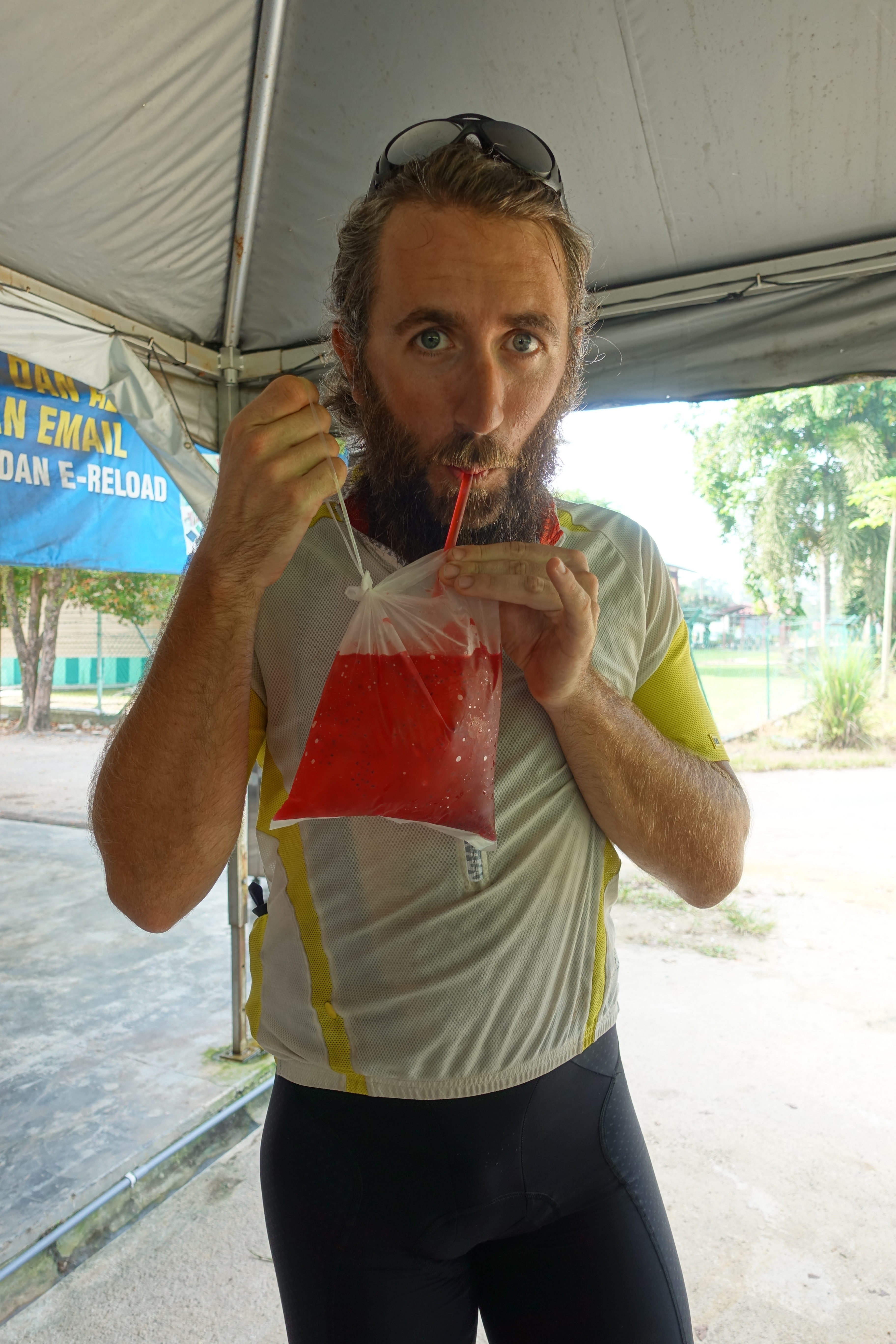
9am and already looking for electrolytes. Those juices (it’s a lot of sugar and chemicals, not many fruits!) are sold everywhere in the evening shortly before the Iftar (break of fasting) – that place was mysteriously open in the morning. The lady took pity on us and gave us some local crepes!

Breaks also mean picture time! (heat exhaustion affects your ability to think…but I swea(r)t a polar-bear was hiding there  )
)
Another way to seek refuge from the heat was to cycle up to the Cameron Highlands, at an average height of 1600 meters above sea level. What was once a retreat for many British a century ago is now a holiday destination for thousands of Malaysians and tourists, alpine-inspired mega hotels and all. Due to its climate, the Highlands is also home to tea plantations and greenhouses that provide Malaysia with ‘exotic’ fruits such as strawberries. Initially, Cédric an I thought we’d forgo the 2000m climb up to the highlands, but as the days in Malaysia progressed, the idea of cool, enjoyable air became too tempting. The idea of cycling across Kuala Lumpur on 2×4 lanes highways made the choice even easier! From Sungai Koyan, we cycled up to the Cameron highlands loaded with 15 liters of water for the journey. Once the climb became difficult, Cédric and I were taking water breaks and seeking shade literally every 3 km (or 30 minutes…) with our shirts completely drenched with sweat.
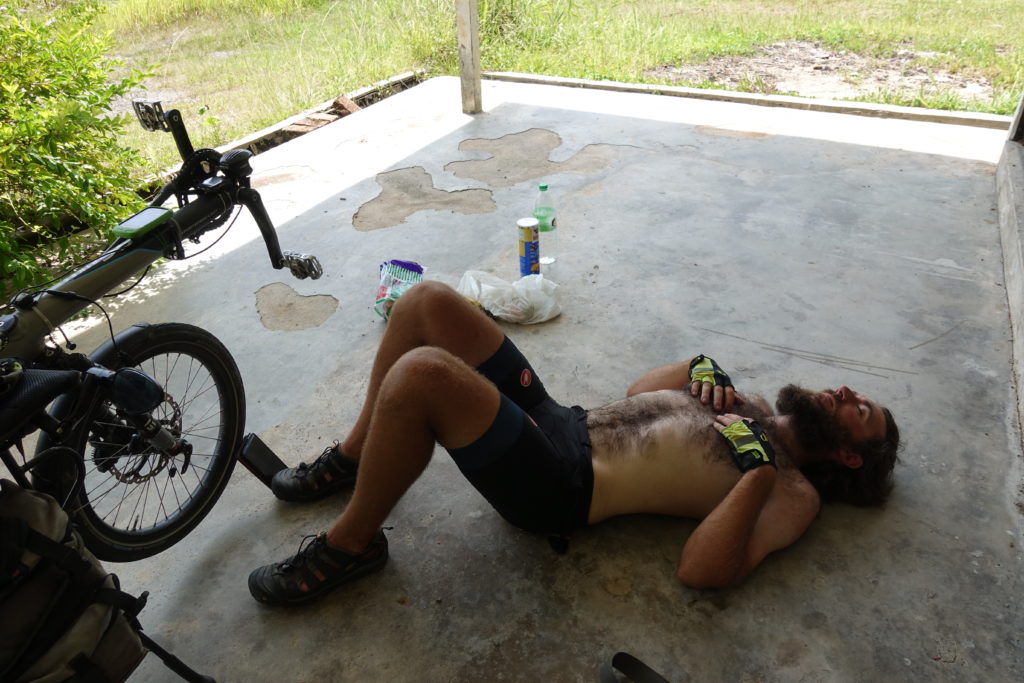
A snooze at lunch – halfway up to the highlands! We had a tough climb of over 1600mD+ in a burning sun that day
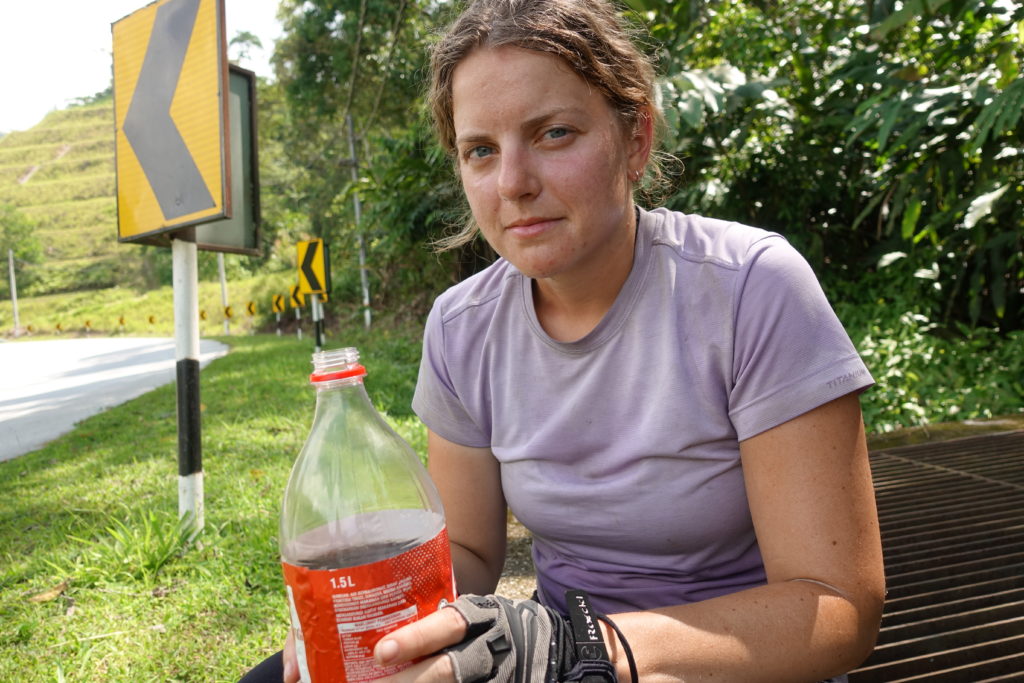
Cassie wondering what the hell is that never ending hill (total over 80km ascent: a Malay at the bottom, probably not very aware about cycling told us that on a bicycle it would take very maximum 2h – it just took us 6h45 riding time)!
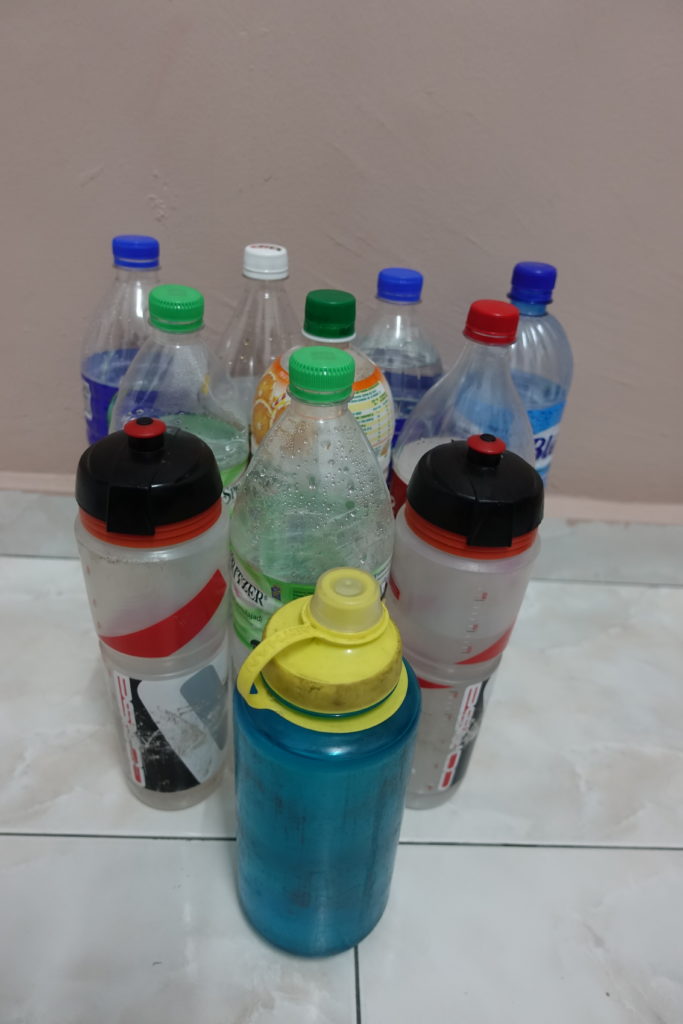
Liquid consumption for the day (also, not counting before and after the ride – over 20l for both of us on that day!)
We made it up to Ringlet in the late afternoon and took the first accommodation that we could find – and were surprised when we noticed that the room didn’t include an air conditioner (every single house has this device in Malaysia, and car drivers seem to never switch off their engines, probably worries that the AC would not start again!). However, the air began to cool in the evening and the morning air was still fresh (almost chilly, we were not used to a bitterly cold 20°C!) when we cycled up towards Tanah Rata around 9am the next day. We spent the rest of the day on a rented scooter (being not excited to have to cycle up and down the hills to various viewpoints on a rest day) and zipped up and down the hills to check out tea plantations. The evening, once again, was enjoyable and cool.
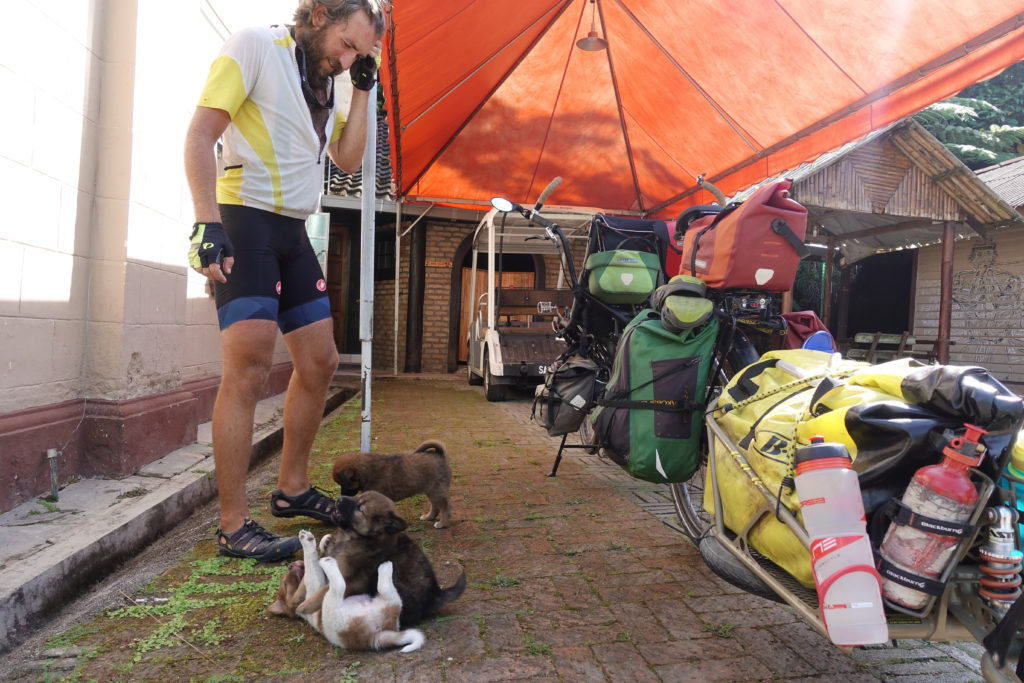
“Dumb puppies will become dumb dogs one day – and if you ever try to chase me, you’ll enjoy my shoe in your face”. Not a fan of dogs…
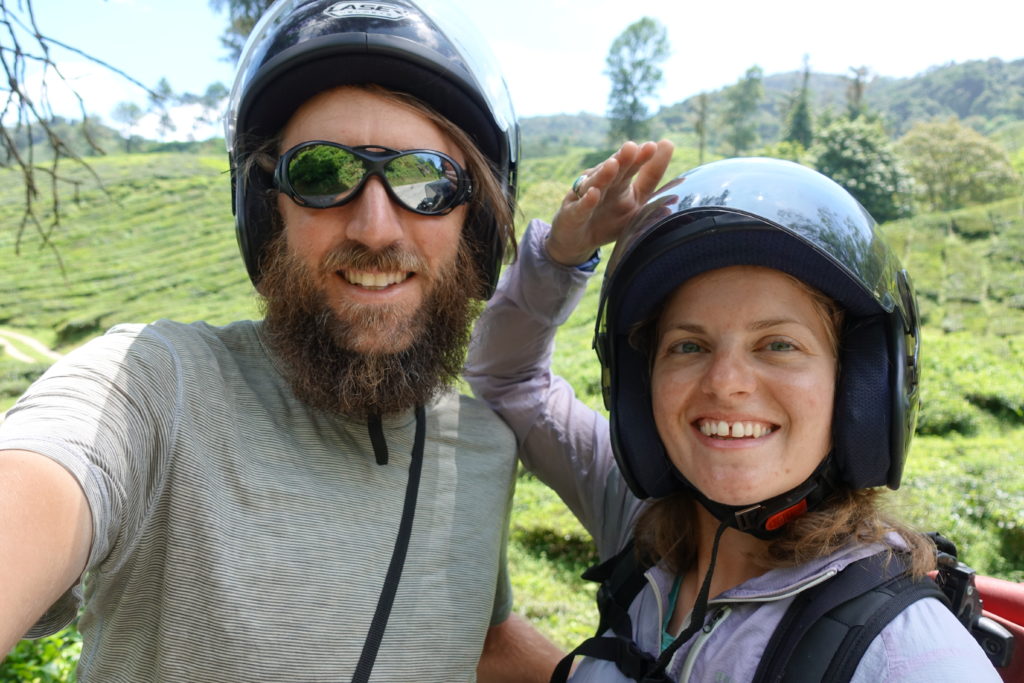
Rest day is a rest day: let’s try with an engine (hint: the saddle is even worse, and it’s almost as wearing…)
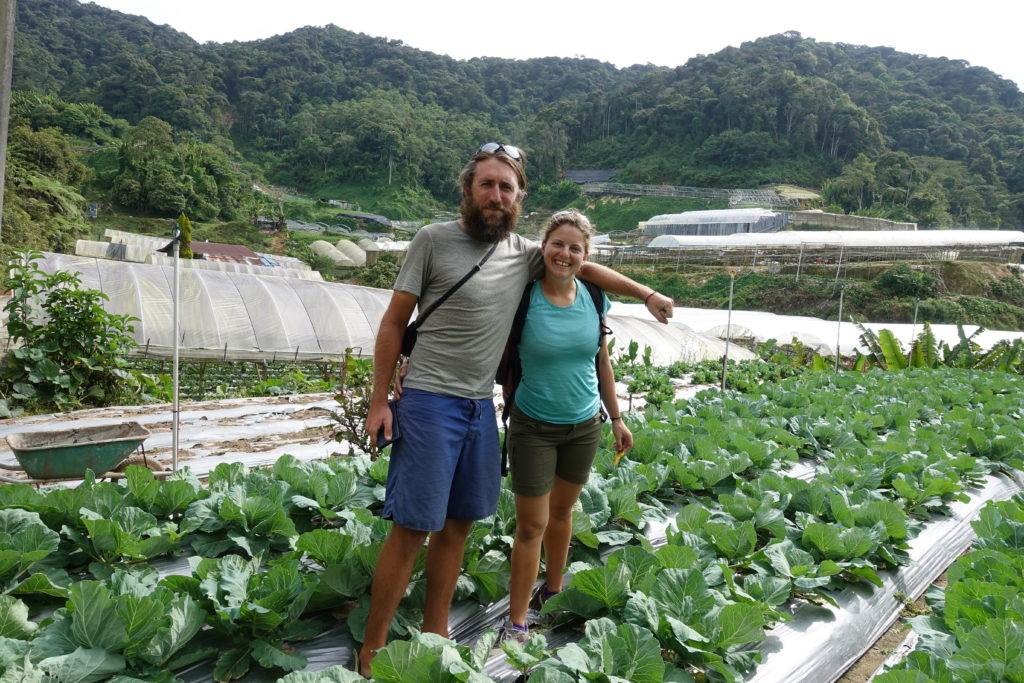
A lot of tourists come here to discover some exotic fruits (strawberries, apples, etc.) – the farmer here really wanted us to take a picture of cabbages…

Construction in Brinchang – more mega hotels. Malaysia has a small tendency to ruin the landscape with seriously ugly buildings (think of a 20 floors, 300m long, pure concrete-made “idyllic” Swiss chalet…)
The next morning, Cédric and I started our decent back down into Malaysia’s low lands. On the way down, we had the chance to meet other cyclists (who were on a scooter and mission to get a vital bike part in Ipoh) and were able to concurrently film each other while making the big descent at 60kph. While Cédric and I were getting lunch at the bottom of the road, I was already reminiscing on how cool the temperatures were in the Cameron Highlands, wishing that this region could have been a bit bigger.
Descent, seen from the scooter:
Seen from the bike:
]]>
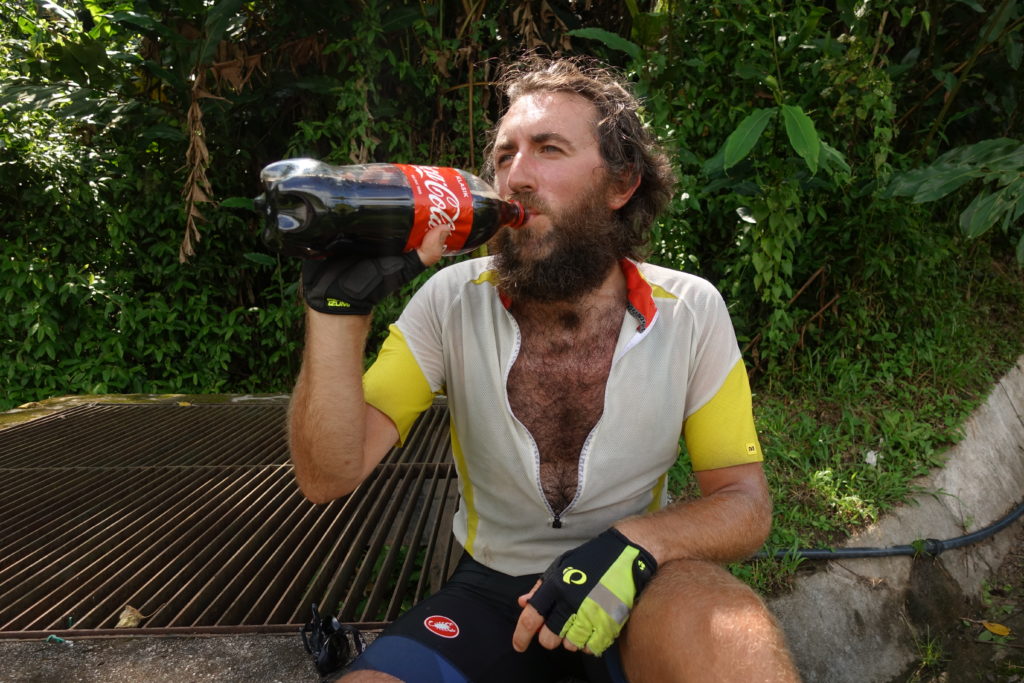
Coke is a very important part of our diet during rough days – here going up to the Cameron Highlands
Our first 24 hours in Malaysia, Cédric and I didn’t notice much difference because the town of Kulai had a strong mix of Malay, Chinese, and Indian populations (the latter two not observing Ramadan). Once we started riding towards the west coast, however, it became apparent that a lot of roadside stalls were shuttered, with plastic chairs and tables stacked along a wall. Around lunchtime, we rode through village of Api Api in desperate search of food. Nothing except for a small market was open, so Cédric and I resorted to eating peanut butter sandwiches (aka. okay but not exciting) under the shade of a bus stop. That night in Rengit, another small town, we also had trouble hunting down dinner (and later, breakfast… we learned that most Malay restaurants are closed throughout Ramadan). After being rather unsuccessful and resorting to gas station instant noodles, we devised a plan: plan to eat in bigger towns, not villages, and don’t be choosy whenever there’s an open restaurant – cooking is not wished in SE Asia (it would end up being more expensive and a lot less healthy/tasty), and chips or snacks at a gas-station not very enjoyable long term.
A common accommodation type in Malaysia are the “homestays” (a Bed&Breakfast without the breakfast – you can get that outside in the street), and it seems that the Ramadan month made some people more religion sensitive (particularly in the southern part) by accepting only Muslim hosts. That quickly made our trip focus more on the Malaysian minorities (they still make up 50% of the population altogether), and unfortunately less on Malay-Malaysians (this post may be confusing, everyone is Malaysian, just some for a few more generations).
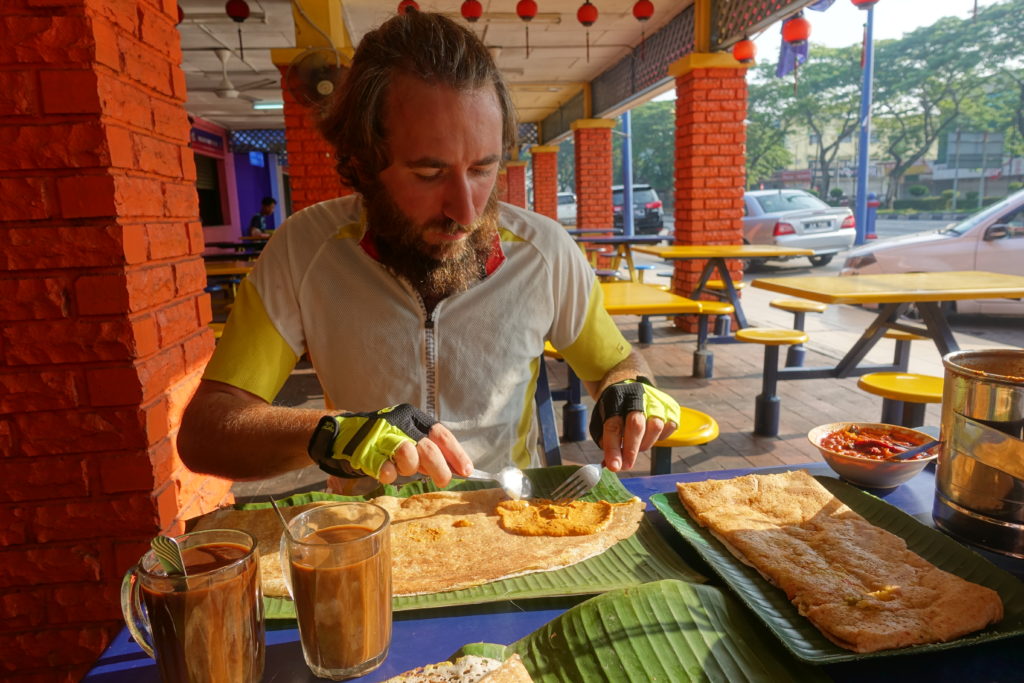
Luckily we stuffed ourselves with thosi in Kulai. Also shout out to the guy who bought this breakfast for us!
For lunch the next day, we had a lot more success at a Chinese restaurant in Batu Pahat. As the days progressed in Malaysia, Cédric and I became more perceptive to indications about whether we’d be able to find food: the presence of Chinese or Tamil schools (found with our map apps, it let us know that the town had a diverse population) and shops with a lot of people lingering around in the shade (we’d bike slowly through the main street looking into each storefront). The better we got with knowing where the restaurants were, the more we increased our food intake – by the end of our trip through Malaysia, we were able to find a second breakfast of coffee and roti with ease and the correct timing (around 10am). The name of the town also gives a good hint of the cultural background of the town – larger cities are mixed, but smaller towns inland are fairly recent (mid-20th century). “Manchis” is for example mostly Chinese (and thus still very lively during the Ramadan), whereas “Sinpang Pelangai” about the same size, a few kilometers before was completely deserted without a single shop open (it’s most Malay).
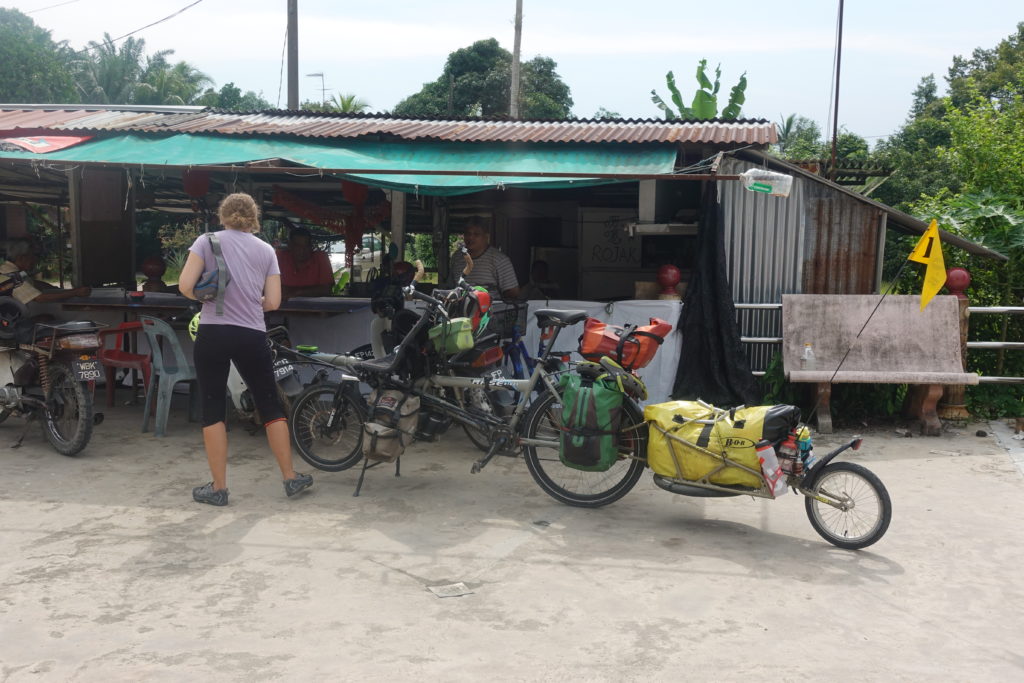
Here, we found a few people hiding in the shady Café, playing mahjong next to a Buddhist temple- indicators for snacks and coffee.
Cycling through Malaysia during Ramadan also made Cédric and I very aware of the country’s different cultures (particularly because we relied heavily on Malaysia’s diversity to prevent us from eating peanut butter sandwiches and ramen noodles for every meal). The Chinese and Indian populations are not recent immigrants, they have been in Malaysia for several generations and are Malaysian citizens. These groups retain a strong cultural identity and speak their ancestral dialect in addition to Malay (and for many, English). However, that doesn’t mean that these three groups are segregated from one another – we saw everyone come out for the Ramadan evening markets and patron the same restaurants. Overall, it seems like the Chinese community is the most entrepreneur and manages the larger businesses, whereas the Malays have a stronger political and cultural influence in the country. Indians are a smaller community and are not present in every town. We also noticed some other communities from much more recent migrants, from poorer Asian countries – notably Bangladeshis in the fruit and vegetable farms of the highlands (and apparently often cheap exploited undocumented labor…).
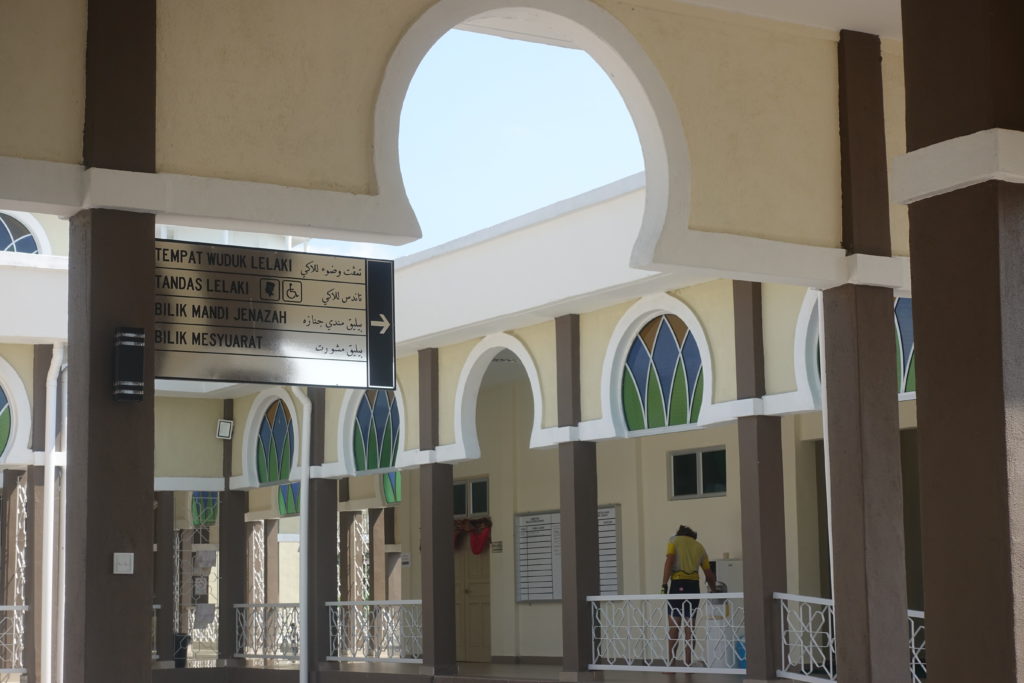
A mosque – great for shade, clean bathrooms, splashing cold water on the head and talking to people coming out of prayers.
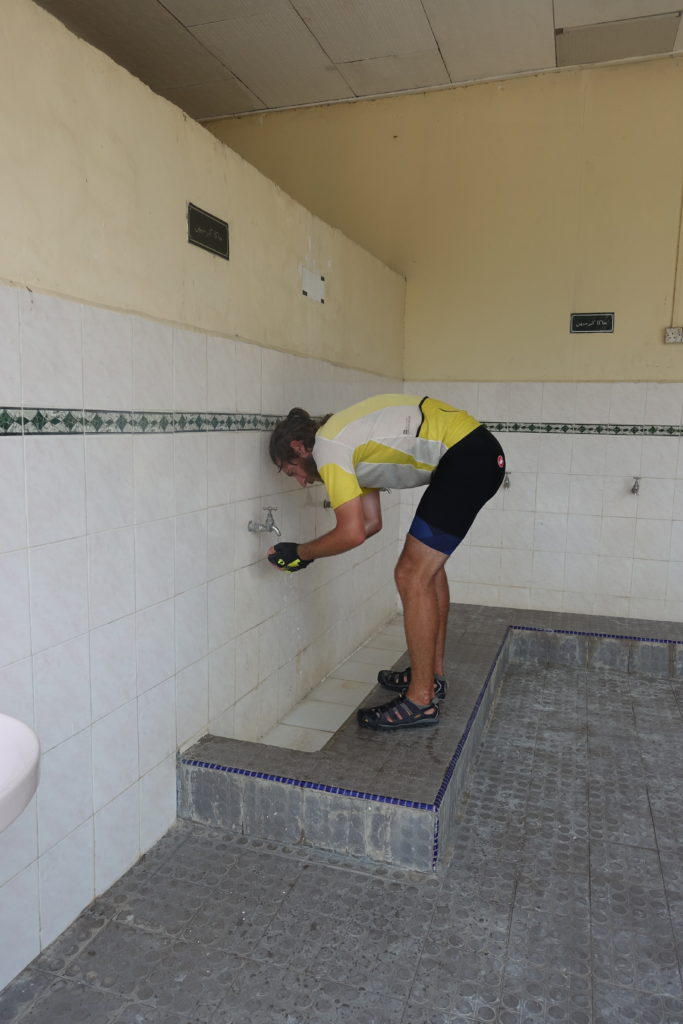
Another useful feature of mosques when it’s hot outside – the size of installations is not always particularly adequate for Cedric’s size in Asia
In addition to Malaysian restaurants, it appears many Malay-owned shops and businesses were closed during the 4 weeks of the Ramadan. Cédric and I could understand this, given how hot the weather was and people not being able to drink liquids during the day. We did find that some fasters weren’t as strict as they would like you to believe – while hanging around in the shade of a Buddhist temple one day, we met a policeman who wanted to drink his iced coffee and smoke a cigarette (also forbidden during the fast) without the community knowing. In a surrealist discussion, he told us that he was worried that other Muslims would take pictures of policemen not being very respectful of the rules… and shorty after told us that his paycheck of 5000 Ringgit per month (about 1500US$ or 1200€ – double the average income in Malaysia, and 7 times higher than farm workers we talked to a few days later) was not enough, and unless he would get a raise up to 10.000 Ringgit/month, he would have to keep on accepting bribes from infringing car drivers. We discovered with him then that the best place to hang out for a snack, a smoke or a drink is behind the local Chinese community temple – and that was also one of our regular favorite location to get some shady quiet spot to rest.
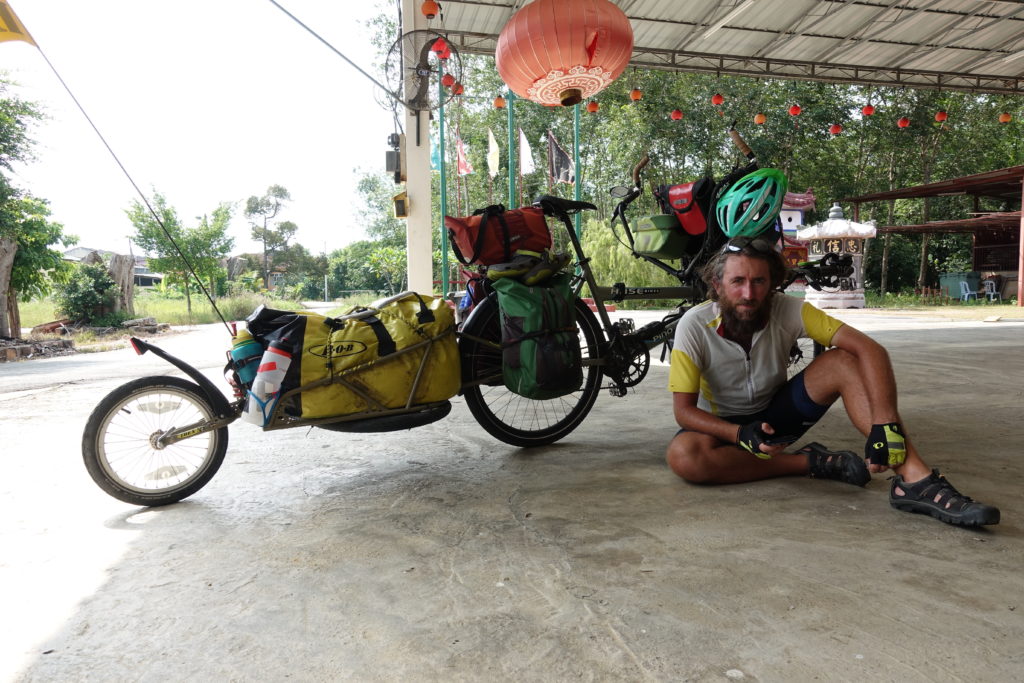
Hanging around a temple in Manchis (aka. the local slightly venal policemen’s favorite drinking spot during Ramadan)
Given the number of plastic bottles and plastic glasses on the road at the entrance of towns, we noticed that during the Ramadan getting a sip of cold water while driving is fine… as long as you throw every evidence out of your car before your relatives and friends could see you! The usual combo of religions (Hindu, Buddhist, and Muslim) and probity… some rules for the others, but always a good exception for your own case.
Although Cédric and I felt like our interactions with the Malays were somewhat limited during this time, we were able to take part in some Ramadan traditions. On our second day in Malaysia, we noticed that evening Ramadan bazaars were present in almost every town and city – which was the perfect opportunity to buy sweets and sugary drinks. They however only open in the evening, a few hours before sunset – great for dinner, not so much for the rest. Keeping cooked food for the next day also doesn’t seem like a wise idea, with a hot and humid weather being a perfect environment for bacteria…or for ants, absolutely the greatest creatures to always find a way to get into your food. While we were in Sungai Koyan walking past a gathering, Cédric and I were also invited to the Iftar, the daily breaking of the fast at sunset. We were both completely taken aback and humbled that this group of people would want us to celebrate with them.
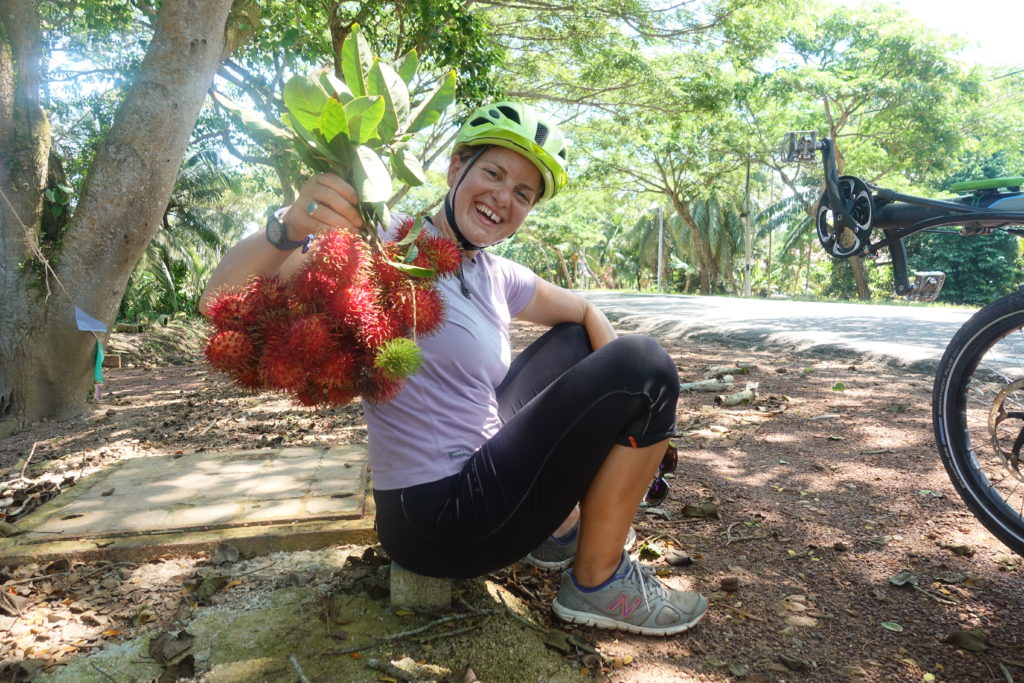
We were given these rambutans while taking a break on the side of the road – almost on a daily basis, the Malaysians talked to us, shared parts of their culture, and surprised us with treats.
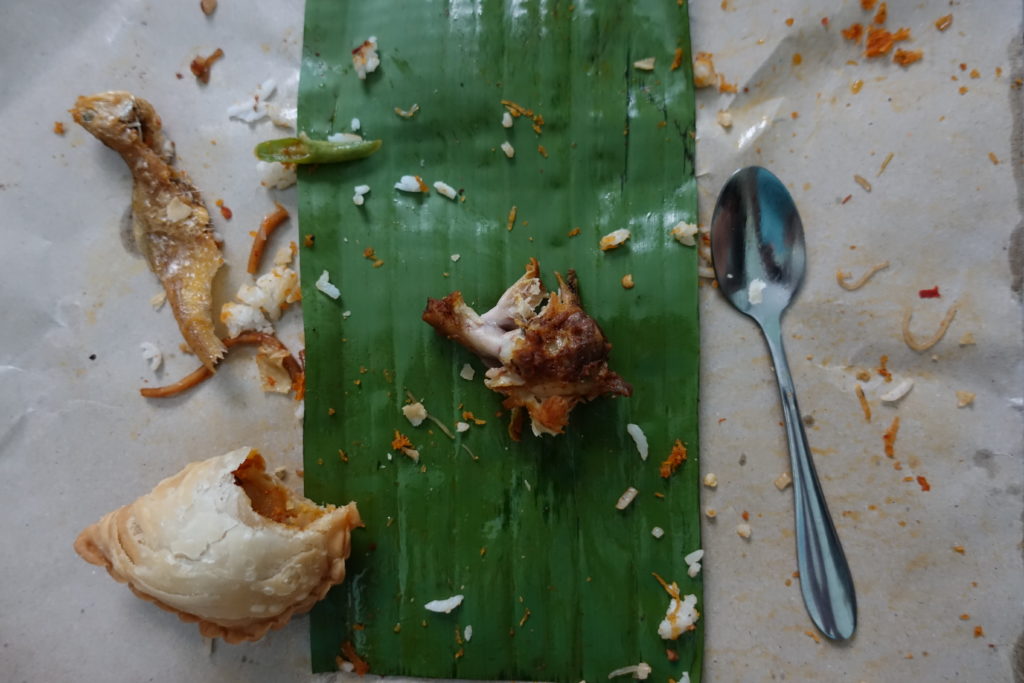
The remnants of a dinner given to us by our guesthouse host while she was still fasting – that became dinner number 1 out of 3 that evening – with everyone in Sungai Koyan inviting us!
]]>
Once we arrived in Singapore, Cédric and I breezed through customs and got our luggage immediately, no surprise that this airport has been ranked best in the world for years! From there, we took a taxi to our home for the next three nights: Tree In Lodge, the famous hostel for cyclo-touring in Singapore. As soon as we dropped our gear in the room, it was time to set up the bike. With us not being accustomed to the heat and humidity, assembling the bike was a very sudorific 3-hour affair during the evening. While putting everything together, Cédric noticed that a screw in the kickstand had broken – most likely not in transit, but the screw had signs of fatigue after the thousands of kilometers vibrating and the hundreds of repetitive opening and closing the kickstand. It’s not the most critical item of the bike, but the tandem is so heavy and long that it’s really tricky to just put it on a wall or a tree – our kickstand is able to hold 100kg and thus really practical. As luck would have it, one of the side of the screw was loose enough to remove it with a key, but the other side was completely stuck in the metal body of the stand. After attempting with all available means to force it out, we decided to surrender for the night.
The next morning, Cédric and I continued our work on the bike: he and a manager from the hostel were trying to drill out the screw while I assembled our new rear dynamo light (the original one broke on our flight to Auckland). Since Cédric’s attempts weren’t so successful – we managed to heat the drill and break the bit after 1h fighting with the metal of the screw – and had drilled only about 1/10th of a millimeter, we were recommended to go to a bike shop in downtown Singapore to see if they could help. We used the opportunity to leave the hostel and start seeing some sights in the city – the afternoon was spent wandering around Little India, the Arab district and picking up necessary items for the next part of our journey. We found electronics shops for an additional battery pack and a small hard drive (too many pictures and videos for the computer!) and a Decathlon (our merino underwear DID NOT hold up and weren’t even used for cycling – a fellow cyclist, Nino, who ended his 3-year tour at the hostel gave them the awesome name of ‘Scheiß-breaker’ instead of Icebreaker). The bike shop also managed to get the screw out without damaging the kickstand – we don’t know how they did, it apparently also took them a while, but everyone agreed that Hase-Bikes uses top-quality alloys for its screws. In the evening, Cédric and I had dinner with SK, the owner of the hostel, and Nino. Both had a great deal of knowledge about the next phase of our trip and gave us a lot to think about in terms of routes and countries. This made us consider shortening our stay in SE Asia to extend it in central Asia and in the Caucasus region.
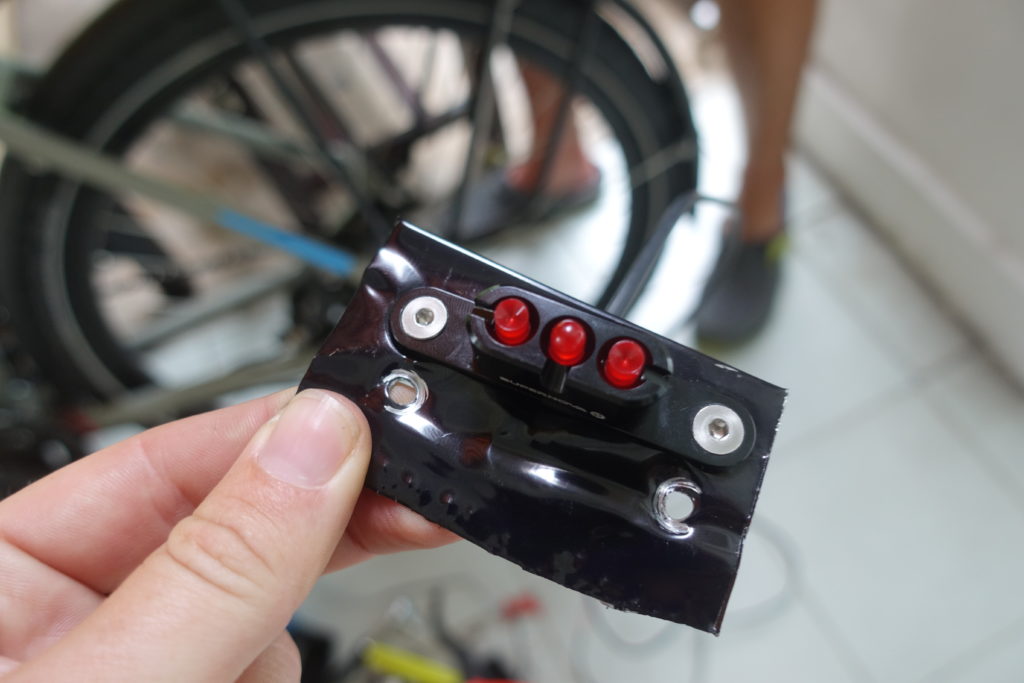
We might have bought the wrong type of rear light, but at least it came in a metal box that would allow us to McaGyver a solution
We had another day in Singapore, thankfully without any bike maintenance, but it began with a heavy morning downpour. Once the rain stopped, Cédric and I ventured out into other parts of downtown Singapore, like Chinatown, Gardens by the Bay, and the business district. I liked the juxtaposition seeing the small shophouses with looming skyscrapers and apartment buildings in the background. Cédric liked how Singapore was a good transition from Australia to Southeast Asia. That night, we had dinner once again with the guys from the hostel (meals at the food stalls around the corner were about 3 to 4 €/$, much cheaper than NZ and Australia) and prepared all our things for the morning. We were nevertheless happy to leave Singapore and be cycling on the roads again.
Although Cédric and I had planned to begin our journey to Malaysia early to beat the heat and humidity, the weather had other plans. We awoke to yet another morning downpour that had partially flooded the hostel and cut the power, stalling our plans, but this give us the time to linger around and fill up with a second breakfast. By mid-morning, the rain let up and Cédric and I bid our farewells as we cycled to the Woodlands/Johor Bahru border. Surprisingly, we reached the border without getting lost or taking a wrong turn – the Singapore island is tiny but covered with big buildings and thus roads – and then joined the hoards of motorcyclists crossing the border. The second part of the day, now in Malaysia, became extremely hot once the clouds disappeared. We had to navigate busy roads and expressways but finally made it to our hotel in Kulai. Once showered, we explored the city (goal: find a SIM card) and ate dinner #1 (Subway…a bit shameful in SE-Asia but we couldn’t find anything else at 5pm), then dinner #2 (a big chunk of tofu at a Chinese restaurant). First day in Malaysia and quickly realizing that the Ramadan will make the next few weeks a little more challenging with food….
]]>Here’s a translated version of the article: https://tinyurl.com/y7z2yuk5 – or if you read Chinese: http://www.chinapress.com.my/?p=1269336 .
I would like to add that this is more proof (a video) that I’ve taken over the controls! And thank you to the nice guys sitting next to us at lunch!
]]>